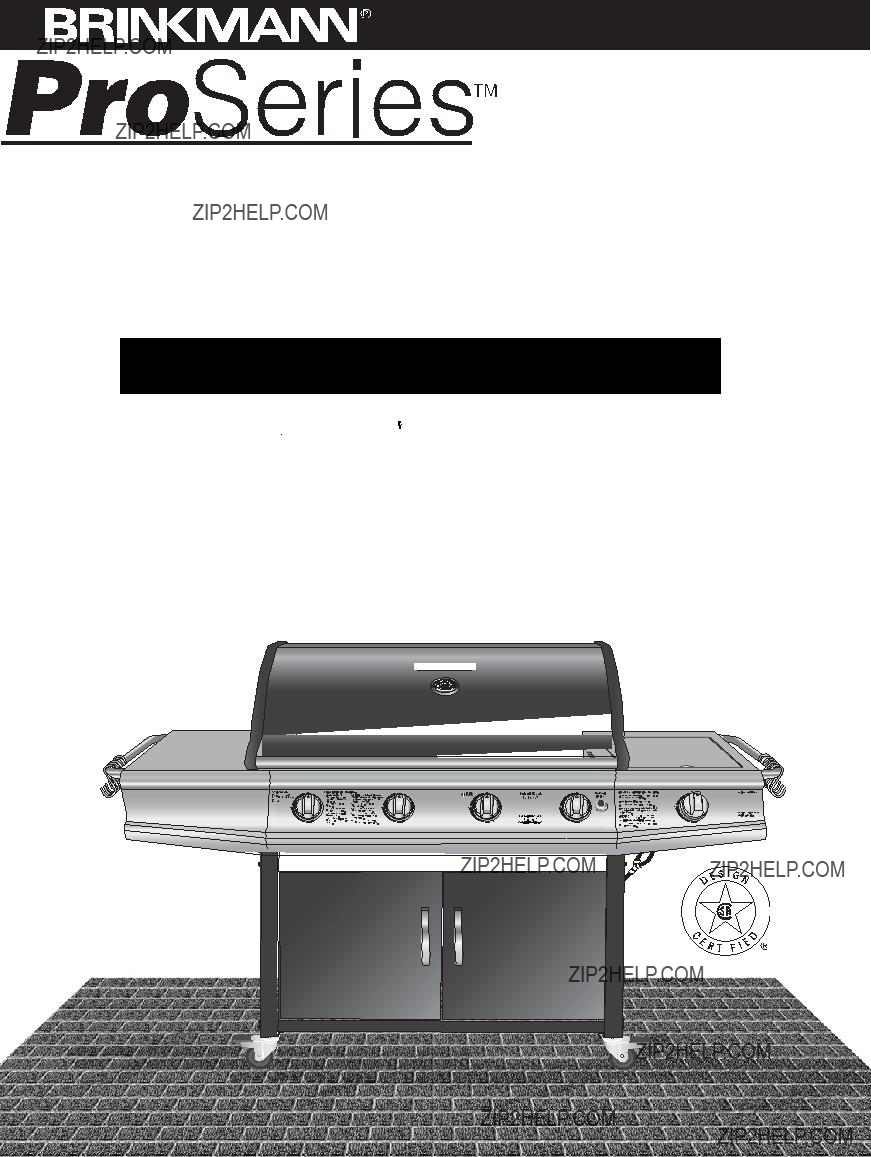
Alta Resistencia
OWNER???S MANUAL / MANUAL DEL PROPIETARIO
ASSEMBLY AND OPERATING INSTRUCTIONS
INSTRUCCIONES DE ARMADO Y OPERACI??N
SAVE THIS MANUAL FOR FUTURE REFERENCE
GUARDE ESTE MANUAL PARA REFERENCIA FUTURA

Alta Resistencia
OWNER???S MANUAL / MANUAL DEL PROPIETARIO
ASSEMBLY AND OPERATING INSTRUCTIONS
INSTRUCCIONES DE ARMADO Y OPERACI??N
SAVE THIS MANUAL FOR FUTURE REFERENCE
GUARDE ESTE MANUAL PARA REFERENCIA FUTURA
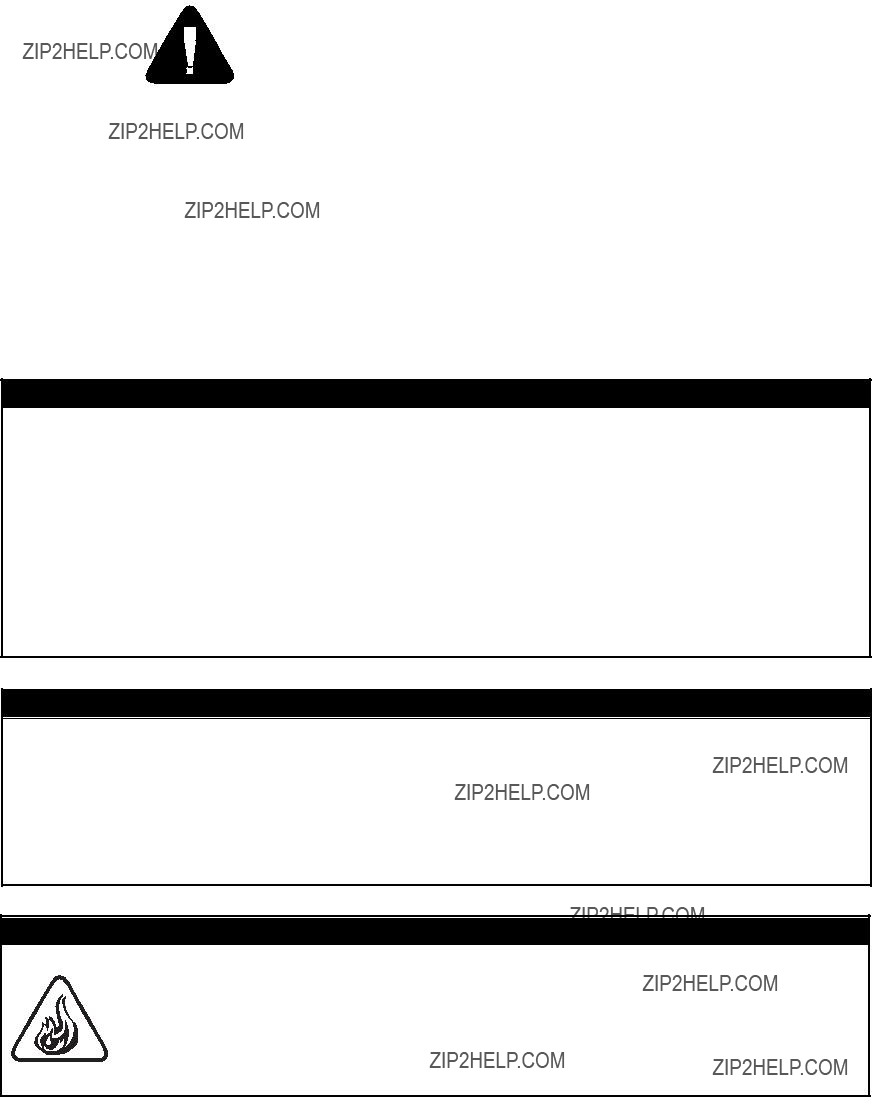
IMPORTANT SAFETY
WARNINGS
WE WANT YOU TO ASSEMBLE AND USE YOUR GRILL AS SAFELY AS POSSIBLE.
THE PURPOSE OF THIS SAFETY ALERT SYMBOL  IS TO ATTRACT YOUR
IS TO ATTRACT YOUR
ATTENTION TO POSSIBLE HAZARDS AS YOU ASSEMBLE AND USE YOUR GRILL.
WHEN YOU SEE THE SAFETY ALERT SYMBOL 
PAY CLOSE ATTENTION TO THE INFORMATION WHICH FOLLOWS!
 READ ALL SAFETY WARNINGS AND INSTRUCTIONS CAREFULLY
READ ALL SAFETY WARNINGS AND INSTRUCTIONS CAREFULLY
BEFORE ASSEMBLING AND OPERATING YOUR GRILL.
 DANGER
DANGER
IF YOU SMELL GAS:
1.Shut off gas to the appliance.
2.Extinguish any open flame.
3.Open Lid.
4.If odor continues, keep away from the appliance and immediately call your gas supplier or your fire department.
 WARNING
WARNING
1.DO NOT store or use gasoline or other flammable liquids or vapors in the vicinity of this or any other appliance.
2.An LP cylinder not connected for use shall not be stored in the vicinity of this or any other appliance.
 DANGER
DANGER
???DO NOT store a spare LP gas cylinder under or near this appliance.
???Never fill the cylinder beyond 80% full.
???A fire causing death or serious injury may occur if the above is not followed exactly.
1

TABLE OF CONTENTS
General Warnings . . . . . . . . . . . . . . . . . . . . . . . . . . . . . . . . . . . . . . . . . . . . . . 3 Installation and LP Cylinder Specifications and Safe Use. . . . . . . . . . . . . .
 DANGER: Indicates an imminently hazardous situation which, if not avoided, will result in death or serious injury.
DANGER: Indicates an imminently hazardous situation which, if not avoided, will result in death or serious injury.
 WARNING: Be alert to the possibility of serious bodily injury if the instructions are not followed. Be sure to read and carefully follow all of the messages.
WARNING: Be alert to the possibility of serious bodily injury if the instructions are not followed. Be sure to read and carefully follow all of the messages.
 CAUTION: Indicates a potentially hazardous situation which, if not avoided, may result in minor or moderate injury.
CAUTION: Indicates a potentially hazardous situation which, if not avoided, may result in minor or moderate injury.
FOR COVERS, ACCESSORIES AND OTHER PRODUCTS, PLEASE VISIT US ONLINE AT: www.brinkmann.net
FOR GRILL WARRANTY REPLACEMENT PARTS, PLEASE VISIT US AT: www.grillpartsonline.com
2
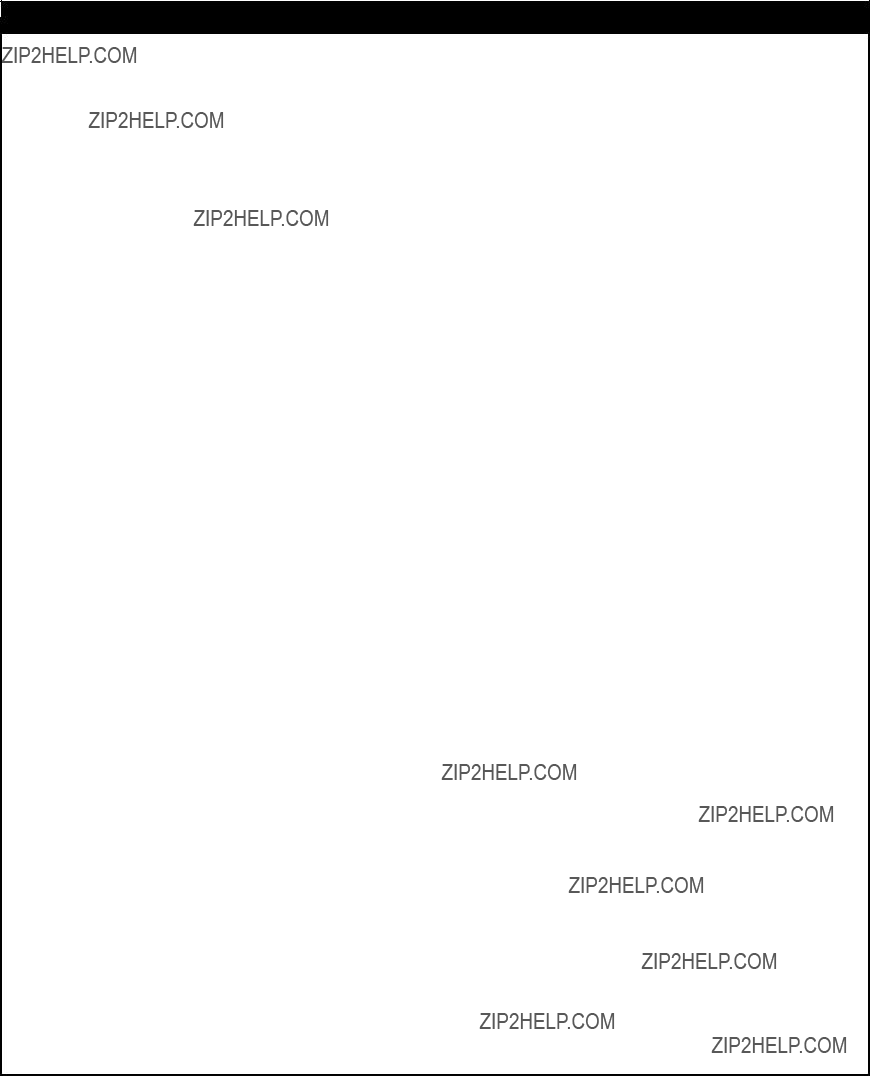
GENERAL WARNINGS
 WARNING
WARNING
???Never use natural gas in a unit designed for liquid propane gas.
???Never use charcoal or wood briquets in a gas grill. Flavoring chips must be contained in a metal smoking box to contain ash and prevent fires.
???Leak test all connections before first use, even if grill was purchased fully assembled and after each tank refill.
???Never check for leaks using a match or open flame.
 CAUTION: Strong odors, colds, sinus congestion, etc. may prevent the detection of propane. Use caution and common sense when testing for leaks.
CAUTION: Strong odors, colds, sinus congestion, etc. may prevent the detection of propane. Use caution and common sense when testing for leaks.
???Always keep your gas grill free and clear of gasoline, lighter fluid, paint thinner, or other flammable vapors and liquids or combustible materials.
???Always check the grill prior to each use as indicated in the
???DO NOT obstruct the flow of combustion or ventilation air.
???Never place more than 15 pounds on the side burner. DO NOT lean on the side burner shelf.
???Keep children and pets away from hot grill. DO NOT allow children to use or play near this grill.
???DO NOT leave the grill unattended while in use.
???DO NOT allow the gas hose to come in contact with hot surfaces.
???DO NOT allow grease from drain hole to fall on hose or valve regulator assembly.
???Keep any electrical supply cords away from water or heated surfaces.
???Keep a fire extinguisher on hand acceptable for use with gas products. Refer to your local authority to determine proper size and type.
???For household use only. DO NOT use this grill for anything other than its intended purpose.
???DO NOT use while under the influence of drugs or alcohol.
???Grill is hot when in use. To avoid burns:
???DO NOT attempt to move the grill.
???Lock the wheels so the unit does not accidentally move.
???Wear protective gloves or oven mitts.
???DO NOT touch any hot grill surfaces.
???DO NOT wear loose clothing or allow hair to come in contact with grill.
 USE CAUTION AND COMMON SENSE WHEN OPERATING YOUR GAS GRILL.
USE CAUTION AND COMMON SENSE WHEN OPERATING YOUR GAS GRILL.
FAILURE TO ADHERE TO THE SAFETY WARNINGS AND GUIDELINES IN THIS
MANUAL COULD RESULT IN SEVERE BODILY INJURY OR PROPERTY DAMAGE.
SAVE THIS MANUAL FOR FUTURE REFERENCE.
3
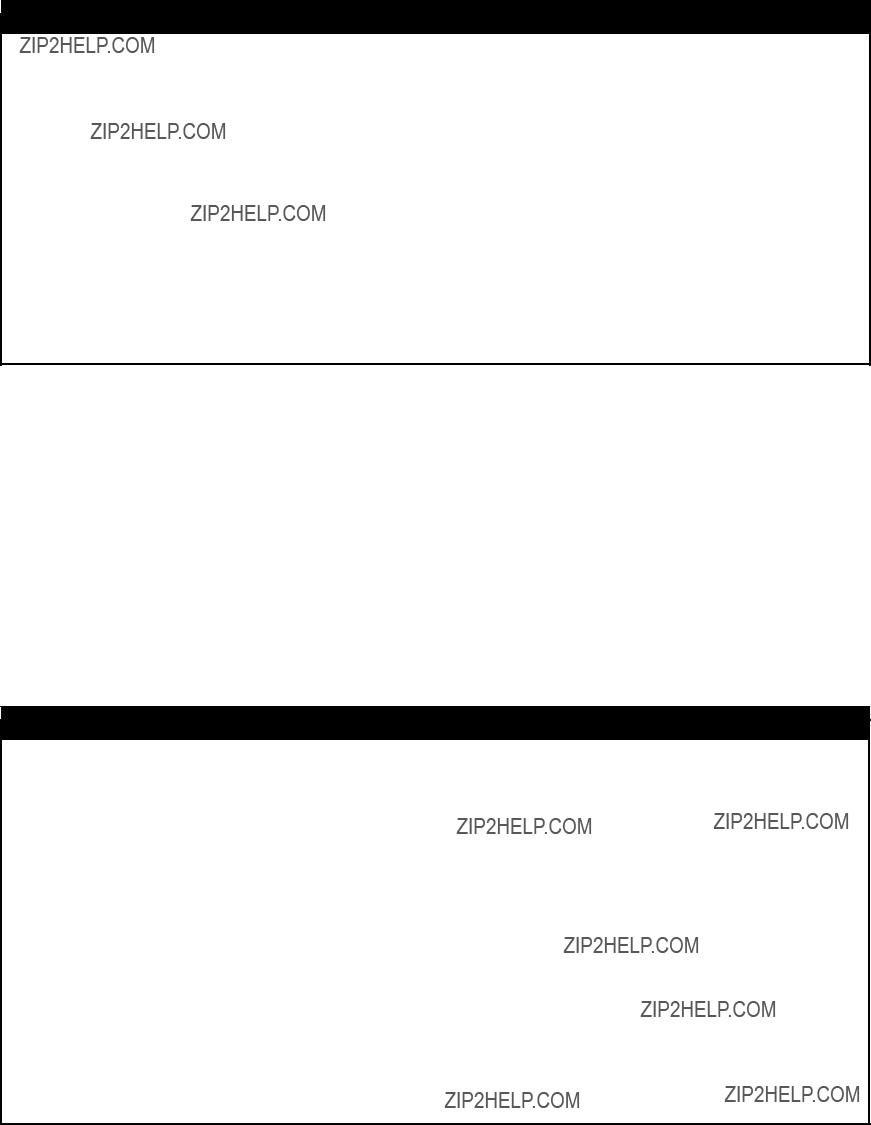
 WARNING
WARNING
???FOR OUTDOOR USE ONLY. DO NOT operate indoors or in an enclosed area such as a garage, shed or breezeway.
???Use your grill OUTDOORS in a well ventilated space away from dwellings or other buildings to prevent dangers associated with gas accumulation and toxic vapors. We recommend your grill be situated at least 10 feet (3.1 m) from buildings. Not adhering to these clearances will prevent proper ventilation and may increase the risk of a fire and/or property damage, which could also result in personal injury.
???Maintain a minimum clearance of 36 inches (91 cm) between all sides of grill, deck railings, walls or other combustible material. DO NOT use grill under overhead unprotected combustible construction.
???DO NOT use or install this grill in or on a recreational vehicle and/or boat.
INSTALLATION INFORMATION:
The installation of this appliance must be in accordance with:
All applicable local codes, or in the absence of local codes, either:
???National Fuel Gas Code ANSI Z223.1 NFPA 54
???Natural Gas and Propane Installation Code: CAN/CGA B149.1
???Natural Gas Installation Code: CAN/CGA B149.1 (Canada)
???Propane Installation Code: CAN/CGA B149.2 (Canada)
To check your local codes, see your local LP gas dealer or natural gas company. This grill was not intended to be connected to a natural gas supply line. If an external electrical source is utilized, it must be electrically grounded in accordance with local codes, or in the absence of local codes, with the National Electrical Code, ANSI/NFPA 70, or the Canadian Electrical Code, CSA 22.1.
 WARNING
WARNING
LP GAS CYLINDER (NOT SUPPLIED WITH THIS GRILL)
The LP cylinder is available for purchase at the same location the grill was purchased.
The LP (Liquid Propane) gas cylinder specifically designed to be used with this grill must have a 20 lb. (9.1 kg) capacity incorporating a Type 1 cylinder valve and an
???This grill is designed to fit Worthington, Manchester or SMPC brand 20 lb. (9.1 kg) cylinders. Other brand DOT cylinders may fit this grill if the cylinder has similar dimensions of the top and bottom rings.
???DO NOT connect this grill to an existing #510 POL cylinder valve with Left Hand threads. The Type 1 valve can be identified with the large external threads on the valve outlet.
???DO NOT connect to a propane cylinder exceeding this capacity.
???DO NOT connect to a cylinder that uses any other type of valve connection device.
4
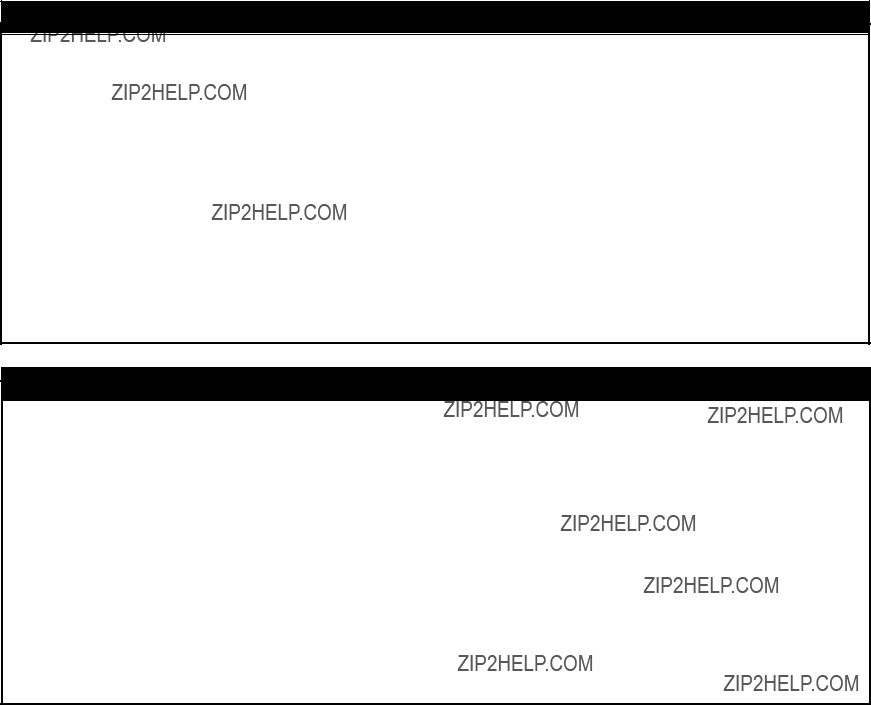
CYLINDER SPECIFICATIONS:
When purchasing or exchanging a cylinder for your gas grill, it must be constructed and marked in accordance with the specifications for LP gas cylinders of the U.S. Department of Transportation (DOT) or the National Standard of Canada,
The cylinder must also be equipped with:
???A
???A Type 1 valve that prevents gas flow until a positive seal is obtained.
???An arrangement for vapor withdrawal.
???A collar to protect the cylinder
???A safety relief device having direct communication with the vapor space of the cylinder.
???A listed
 WARNING
WARNING
???Turn off the cylinder valve when your grill is not in use.
???Handle the tank with care.
???Always secure the cylinder in an upright position.
???Never connect an unregulated LP gas cylinder to your grill.
???DO NOT expose LP gas cylinders to excessive heat or ignition sources.
???DO NOT store a spare LP gas cylinder under or near your grill.
???Allow only qualified LP gas dealers to fill or repair your LP gas cylinder.
???DO NOT allow the cylinder to be filled beyond 80% capacity.
???Read and follow all warnings and instructions that are on the cylinder and that accompany this product.
 DANGER
DANGER
???Never store a spare LP gas cylinder under or near your grill. This could cause excess pressure to be expelled through the vapor relief valve resulting in fire, explosion, or severe personal injury including death.
Note: PROPANE GAS IS HEAVIER THAN AIR AND WILL COLLECT IN LOW AREAS.
PROPER VENTILATION IS EXTREMELY IMPORTANT.
???Keep the ventilation opening(s) of the LP gas cylinder enclosure free and clear from obstructions and debris.
???DO NOT insert any foreign objects into the valve outlet. Damage to the
5
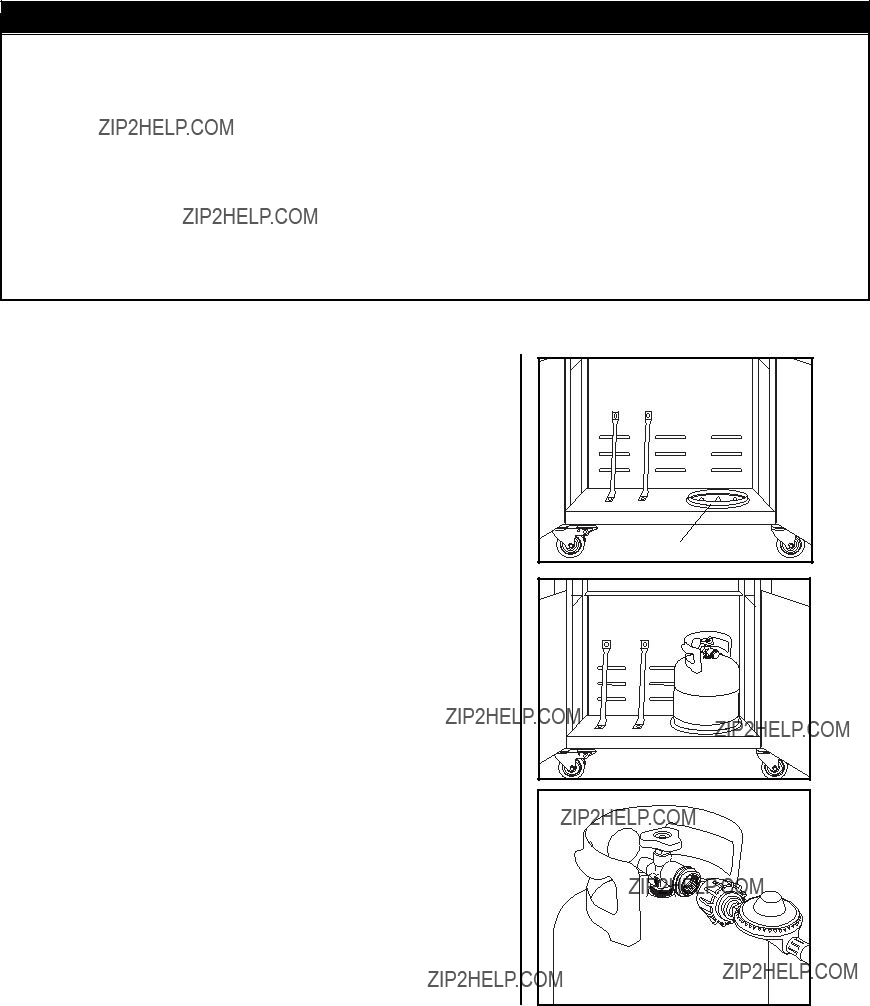
 WARNING
WARNING
FILLING THE LP GAS CYLINDER:
???Allow only qualified LP gas dealers to properly fill or repair your LP gas cylinder.
???New tanks should be purged prior to filling; inform LP gas dealer if you are using a new tank.
???DO NOT allow the cylinder to be filled beyond 80% capacity.
???Always use a protective cylinder cap when grill is not connected to cylinder.
???If you exchange a cylinder with a qualified exchange program, be sure the cylinder has a Type 1 valve and an
INSTALLING THE LP GAS CYLINDER ONTO THE GRILL:
1.Check that the cylinder valve is closed by turning the knob clockwise.
2.Place the cylinder into the tank holder in the bottom of cabinet.
3.Orient the cylinder such that the valve opening faces the side burner, and so that the hose is not kinked or damaged.
4.Attach or detach regulator to the LP gas cylinder only when cylinder is at rest in tank holder.
HOSE AND REGULATOR:
Your grill is equipped with a Type 1 connection device with the following features:
1.The system will not allow gas flow from the cylinder until a positive connection to the valve has been made.
Note: The cylinder valve must be turned off before any connection is made or removed.
2.A thermal device that will shut off the gas flow if the device is subject to temperatures above 240??F to 300??F (115??C to 150??C). If this should happen, remove the entire regulator assembly and dispose of properly. A replacement regulator assembly can be purchased by contacting customer service at
3.A regulator flow limiting device, when activated, restricts the flow of gas to 10 cubic feet per hour. If the flow limiting device is activated, perform Regulator Resetting Procedure .
REGULATOR RESETTING PROCEDURE
1.Turn burner control knobs to "OFF", turn off the cylinder valve and disconnect regulator from LP gas tank. Wait approximately two minutes.
2.Reattach regulator and slowly turn cylinder valve back on. The flow limiting device will now be reset.
6
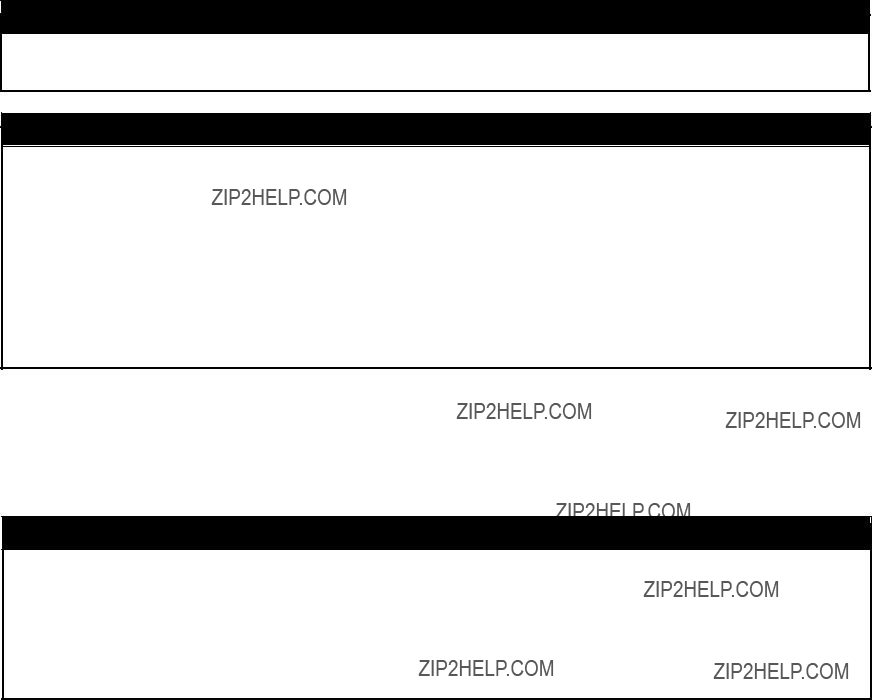
 WARNING
WARNING
???Never use your grill without leak testing all gas connections and hoses. See the section on "Leak Testing" in this manual for proper procedures.
 WARNING
WARNING
The pressure regulator and hose assembly supplied with your gas grill must be used.
???DO NOT attempt to connect it to any other fuel supply source such as a natural gas line.
???DO NOT use any other pressure regulator/hose assembly other than the one supplied with your grill. Replacement pressure regulator/hose assembly must be part No
???DO NOT attempt to adjust or repair the regulator. The regulator is designed to operate at a maximum output pressure of 11 inches of water column (2.74 kPa).
During assembly and/or replacement of the gas cylinder, keep the gas supply hose free of kinks and/or damage.
Visually inspect the hose assembly prior to each use for evidence of damage, excess wear, or deterioration. If found, replace the assembly before using your grill. Only the manufacturer's supplied replacement should be used.
 WARNING
WARNING
CONNECTING HOSE AND REGULATOR TO AN LP GAS CYLINDER
???Ensure the tank valve is CLOSED prior to connecting the LP gas cylinder to your grill. Turn the valve knob clockwise to properly close the valve. Read and follow all instructions and warnings on the supply hose safety tags. Read and follow all warnings in this manual concerning the safe use of LP gas cylinders and the hose and regulator before connecting cylinder to grill. Read and follow all warnings on the LP cylinder.
CONNECTING HOSE AND REGULATOR
1.Check that the cylinder valve is closed by turning the knob clockwise.
2.Check that the grill???s burner control knobs are in the "OFF" positions.
3.Remove the protective plastic cap from the cylinder valve and the connection device.
4.Hold regulator and insert the nipple of connection device into the LP cylinder valve outlet. Ensure that the device is centered properly.
5.Turn the large coupling nut clockwise by hand and tighten to a full stop. Take care not to cross thread the coupling nut onto the cylinder valve. Do not
Note: If you are unable to make the connection, repeat Steps 4 and 5.
6.Check that the hose does not contain kinks, does not contact sharp edges, and does not contact surfaces that may become hot during use.
7.Leak check all fittings before lighting your grill. See section on "Leak Testing" in this manual.
7
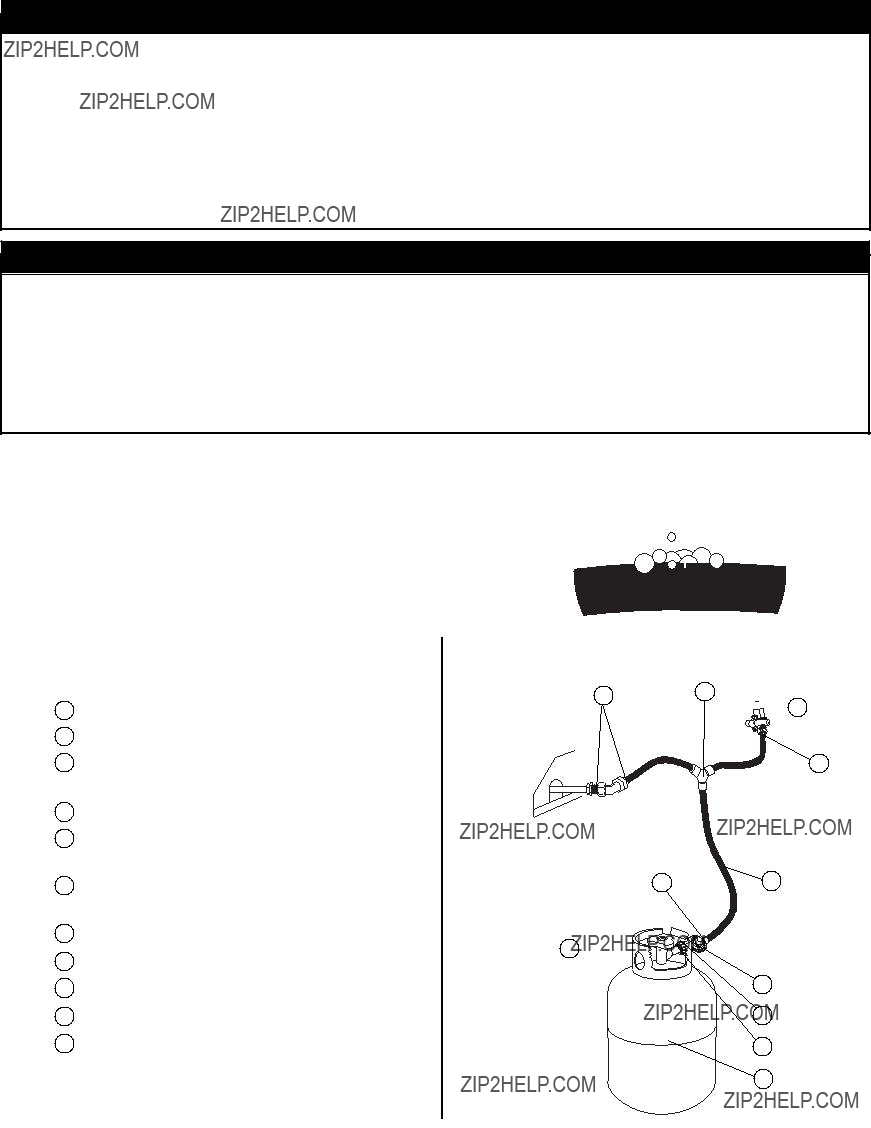
 DANGER
DANGER
LEAK TESTING:
To prevent fire or explosion hazard:
???DO NOT smoke or permit ignition sources in the area while conducting a leak test.
???Perform test OUTDOORS only in a well ventilated area.
???Never perform a leak test with a match or open flame.
???Never perform a leak test while the grill is in use or while grill is still hot.
 WARNING
WARNING
WHEN TO PERFORM A LEAK TEST:
???After assembling your grill and before lighting for the first time, even if purchased fully assembled.
???Every time the LP gas cylinder is refilled or if any of the gas components are replaced.
???Any time your grill has been moved.
???At least once per year or if your grill has not been used for more than 60 days.
CHECKING FOR LEAKS:
ASupply tank (cylinder) weld.
BConnection nut to tank valve.
CBack side of connection nut to brass nipple.
DBrass nipple connection into regulator.
ERegulator connections to gas supply hoses.
FGas supply hose connection to side burner valve assembly.
GSide burner valve stem cap.
HSide burner connection to hose.
I Hose connection to gas manifold.
JThe full length of gas supply hose.
KTank valve to cylinder.
IF
 G
G
H
EJ
K 
D
C
B
A
8

6.Check each place listed
7.Turn off gas supply at cylinder valve.
8.Turn on control knobs to release gas pressure in hose.
9.Turn control knobs to "OFF" position.
10.Tighten any leaking connections.
11.Repeat soapy water test until no leaks are detected.
12.Turn off gas supply at cylinder valve until you are ready to use your grill.
13.Wash off soapy residue with cold water and towel dry.
14.Wait 5 minutes to allow all gas to evacuate the area before lighting grill.
 CAUTION: DO NOT use the grill if leaks cannot be stopped. Contact a qualified gas appliance repair service.
CAUTION: DO NOT use the grill if leaks cannot be stopped. Contact a qualified gas appliance repair service.
Note: The leak test must be performed in an area that has adequate lighting in order to see if bubbles are developing.
 WARNING
WARNING
Property damage, bodily harm, severe burns, and death could result from failure to follow these safety steps. These steps should be performed after the grill has been assembled and prior to each use. DO NOT operate this grill until you have read and understand ALL of the warnings and instructions in this manual.
???Ensure that the grill is properly assembled.
???Inspect the gas supply hose for burns, chaffing, kinks, and proper routing before each use. If it is evident there is excessive abrasion or wear, or the hose is cut, it must be replaced prior the grill being used. Replace with hose and regulator, Model No.
???Leak check all gas connections and hose. See section on "Leak Testing".
???Ensure that all electrical supply cords are properly grounded. Keep any electrical supply cord and the fuel supply hose away from any heated surfaces. Hose should be at least 3 inches from hot surfaces.
???Position your grill on level ground in a well ventilated location, a safe distance from combustible materials, buildings and overhangs.
???Properly place the empty grease tray under the grease drain hole in the bottom of the grill to catch grease during use.
???DO NOT obstruct the flow of combustion and ventilation air.
9
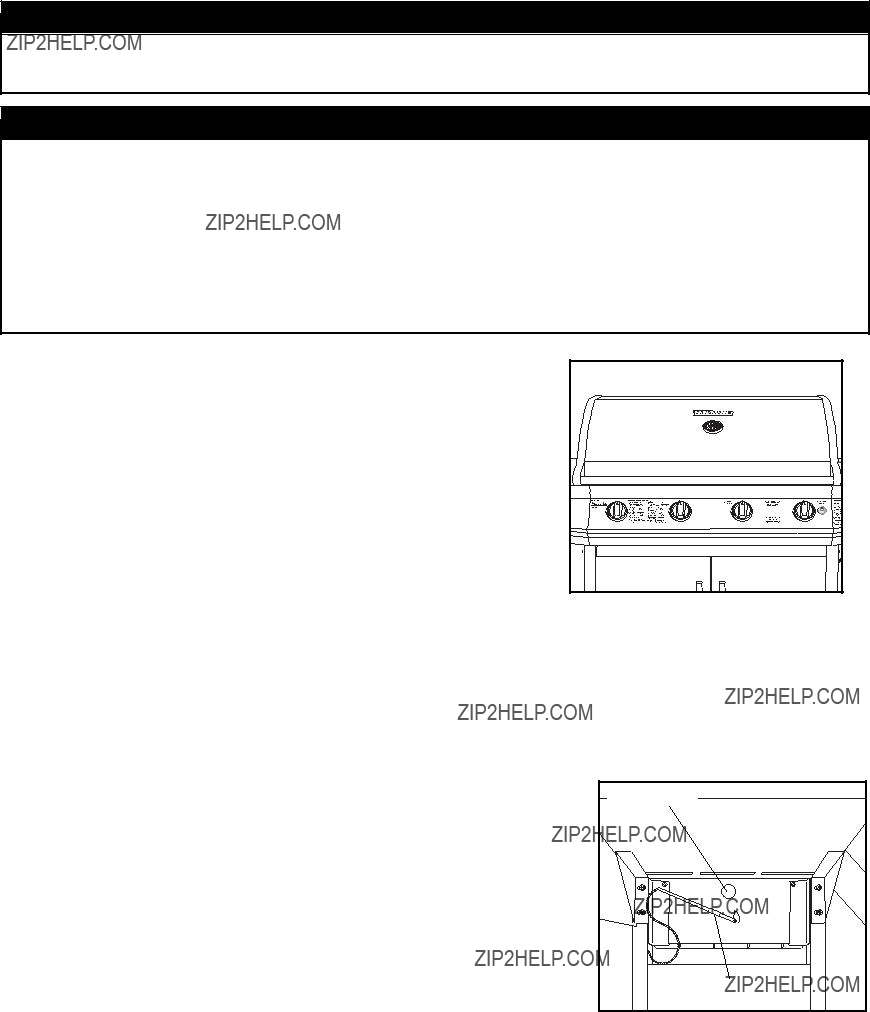
 WARNING
WARNING
Read, understand and follow all warnings and instructions contained in this manual. DO NOT skip any of the warnings and instructions contained in the preceding sections of this manual.
 WARNING
WARNING
LIGHTING INSTRUCTIONS:
Follow the instructions exactly.
1.OPEN THE GRILL LID before attempting to light a burner so that fumes do not accumulate inside the grill. An explosion could occur if grill lid is down.
2.Check that all burner control knobs and the cylinder valve are turned to the "OFF" position.
3.Turn on the fuel supply by rotating the cylinder valve knob
4.DO NOT stand with head, body, or arms over the grill when lighting.
LIGHTING THE MAIN BURNERS:
1. Open lid before lighting burner.
2. Make sure all control knobs are in the "OFF" position.
3. Push and turn the Ignition Burner to HIGH.
4. Press electronic igniter and hold for
5. If ignition does NOT occur in 5 seconds, turn control knob to OFF, wait 5 minutes to allow gas to dissipate and repeat lighting procedure.
6. To light other burners, push and turn control knobs to HIGH in sequence from right to left. Follow Step 5.
7.Refer to owner???s manual for match lighting procedure.
8.To turn off, turn control knob clockwise until it locks in OFF position.
Note: If burner does not light or flame is too low, you may have spider or other insect blockage in burner, or the flow limiting device has been activated. See "Burner Assembly/Maintenance" under Proper Care and Maintenance, or "Regulator Resetting Procedure" under Connecting LP Cylinder and Hose/Regulator to Grill.
MATCH LIGHTING THE MAIN BURNERS:
1.Open lid before lighting.
2.Turn the burner control knobs to "OFF".
3.Place a paper match in the end of the matchlighter. Strike the match and place through lighting hole in the left hand side of the grill to approximately 1/2" (1 to 2 cm) from the burner.
4.Turn on the FAR LEFT burner control knob to the "HIGH" position. The burner should light within 5 seconds.
5.If the burner does not light, turn the control knob to "OFF" and wait 5 minutes for gas to dissipate and repeat lighting procedure.
6.Once lit, light adjacent burners in sequence by pressing in and rotating the control knob to the "HIGH" position.
Lighting Hole
7.If the burner does not light within the first few attempts of match lighting, there is a problem with the gas supply. Turn off the gas at the burner and cylinder. DO NOT attempt to operate the grill until the problem is found and corrected. See "Trouble Shooting" section of this manual.
10
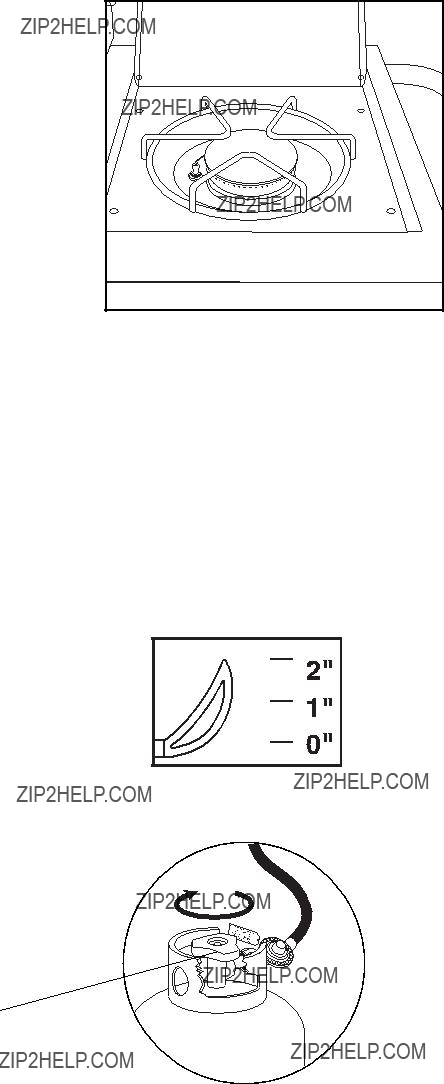
LIGHTING THE SIDE BURNER:
1.Open lid before lighting side burner.
2.Make sure control knob is in the "OFF" position.
3.Push and turn side burner control knob to HIGH.
4.Press the electronic igniter and hold for
5.If ignition does NOT occur in 5 seconds, turn to OFF, wait 5 minutes to allow gas to dissipate and repeat lighting procedure.
6.To turn off, turn control knob clockwise until it position.
Note: If burner does not light or flame is too low, may have spider or other insect blockage burner, or the flow limiting device has activated. See "Burner Assembly/Maintenance" under Proper Care and Maintenance, or Resetting Procedure" under Connecting LP Cylinder and Hose/Regulator
to Grill.
MATCH LIGHTING THE SIDE BURNER:
1.Open the lid to the side burner before lighting.
2.Turn the burner control knob to "OFF".
3.Strike and carefully place a match approximately 1/2" (1 to 2 cm) from the burner.
4.Turn the side burner control knob to the "HIGH" position. The burner should light within 5 seconds.
5.If the burner does not light, turn the control knob to "OFF" and wait 5 minutes for gas to dissipate and repeat lighting procedure.
6.If the burner does not light within the first few attempts of match lighting, there is a problem with the gas supply. Turn off the gas at the burner and cylinder. DO NOT attempt to operate the grill until the problem is found and corrected. See "Trouble Shooting" section of this manual.
TURNING OFF THE GRILL:
1.Turn off the cylinder valve.
2.Turn all burner control knobs to the "OFF" position.
Note: Turn off LP cylinder first to prevent gas from being left in the system under pressure.
 CAUTION:
CAUTION:
???The cylinder valve should always be in the off, or closed, position when the grill is not in use.
To turn off the cylinder valve, turn knob clockwise until it stops.
11
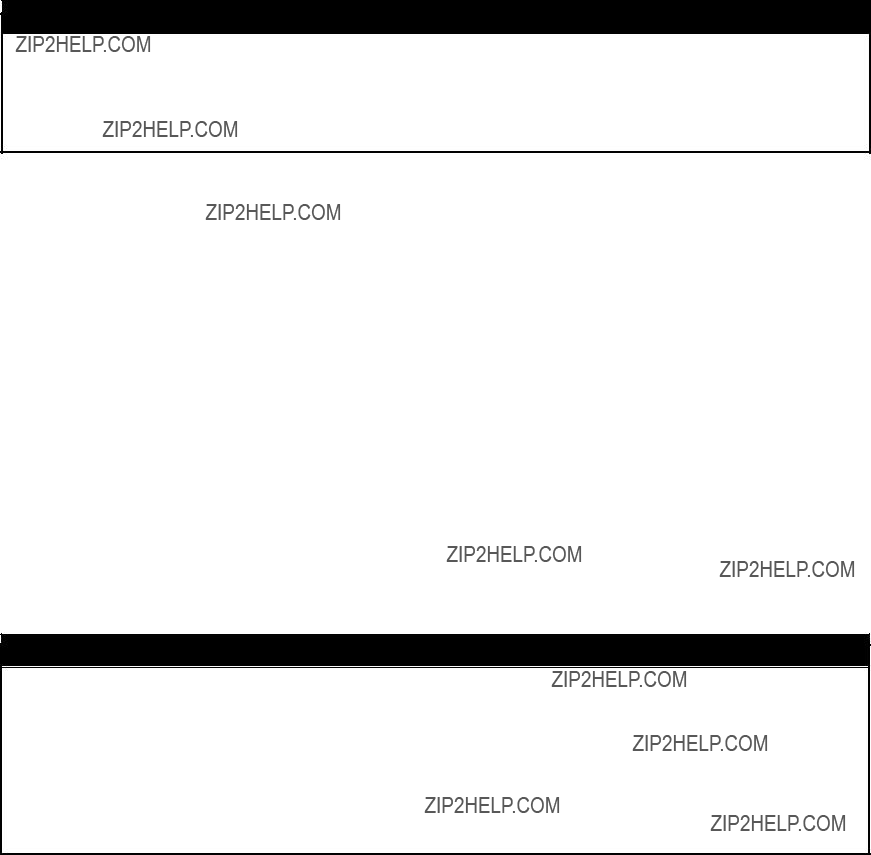
 WARNING
WARNING
OPERATING THE GRILL:
Never use charcoal or wood briquets in a gas grill. Flavoring chips must be contained in a metal smoking box to contain ash and prevent fires. Read and follow all warnings and instructions contained in the preceding sections of this manual.
BREAKING IN YOUR GRILL:
???In manufacturing and preserving the components of your grill, oil residue may be present on the burner and cooking surfaces of your grill.
???Before cooking on your grill for the first time you should preheat it for 15 minutes on "HIGH" to burn off these residual oils.
PREHEATING THE GRILL:
???Prior to use, it is recommended that you preheat your grill. This ensures that the grilling surfaces are at the desired temperatures to sear the food sugars when cooking. After lighting your grill, set the main burner control knobs to the "HIGH" position for 10 to 15 minutes. Close the cover during the preheat period.
CONTROLLING
???
 WARNING
WARNING
???DO NOT leave your grill unattended while in use.
???DO NOT move grill when in use. Lock wheels in place to stabilize grill.
???DO NOT use water to extinguish
???Have fire extinguisher readily accessible suitable for use with gas appliances.
TO MINIMIZE
???Trim excess fat from meats prior to cooking.
???Cook meats with high fat contents (chicken or pork) on Low settings or indirectly.
???Ensure that your grill is on level ground and the grease is allowed to evacuate the grill through the drain hole in the bottom and into grease cup.
INDIRECT COOKING:
???Indirect cooking is the process of cooking your food without the heat source being directly under your food. You can sear meats over a high flame on one side of the grill while slow cooking a roast on the
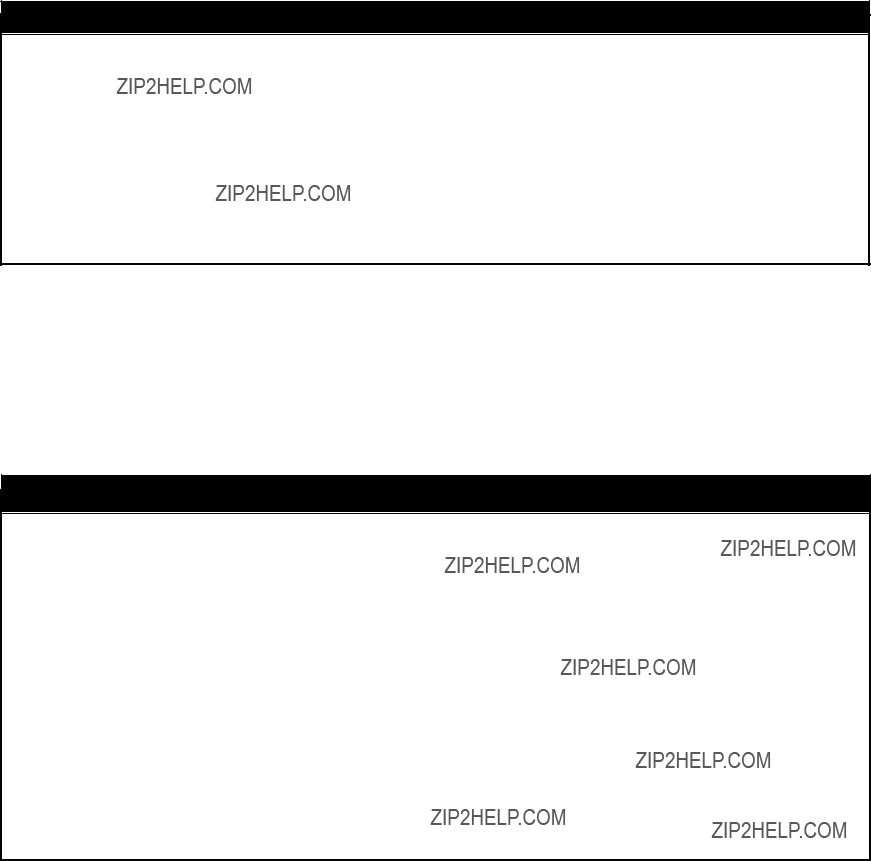
ROTISSERIE COOKING:
???Your grill was
???Read and follow all instructions provided with the rotisserie. Save instructions for future reference.
???Do not use the side burner when using a rotisserie.
 WARNING
WARNING
???When using an AC current rotisserie, it must be electrically grounded in accordance with local codes, or in the absence of local codes:
???In the US: The National Electrical Code ???
???In Canada: the Canadian Electrical Code ??? CSA C22.1
???The Rotisserie is equipped with a three pronged plug for your protection against electrical shock. This plug should be plugged directly into a properly grounded 3 prong receptacle. Never cut or remove the grounding plug. Any extension cord must also have a 3 prong receptacle.
???All electrical supply cords should be kept away from water and any hot surfaces of the grill.
USING OTHER FEATURES OF THE GRILL:
THE SIDE BURNER:
???The side burner can be used to prepare side dishes such as beans, potatoes, corn, or to warm sauces.
???The burner valve can be adjusted from high to low depending upon your cooking demands.
 WARNING
WARNING
???Read instructions on lighting your grill to light the side burner.
???Never close the side burner cover when the burner is lit.
???Use a 10" diameter pot or smaller that does NOT have an extended handle when cooking on the side burner. Center pot over burner.
???Never place more than 15 pounds on the side burner. The side burner is not constructed to hold weight exceeding 15 pounds.
???Use caution to avoid bumping grill, side burner or pot to prevent pot from spilling contents possibly leading to severe burns.
???DO NOT use side burner to deep fry food in oil to avoid dangers associated with oil igniting creating a very dangerous situation.
13
GRILL COOKING TIPS
CLEANLINESS
???Always wash hands thoroughly with soap and hot water prior to handling food and after handling raw meat, uncooked poultry or seafood.
???When using a platter to carry raw meat, uncooked poultry or seafood to the grill, make sure to wash the platter thoroughly with soap and hot water before placing cooked foods back on the platter or use different platters for raw and cooked foods.
???Never use the same utensils when handling raw meat, uncooked poultry or seafood unless you wash the utensils thoroughly with soap and hot water.
???Never
GRILLING TO PROPER TEMPERATURE
???Use a meat thermometer to be sure food has reached a safe internal temperature. You may order a
???The US Department of Agriculture recommends the minimum temperature be reached for the following food items:
Chops . . . . . . . . . . . . . . . . . . . . .145 degrees F (62.8?? C)
Ground Meat . . . . . . . . . . . . . . .160 degrees F (71?? C)
Pork . . . . . . . . . . . . . . . . . . . . . . .160 degrees F (71?? C)
Poultry . . . . . . . . . . . . . . . . . . . . .180 degrees F (82?? C)
Roasts . . . . . . . . . . . . . . . . . . . . .145 degrees F (62.8?? C)
Seafood . . . . . . . . . . . . . . . . . . . .140 degrees F (60?? C)
Vegetables . . . . . . . . . . . . . . . . .145 degrees F (62.8?? C)
HELPFUL HINTS
???If you
???Never defrost meat at room temperature or on a countertop.
???Refrigerate leftovers within 2 hours of taking food off the grill.
???For additional information, please phone the USDA???s toll free Meat & Poultry Hotline at
PROPER CARE & MAINTENANCE
???To protect your grill from excessive rust, the unit must be kept clean and covered at all times when not in use. A grill cover may be ordered directly from Brinkmann by calling
???Wash cooking grills and heat distribution plates with hot, soapy water, rinse well and dry. Lightly coat cooking grill with vegetable oil or vegetable oil spray.
???Clean inside and outside of grill by wiping off with a damp cloth. Apply a light coat of vegetable oil or vegetable oil spray to the interior surface to prevent rusting.
???If rust appears on the exterior surface of your grill, clean and buff the affected area with steel wool or fine grit emery cloth.
???The stainless steel exterior surface of your grill, can be cleaned with stainless steel cleaner.
???Never apply paint to the interior surface. Rust spots on the interior surface can be buffed, cleaned, then lightly coated with vegetable oil or vegetable oil spray to minimize rusting.
14
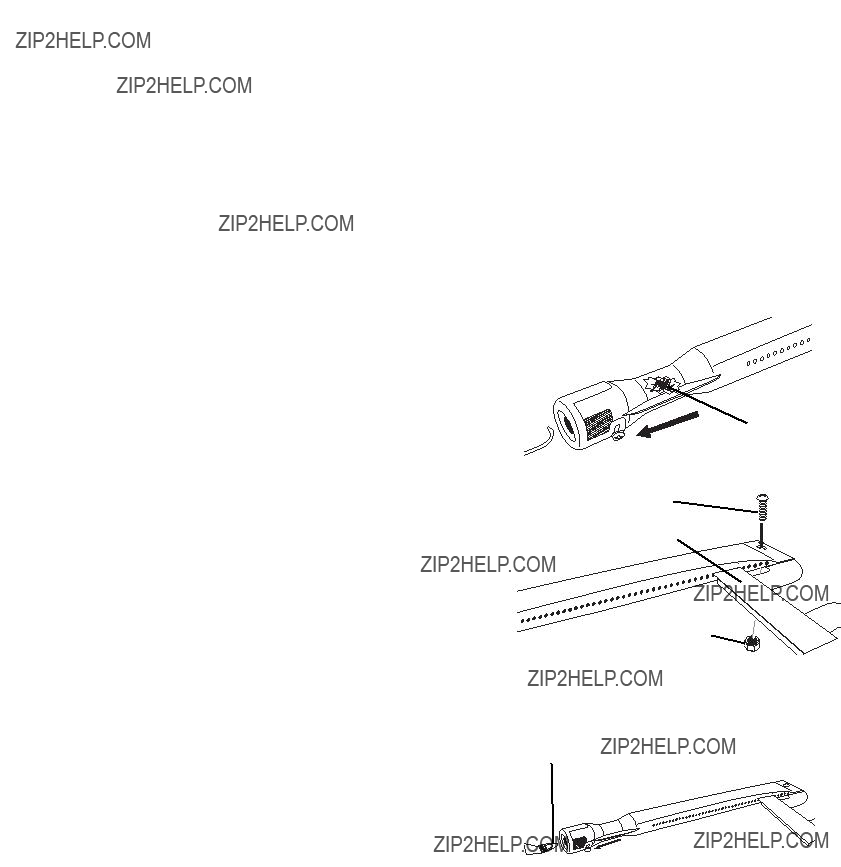
CLEANING AND MAINTENANCE:
???Keep the appliance free and clear of combustible materials, gasoline and other flammable vapors and liquids.
???Keep the ventilation openings of the cylinder enclosure free and clear of debris.
???Visually check burner flames for proper operation (see pictorial in "Burner Assembly/Maintenance" under Proper Care and Maintenance). Spiders or other insects can nest in the burner causing gas blockage.
???For safe grilling and peak performance of your grill, perform these checks at least twice per year or after extended periods of storage.
???Be sure to tighten up all hardware (nuts, bolts, screws, etc.) at least twice per year.
 CAUTION: Some parts may contain sharp edges. Wear protective gloves if necessary.
CAUTION: Some parts may contain sharp edges. Wear protective gloves if necessary.
???Remove the cooking grills, heat distribution plates, and burners from inside your grill. Use a brush with hot water and detergent to remove excess residue. NEVER use a commercial oven cleaner. Rinse completely with water. Towel dry and replace all components as described in the assembly instructions.
BURNER ASSEMBLY/MAINTENANCE
???Although your burners are constructed of stainless steel, they may corrode as a result of the extreme heat and acids from cooking foods. Regularly inspect the burners for cracks, abnormal holes, and other signs of corrosion damage. If found, replace the burner.
???DO NOT obstruct the flow of combustion and ventilation air. Burner tubes can become blocked by spiders and other insects building their nests. Blocked burner tubes can prevent gas flow to the burners and could result in a burner tube fire or fire beneath the grill. To clean the Burner Assembly follow these instructions to clean and/or replace parts of burner assembly or if you have trouble igniting the grill.
1.Turn gas off at control knobs and LP cylinder tank valve.
2.Remove cooking grills and heat distribution plates.
3. Remove bolt from each burner "foot" using a screwdriver.
4. Carefully lift each crossover channel and up and away from burners.
9. Check burner for damage, if any large cracks or holes are found replace burner.
IMPORTANT: Burner opening must slide over valve nozzle.
10.Carefully align crossover channels between burners and orient burners CORRECTLY by aligning screw hole in burner to
the left as shown.
11.Replace M5 nuts and M5 bolts to each burner and crossover channel.
Valve Nozzle
 Burner Opening
Burner Opening
15
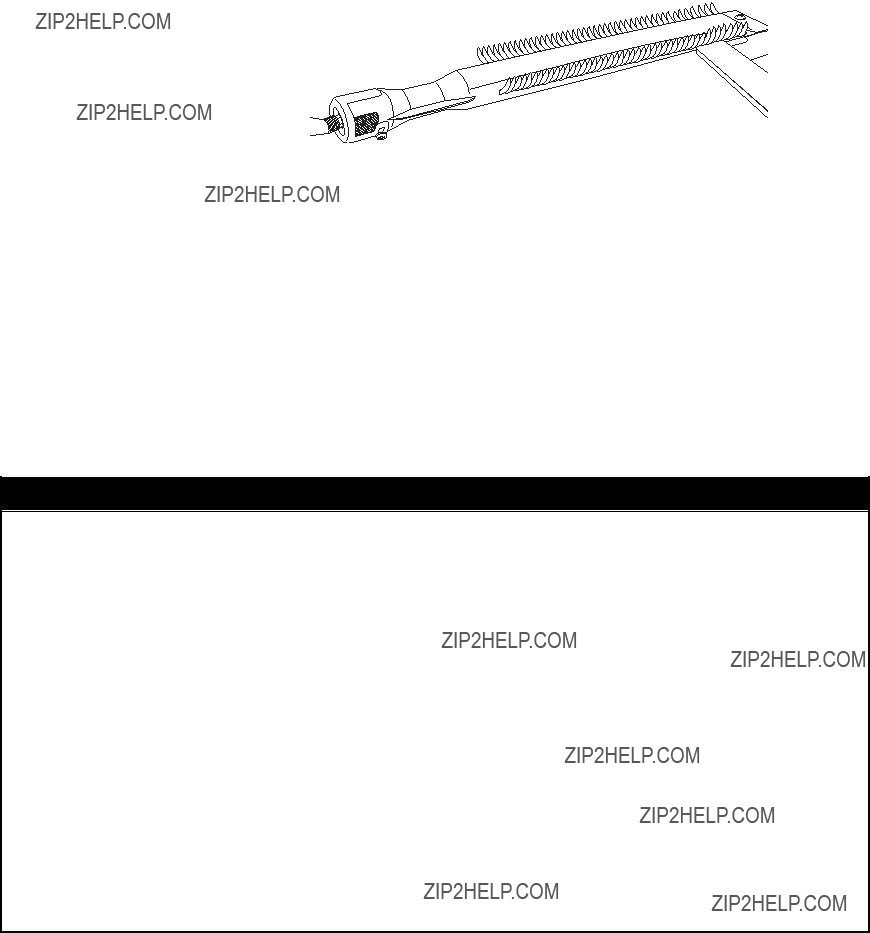
BURNER ASSEMBLY/MAINTENANCE CONTINUED
Note: Follow the "Gas Leak Testing" section of this manual. Relight burners to verify proper operation.
12. Replace heat distribution plates and cooking grills.
PROPER BURNER OPERATION
COOKING GRILLS
???Clean with mild soap detergent and water. A brass bristled brush or a nylon cleaning pad can be used to remove residue from the stainless steel surfaces. Do not use steel wire bristles to clean the cooking grills. Steel can cause the finish to chip or crack. DO NOT use a commercial oven cleaner.
HEAT DISTRIBUTION PLATES
???Periodically, it may be necessary to inspect and clean the heat distribution plate to prevent excess grease
 WARNING
WARNING
TRANSPORTING AND STORAGE:
???Never move a grill when it is hot or when objects are on the cooking surfaces.
???Make sure that cylinder valve is shut off. After moving the grill check that all gas connections are free of leaks. Refer to instructions for Leak Testing.
???DO NOT store a spare LP gas cylinder (filled or empty) under or near the grill.
???Never store flammable liquids or spray canisters under or near the grill.
???DO NOT extinguish grease fires using water.
???If the outdoor cooking gas appliance is not in use, the gas must be turned off at the supply cylinder.
???Storage of an outdoor cooking gas appliance indoors is permissible only if the cylinder is disconnected and removed from the outdoor cooking gas appliance.
???Cylinders must be stored outdoors out of reach of children and must not be stored in a building, garage or any other enclosed area.
???When removing the grill from storage, spider webs or other debris may be blocking the burner. See "Burner Assembly/Maintenance" under Proper Care and Maintenance.
16
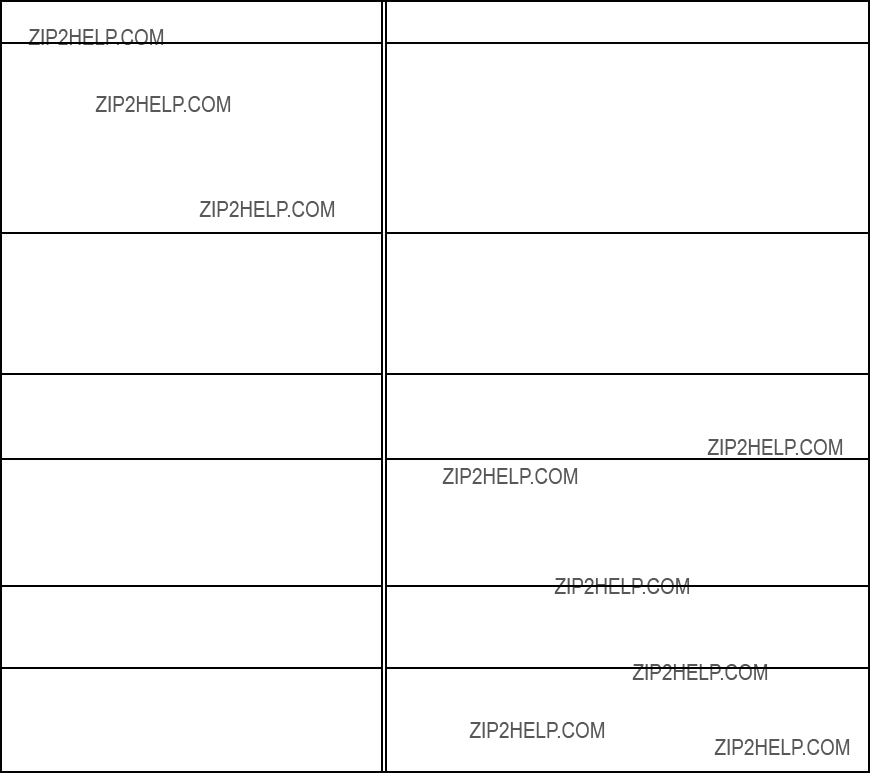
BEFORE STORING YOUR GRILL:
???Ensure that the cylinder valve is fully closed.
???Clean all surfaces.
???Lightly coat the burners with cooking oil to prevent excess rusting.
???If storing the grill indoors, disconnect the LP tank and leave the LP tank OUTDOORS.
???Place a protective cap cover on the LP tank and store the tank outdoors in a well ventilated area out of direct sunlight.
???Clean burner prior to use after storing, at the beginning of grilling season or after a period of one month not being used. Spiders and insects like to build nests in burner tubes (especially during colder months). These nests can cause fires in burner tubes or under grill.
???If storing the grill outdoors, cover the grill with a grill cover for protection from the weather.
TROUBLE SHOOTING
Problem:
???Burner will not light
???Fire at control knob
???Yellow Flames at burner
???Flame blows out on "LOW"
???Burner does not get hot enough
???Grill is Too Hot
Possible Causes:
1.Check LP cylinder fuel level.
2.Bad electrode spark.
Check to see if the grill will match light. Electrode or collector may need adjustment.
3.Burner may not be properly seated.
4.Burner may be obstructed.
5.The cylinder valve may be closed.
6.Regulator is not properly seated on cylinder valve.
1.Burner holes may be obstructed. See section on "Burner Assembly/Maintenance" under Proper Care and Maintenance.
2.Burner is improperly seated on control valve.
3.Gas connections may be loose.
Leak Check and tighten all connections.
1.Burner is obstructed. See section on
"Burner Assembly/Maintenance" under Proper Care and Maintenance.
1.Burner holes may be obstructed. See section on "Burner Assembly/Maintenance" under Proper Care and Maintenance.
2.Grill is not sufficiently preheated.
3.Burner is improperly seated on control valve.
1.Flow control device has been activated in regulator. See Regulator Resetting Procedure under Connecting LP Cylinder and Hose/Regulator to Grill.
1.Excess grease
2.Damaged or faulty regulator. Replace with factory authorized parts.
3.Cook on a lower temperature setting.
17
FREQUENTLY ASKED QUESTIONS
Your grill's serial number and model number, and the contact information for Brinkmann Customer Service, are listed on a silver label found beneath the control panel, on the back of the grill or on the side of the grill body, under the side shelf.
These questions and answers are for your general knowledge, and may not be applicable to your model grill.
Question: Why does my grill not light properly?
Answer: Always follow lighting instructions as listed on the control panel or in this manual. Also check these causes:
???Check LP gas supply.
???Check to ensure all gas connections are secure.
???The igniter AA battery may need replacing.
???Ignition wires may be loose. Remove the battery, inspect the igniter junction box found behind the control panel and connect any loose wires.
???Spark electrode tips may need repositioning. With the gas supply closed and control knob set to the "OFF" position, press the igniter button and have another person watch for the presence of a spark at the electrode tips. The gap between the spark electrode tip and spark receiver should be about 3/16". If the electrode tip needs to be adjusted, bend it to the appropriate gap distance.
???Check that the end of each burner venturi tube is properly located over its gas valve orifice fitting.
???There may be an obstruction in the gas line. To correct this, remove LP gas hose / regulator or natural gas fuel line from your grill. Open gas supply for one second to test for obstruction. If no obstruction is present, reconnect fuel line. If the fuel line is blocked, replace with a new hose / regulator assembly.
???If an obstruction is suspected in the hose / regulator assembly, orifice or gas valves call Brinkmann Customer Service at
Question: Why does my LP gas grill have a low flame or a flame with orange / yellow color?
Answer: You need to purge air from the gas line or reset the regulator's flow limiting device. Opening the cylinder valve all the way or too quickly triggers the regulator???s flow limiting device to shut down the gas flow, which prevents excessive gas flow to your grill. Note: This procedure should be done every time a new LP gas tank is connected to your grill:
RESETTING THE REGULATOR FLOW LIMITING DEVICE
???Turn control knob to the "OFF" position.
???Turn off the LP gas tank at the cylinder valve.
???Disconnect regulator from LP gas tank.
???Let tank stand for two minutes.
???Reconnect regulator to the LP gas tank.
???Open grill lid or side burner lid. Turn the cylinder valve on slowly until 1/4 or 1/2 open.
???Light the grill by following the instructions on your control panel or in this owner's manual.
Question: How and when do I clean the interior cooking components of my grill?
Answer: Use a fiber or brass cleaning brush to clean the interior of the grill, cooking grills, heat distribution plates and grease containers. Never use a wire brush or metal scraper on
18
FREQUENTLY ASKED QUESTIONS
Cleaning Stainless Steel Cooking Grills: Wash grills with a mild detergent and rinse with hot water before initial use and as needed. DO NOT use a commercial oven cleaner. For stubborn food residue, use a degreaser and fiber or brass cleaning brush.
Cleaning
Cleaning Heat Distribution Plate: Heat distribution plates should be cleaned whenever food or grease drippings accumulate to reduce the chance of
Cleaning the Grease Tray and/or Grease Cup: The grease tray and/or grease cup (some models) should be inspected before each grill use to reduce the chance of fire. Remove grease (a plastic spatula works well) and wash all parts with a mild soap or degreaser and warm water solution.
Question: What causes grill parts to rust and what effect does it have on the grill materials?
Answer: Rusting is a natural oxidation process and may appear on
Question: What causes my stainless steel grill lid to discolor and how do I clean my grill lid?
Answer: Smoke, weathering and high heat can cause a stainless steel grill lid to turn bronze in color. This is not to be confused with rust and is not a product defect. Machine oils used in the manufacturing process of stainless steel as well as cooking oils and a dirty grill lid can also encourage discoloration if the lid is not cleaned prior to grill use. After your grill is assembled, remove the protective PVC film from your grill lid and use a stainless steel cleaner and soft cloth to remove residual adhesive and oils from the inside and outside of your grill lid. Never use abrasive cleaners or scrubbers. In addition to the initial cleaning, routine cleaning to remove dirt, grease and oils will help discourage lid discoloration.
Question: Can I convert my grill from propane gas to natural gas?
Answer: Most gas grills are manufactured to exact specifications and are certified for either propane gas or natural gas use only. However, some models can be converted safely with conversion kits available for specific models. Contact Brinkmann Customer Service at
Question: Why does the hose / regulator assembly supplied with my grill not fit the older LP gas tank I???ve used for years?
Answer: U.S. Government regulates gas appliances and LP gas tanks. When regulations were changed, the LP gas tank fittings were updated to ensure compliance. If your LP gas tank does not fit the hose / regulator supplied with your new grill, the tank is outdated and must be replaced. Note: Effective April 1, 2002, all LP gas tanks sold must include an "OPD" overflow protection device. This internal device prevents the LP gas tank from being overfilled. Tanks without an OPD valve cannot be refilled.
Question: Sometimes I hear a humming sound coming from my gas regulator. Should I be concerned?
Answer: The humming sound is gas flowing through the regulator. A low volume of noise is normal and will not interfere with the operation of your grill. If the humming noise is loud and excessive, you need to purge air from the gas line or reset the regulator flow limiting device following the Regulator Resetting Procedure under Connecting LP Cylinder and Hose/Regulator to Grill. This procedure should be done every time a new LP gas tank is connected to your grill. For help, refer to your owner???s manual or call Brinkmann Customer Service at
19
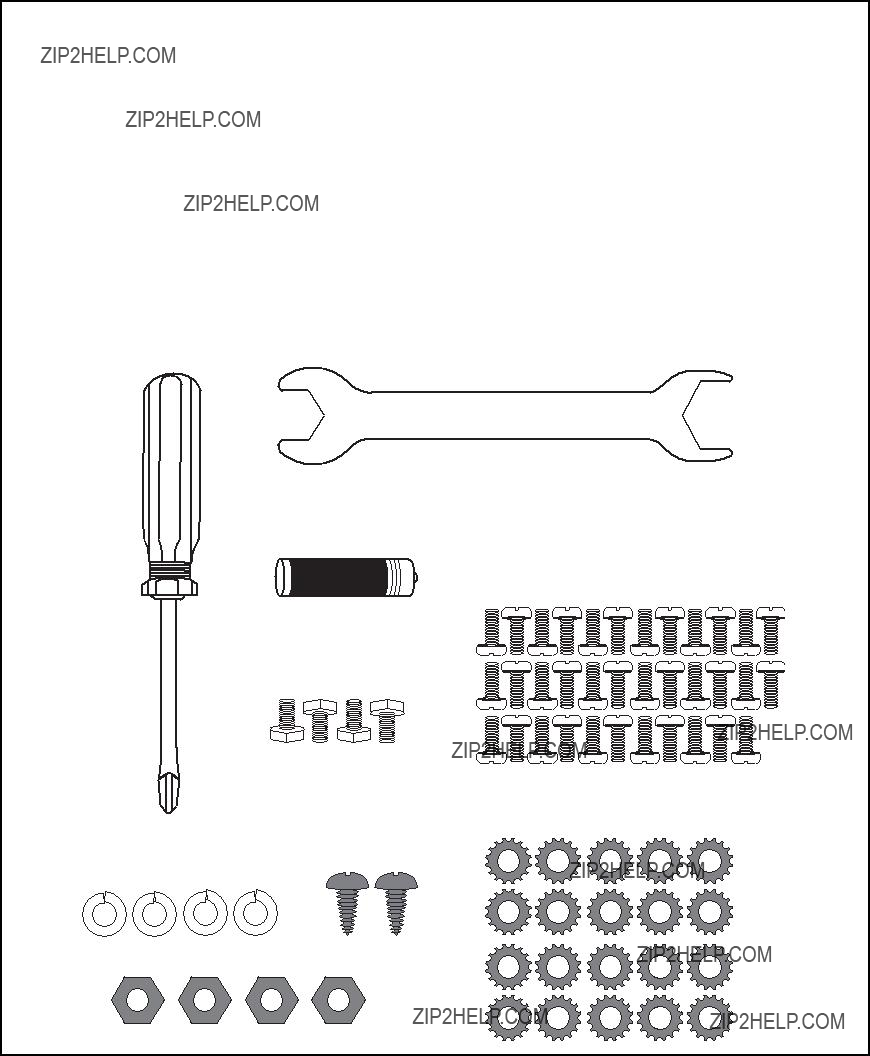
PARTS BAG CONTENTS
Make sure you have all items listed under PARTS LIST and PARTS BAG CONTENTS before you begin the installation process.
Screwdriver
Hex Nut Wrench
AA/1.5V Alkaline Battery
M6 X 12mm Hex Bolts
(Silver)
#8
Screws (Black)
Spring Washers (Silver)
M6 Nuts (Black)
M6 X 12mm Bolts
(Black)
Star Washers
(Black)
20
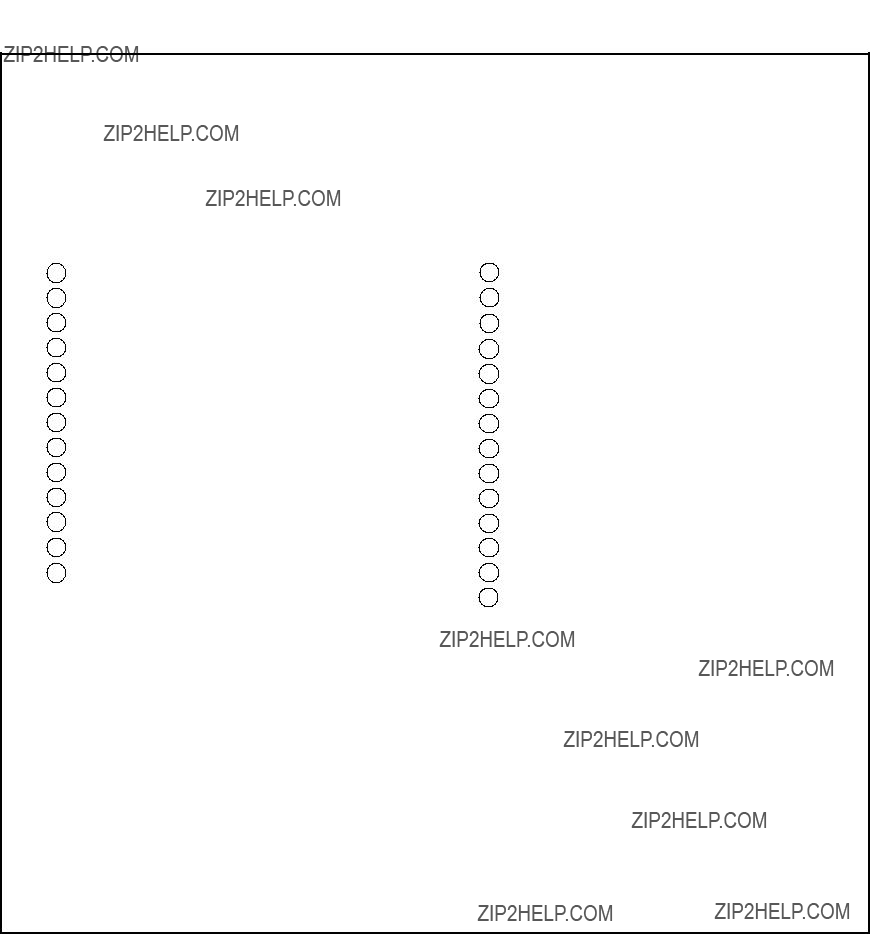
ASSEMBLY INSTRUCTIONS
 READ ALL SAFETY WARNINGS & ASSEMBLY INSTRUCTIONS CAREFULLY
READ ALL SAFETY WARNINGS & ASSEMBLY INSTRUCTIONS CAREFULLY
BEFORE ASSEMBLING OR OPERATING YOUR GRILL.
WE RECOMMEND TWO PEOPLE WORK TOGETHER WHEN ASSEMBLING THIS UNIT.
The following provided tools are required to assemble this ProSeries??? 8445 Gas Grill:
???Screwdriver
???Hex Nut Wrench
21
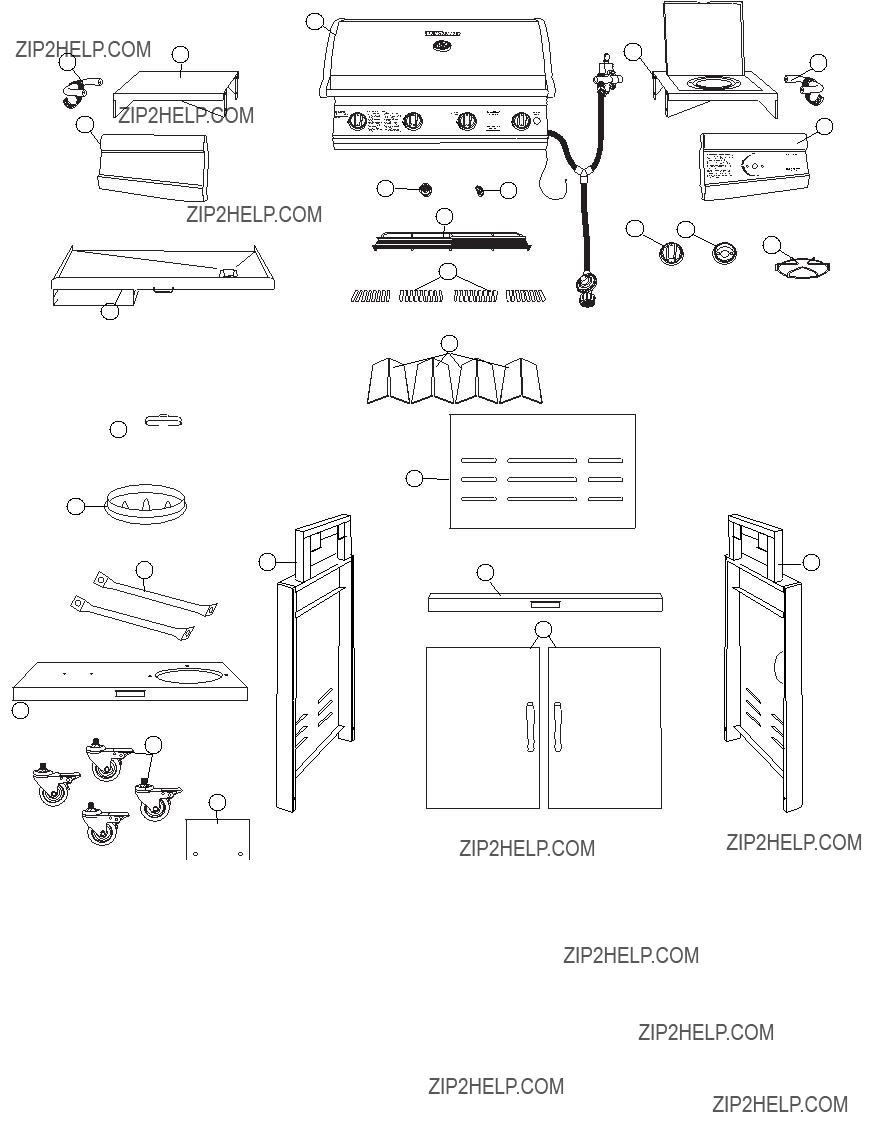
16 




 15
15
17 

20
18
25 
26
27
FOR COVERS, ACCESSORIES AND OTHER PRODUCTS, PLEASE VISIT US ONLINE AT: www.brinkmann.net
FOR GRILL WARRANTY REPLACEMENT PARTS, PLEASE VISIT US AT: www.grillpartsonline.com
(Proof of purchase will be required.)
Inspect contents of the box to ensure all parts are included and undamaged.
22
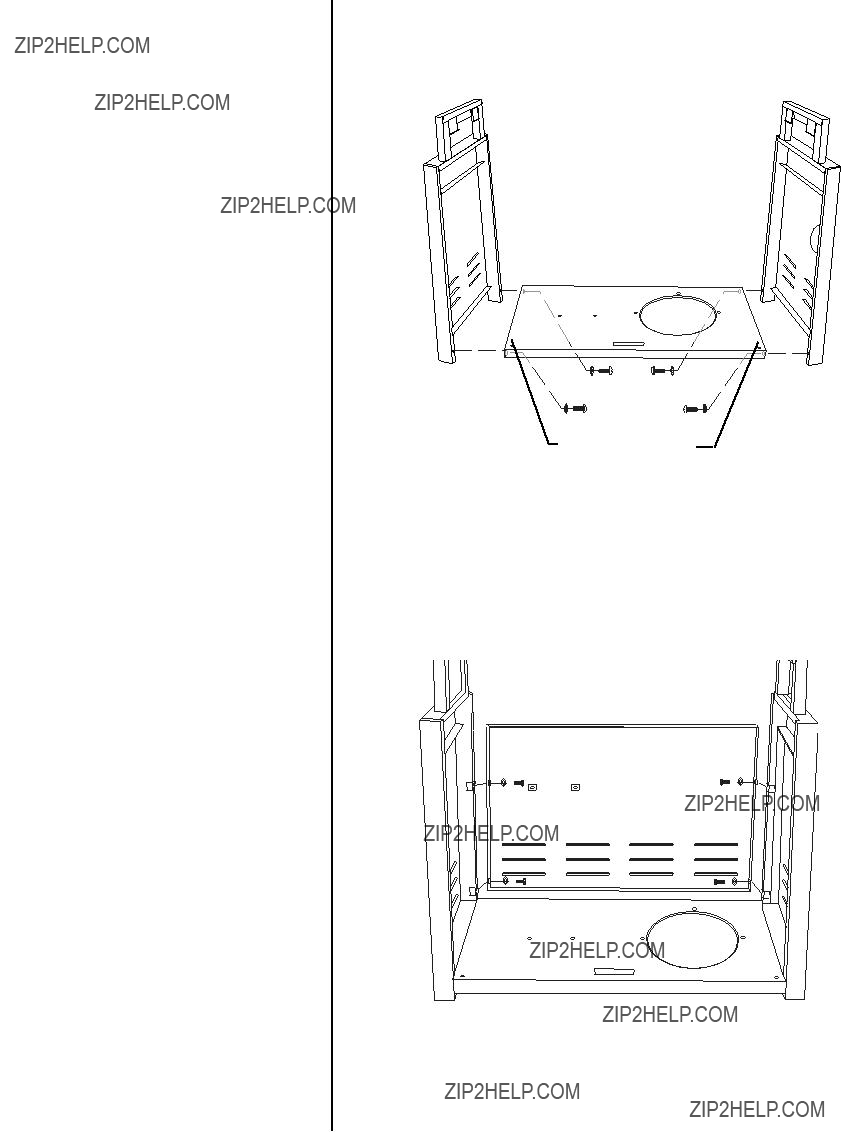
Choose a good, cleared assembly area and get a friend to help you put your grill together. Lay cardboard down to protect grill finish and assembly area.
 CAUTION: Some parts may contain sharp edges. Wear protective gloves if necessary.
CAUTION: Some parts may contain sharp edges. Wear protective gloves if necessary.
Step 1
Attach cart base to side panels. Insert four M6 X 12mm bolts (black) and star washers (black) through cart base and into legs and tighten securely. Be sure the door hinge holes face forward.
Door Hinge Holes
Step 2
Attach back panel to left and right leg of cart assembly using four M6 X 12mm bolts (black) and star washers (black).
23
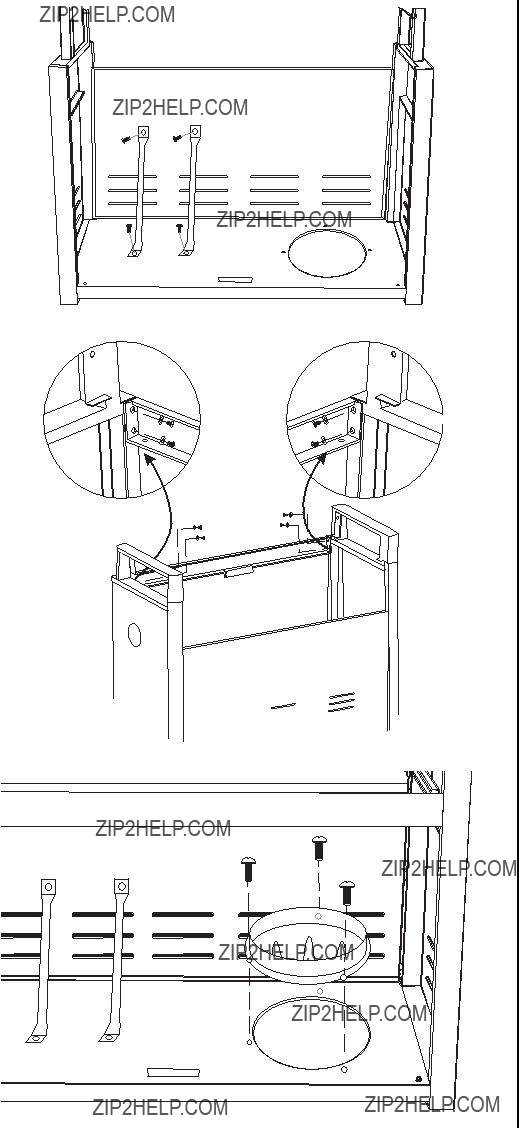
Front
Back
Step 3
Attach two tank block bars to the bottom cart shelf and the side cart panel using four M6 x 12mm bolts (black).
Step 4
Attach door bracket to left and right leg of cart using four M6 X 12mm bolts (black) and star washers (black).
Step 5
Attach tank holder onto cart base by using three M6 X 12mm bolts (black).
Note: With the help of a friend, turn the cart over. Try to minimize the stress to the side panels.
24
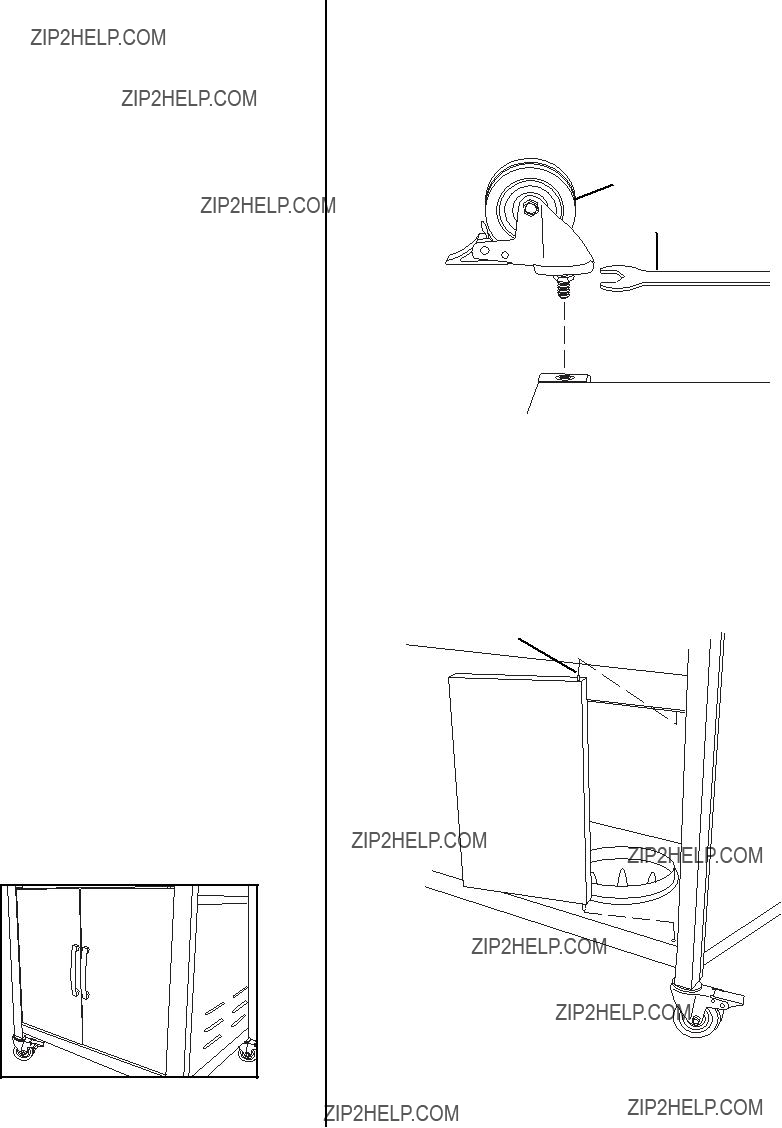
Step 6
Attach locking casters to the bottom of the cart. Tighten caster bolts securely using hex nut wrench provided in parts pack.
Note: With the help of a friend, turn the cart to its upright position. Lock the Casters to stabilize the grill before performing Step 7.
Step 7
Insert right side door pivot into lower pivot hole (on bottom cart shelf) then align door with cart frame. Depress spring pin located on top edge of door and slide door toward side cart panel until spring pin locks into hole in door bracket. Repeat for other door.
Locking Caster
Hex Nut Wrench
Spring Pin
Door Pivot 
Door Pivot 
Hole
25
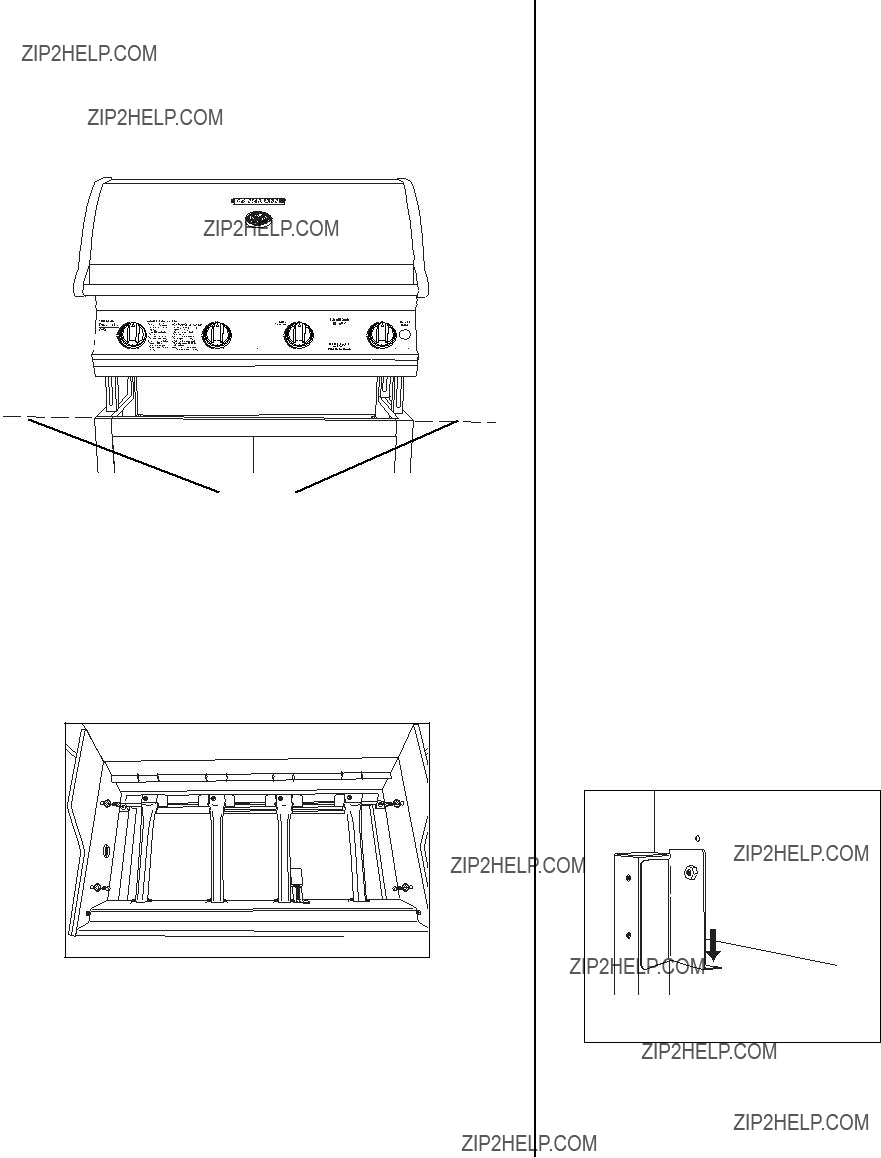
Alignment
Note: When performing Step 8, lift grill body from front and rear panels to avoid injury to hands and fingers.
Step 8
With the help of a friend, place grill body assembly on cart frame. Grill body will rest on angled top of vertical supports. Align bolt holes located on the inside of the grill body assembly. Secure using four M6 X 12mm bolts (black) with star washers (black).
26
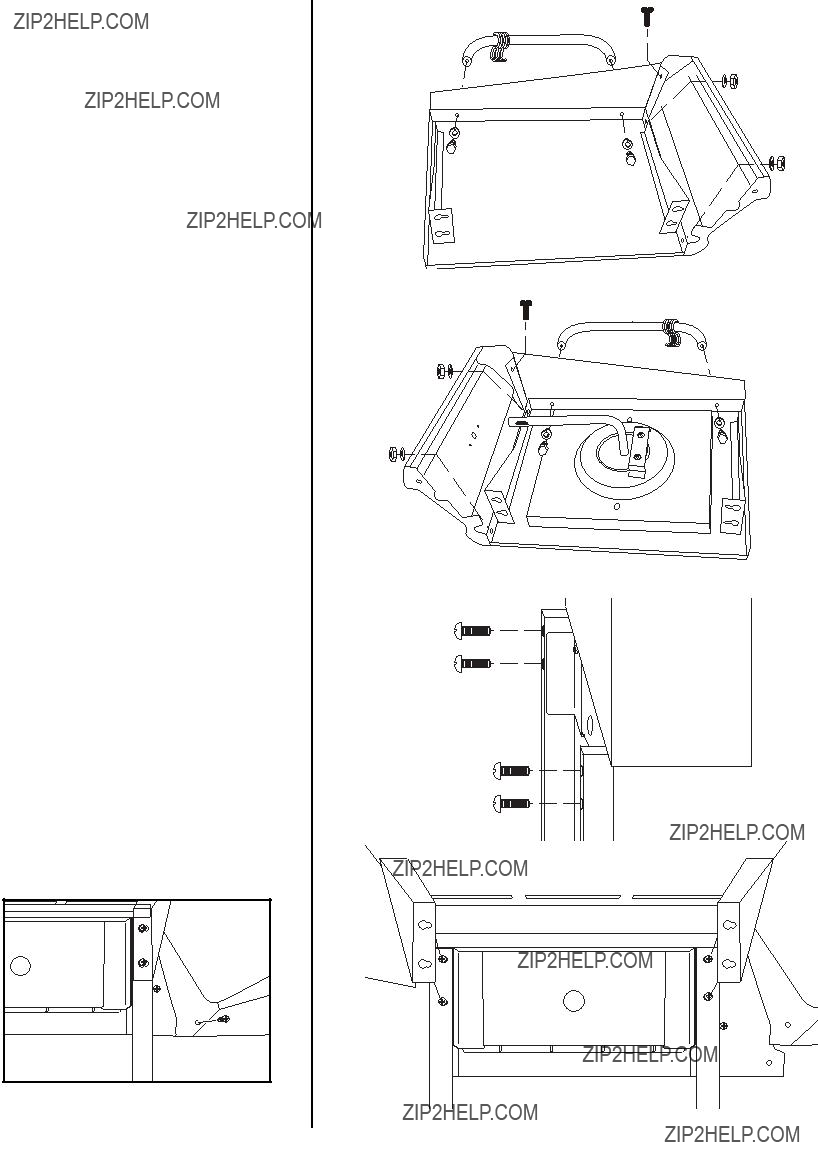
Step 9
Attach hooks to side table towel rack bar. Then attach towel rack bar to side table using two M6 X 12mm hexagonal bolts (silver) and spring washers (silver). Attach side table front panel using one M6 X 12mm bolt (black) and two M6 nuts and star washers (black).
Step 10
Attach hooks to side burner towel rack bar. Then attach towel rack bar to side burner assembly using two M6 X 12mm hexagonal bolts (silver) and spring washers (silver). Attach side burner assembly front panel using one M6 X 12mm bolt (black) and two M6 nuts and star washers (black).
Step 11
Attach side table to left side of cart frame assembly. Insert two
M6 X 12mm bolts (black) into both left legs halfway. Place table over bolts and slide toward back of grill, then tighten securely. Fasten side table front panel to grill body with one M6 X 12mm bolt (black).
27
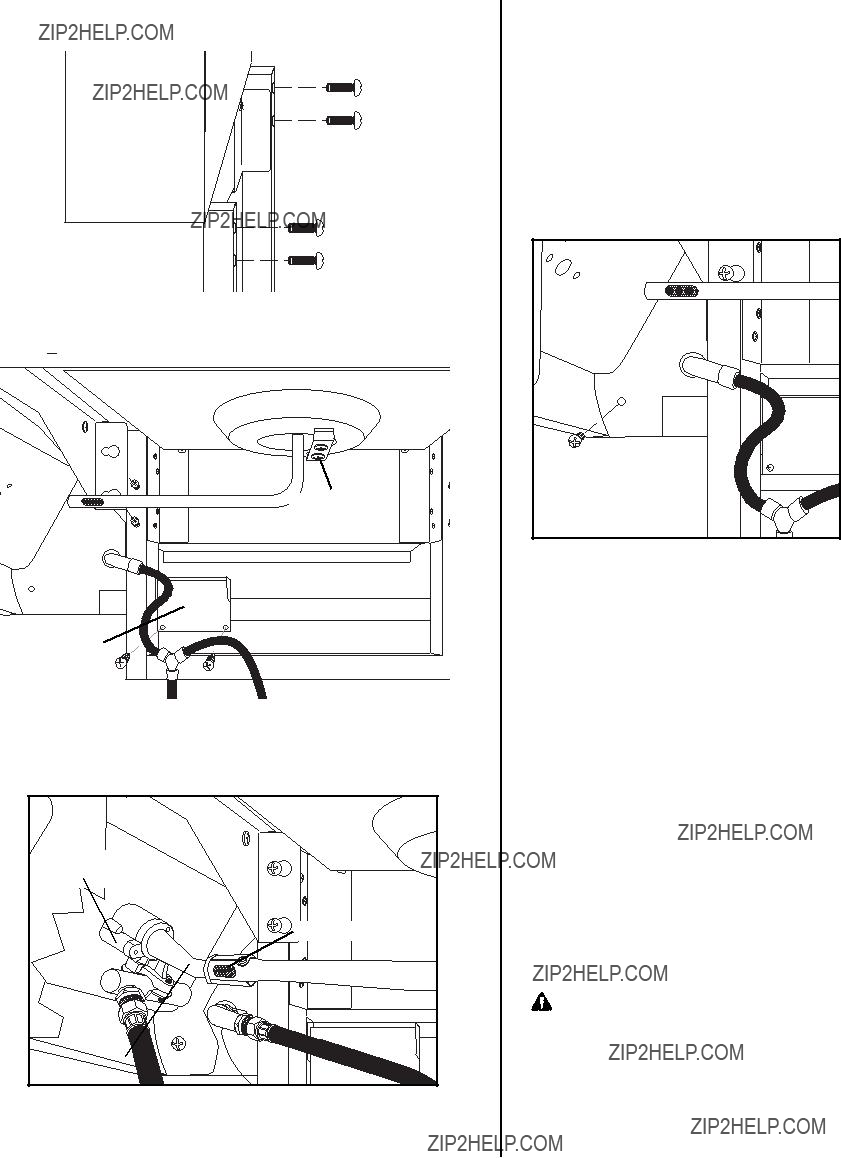
Step 12
Attach side burner to right side of cart frame assembly. Insert two M6 X 12mm bolts (black) into both right legs halfway. Place side burner over bolts and slide toward back of grill, then tighten securely. Fasten side burner front panel to grill body with one M6 X 12mm bolt (black).
28
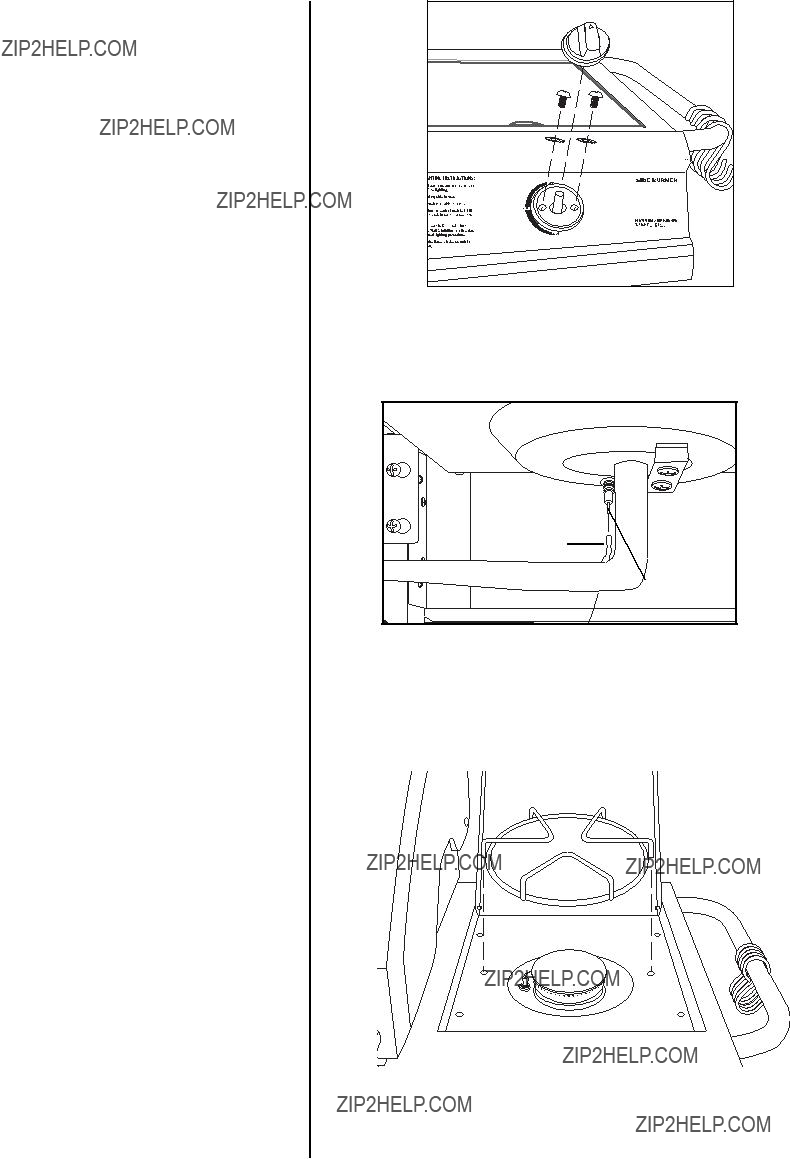
Step 16
Place the bezel over the control knob mounting stem and position over holes in side burner base and side burner valve assembly. Attach with two M4 X 10mm bolts with washers which come with valve. Install the side burner control knob onto valve stem, then tighten up the burner assembly / bracket screws loosened in Step 14.
Step 18
Place side burner grate over side burner.
29
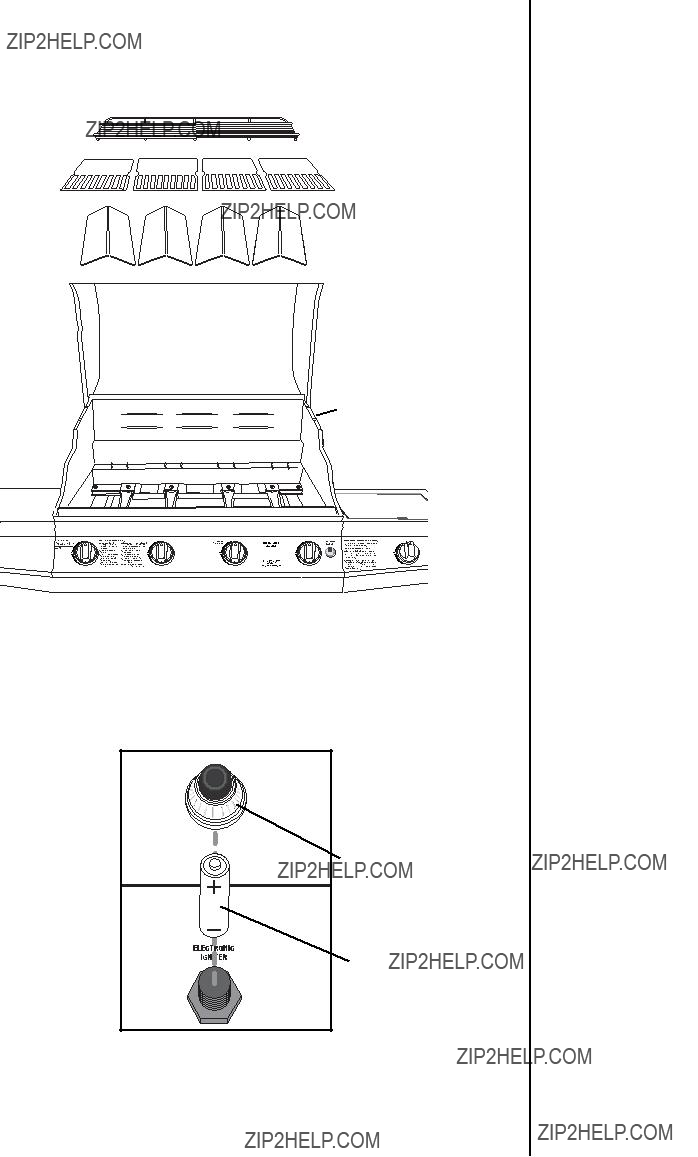
Step 19
Place the heat distribution plates  Warming Rackon lower level of grill body
Warming Rackon lower level of grill body
assembly directly above burners.















 Cooking Grills
Cooking Grills
Step 20
Place cooking grills on support
 Heat Distributionribs directly above heat
Heat Distributionribs directly above heat
Plates
distribution plates.
30
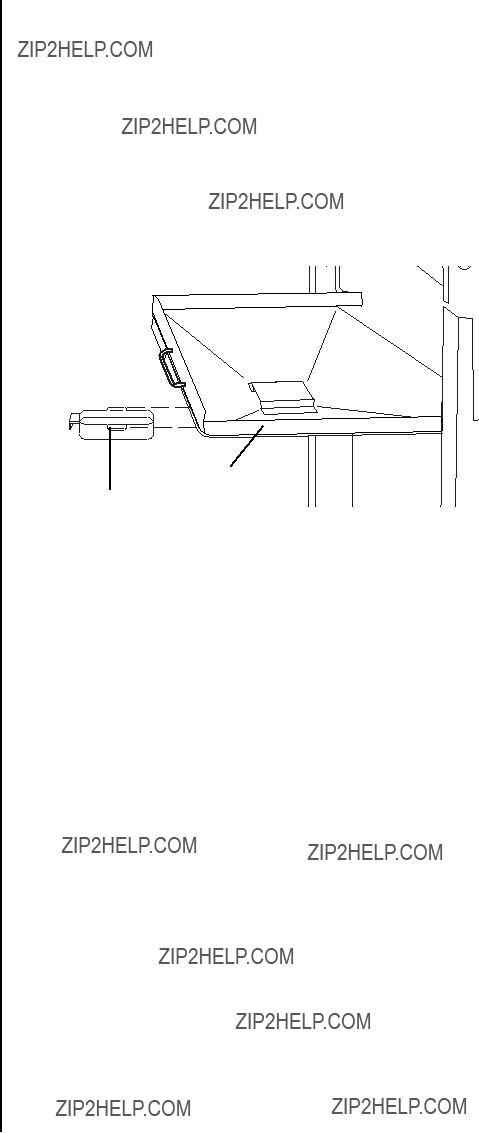
Step 23
Insert grease tray into opening on backside of grill. Make sure to slide tray onto tracks.
Step 24
Insert grease cup into the grease tray. Make sure to slide cup onto tracks as illustrated.
Grease Tray
Grease Cup
31
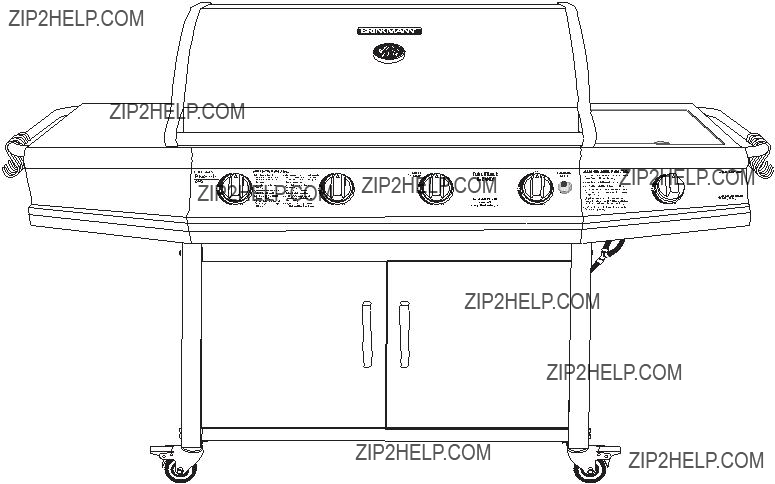
ProSeries??? 8445 (Assembled)
32
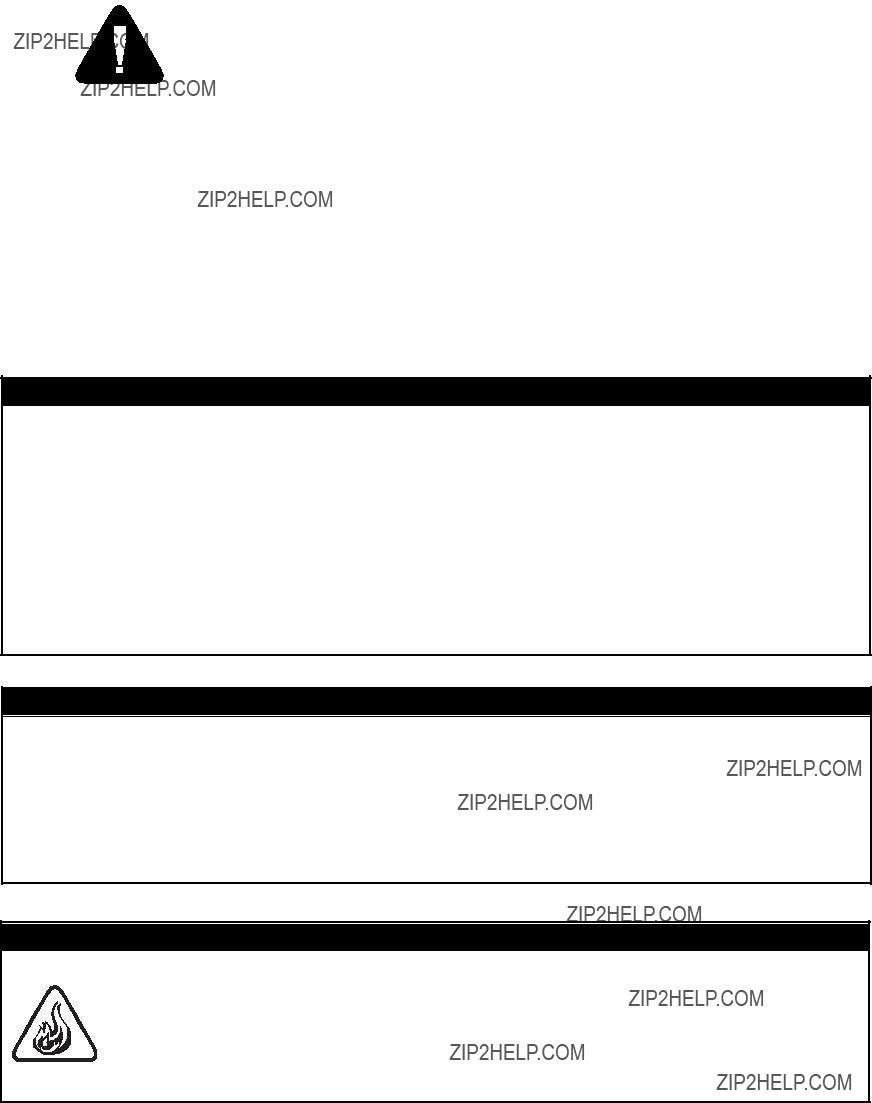
IMPORTANTES ADVERTENCIAS
DE SEGURIDAD
ES NUESTRO DESEO QUE ARME Y UTILICE SU PARRILLA EN LA FORMA M??S
SEGURA POSIBLE. EL PROP??SITO DE ESTE S??MBOLO DE ALERTA DE SEGURIDAD
 ES QUE USTED PRESTE ATENCI??N A LOS POSIBLES PELIGROS CUANDO ARME
ES QUE USTED PRESTE ATENCI??N A LOS POSIBLES PELIGROS CUANDO ARME
Y UTILICE SU PARRILLA.
??CU??NDO VEA ESTE S??MBOLO DE ALERTA DE SEGURIDAD  PRESTE ESPECIAL
PRESTE ESPECIAL
ATENCI??N A LA INFORMACI??N A CONTINUACI??N!
 LEA DETENIDAMENTE TODAS LAS ADVER TENCIAS DE SEGURIDAD E
LEA DETENIDAMENTE TODAS LAS ADVER TENCIAS DE SEGURIDAD E
INSTRUCCIONES ANTES DE ARMAR Y USAR LA PARRILLA.
 PELIGRO
PELIGRO
SI HUELE GAS:
1.Apague el gas al artefacto.
2.Apague cualquier llama expuesta.
3.Abra la tapa.
4.Si el olor persiste, subsistencia lejos de la aplicaci??n y llame de inmediato a su proveedor de gas o a los bomberos.
 ADVERTENCIA
ADVERTENCIA
1.No guarde ni use gasolina ni otros l??quidos inflamables con vapores en las cercan??as de este o de ning??n otro artefacto.
2.Un cilindro de propano l??quido que no est?? conectado para ser utilizado no debe ser mantenido cerca de ??ste o ning??n otro artefacto.
 PELIGRO
PELIGRO
???NO guarde un cilindro de gas de propano l??quido de reserva debajo o cerca de este artefacto.
???Nunca llene el cilindro m??s de 80%.
??? Se puede producir un incendio y causar lesiones o hasta la muerte si no se siguen estas instrucciones en forma exacta.
33

??NDICE
Advertencias generales . . . . . . . . . . . . . . . . . . . . . . . . . . . . . . . . . . . . . . . . . . . . . . . . . . . . . . . . . . 35 Instalaci??n, especificaciones y uso seguro del cilindro de propano l??quido . . . . . . . . . . . . . . .
 PELIGRO: Indica una situaci??n peligrosa inminente la cual, si no se evita, producir?? lesiones graves o a??n la muerte.
PELIGRO: Indica una situaci??n peligrosa inminente la cual, si no se evita, producir?? lesiones graves o a??n la muerte.
 ADVERTENCIA: Mant??ngase alerta a la posibilidad de lesiones corporales graves si no se siguen las instrucciones. Aseg??rese de leer y seguir cuidadosamente todos los mensajes.
ADVERTENCIA: Mant??ngase alerta a la posibilidad de lesiones corporales graves si no se siguen las instrucciones. Aseg??rese de leer y seguir cuidadosamente todos los mensajes.
 PRECAUCI??N: Indica una situaci??n posiblemente peligrosa la cual, si no se evita, puede producir lesiones menores o moderadas.
PRECAUCI??N: Indica una situaci??n posiblemente peligrosa la cual, si no se evita, puede producir lesiones menores o moderadas.
34
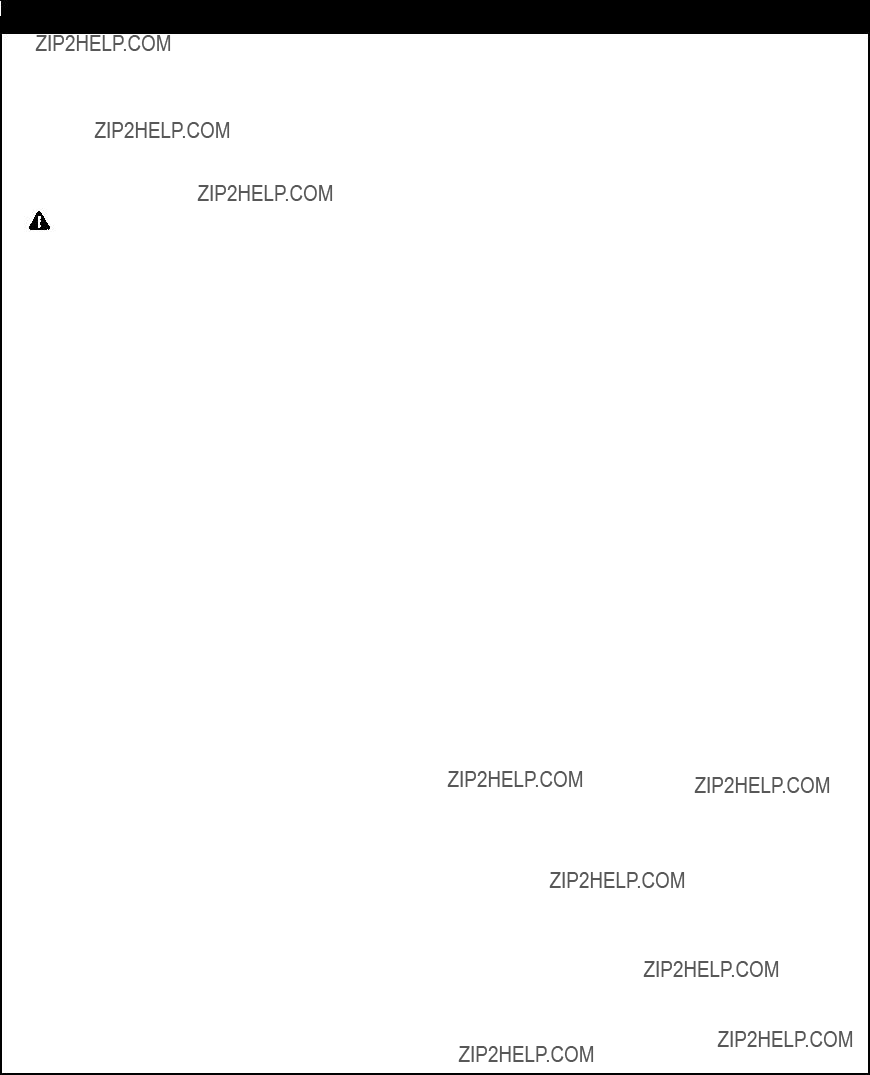
ADVERTENCIAS GENERALES
 ADVERTENCIA
ADVERTENCIA
???Nunca use gas natural en una unidad dise??ada para gas de propano l??quido.
???Nunca use briquetas de carb??n en una parrilla de gas. Los pedacitos de madera para dar sabor se deben colocar en una cajita de fumar de metal para contener la ceniza y para prevenir fuegos.
???Realice una prueba de detecci??n de fugas en todas las conexiones antes de usar la parrilla por primera vez, a??n si compr?? la parrilla armada, y despu??s de cada llenado del tanque.
???Nunca use un cerillo o llama expuesta para detectar fugas.
PRECAUCI??N: Los olores fuertes, los resfr??os o la congesti??n nasal pueden impedir la detecci??n de propano. Sea precavido y utilice sentido com??n cuando realice pruebas de detecci??n de fugas.
???Siempre mantenga la parrilla de gas alejada de la gasolina, fluido de encendedor, diluyente de pintura u otros vapores o l??quidos inflamables o materiales combustibles.
???Siempre revise la parrilla antes de cada uso, tal como se indica en la secci??n "Lista de verificaci??n preliminar al encendido" de este manual.
???NO obstruya el flujo del aire de combusti??n o ventilaci??n.
???Nunca coloque m??s de 15 libras sobre la hornilla lateral. NO se apoye sobre el mes??n de la hornilla lateral.
???Mantenga a los ni??os y las mascotas alejados de la parrilla caliente. NO permita que los ni??os usen o jueguen cerca de esta parrilla.
???NO deje la parrilla desatendida mientras est?? en uso.
???NO permita que la manguera de gas haga contacto con superficies calientes.
???NO permita que la grasa del agujero de drenaje caiga sobre la manguera o el conjunto del regulador de la v??lvula.
???Mantenga todos los cables de alimentaci??n el??ctrica alejados del agua o superficies calientes.
???Mantenga a mano un extinguidor de incendios aceptable para usar con productos de gas. Consulte con su autoridad local para determinar el tama??o y tipo correctos.
???Para uso dom??stico ??nicamente. NO use esta parrilla para ning??n prop??sito que no sea el previsto.
???NO use la parrilla bajo la influencia de alcohol o drogas.
???La parrilla est?? caliente cuando est?? en uso. Para evitar las quemaduras:
???NO trate de mover la parrilla.
???Trabe las ruedas para que la parrilla no se mueva accidentalmente.
???Use guantes protectores o guantes para el horno.
???NO toque ninguna superficie caliente de la parrilla.
???NO use ropa suelta ni permita que el cabello haga contacto con la parrilla.
 SEA PRECAVIDO Y UTILICE SENTIDO COM??N CUANDO OPERE LA PARRILLA DE GAS.
SEA PRECAVIDO Y UTILICE SENTIDO COM??N CUANDO OPERE LA PARRILLA DE GAS.
HACER CASO OMISO A LAS ADVERTENCIAS DE SEGURIDAD E INSTRUCCIONES EN ESTE MANUAL PUEDE
PRODUCIR GRAVES LESIONES PERSONALES O DA??OS MATERIALES.
GUARDE ESTE MANUAL PARA REFERENCIA FUTURA.
35
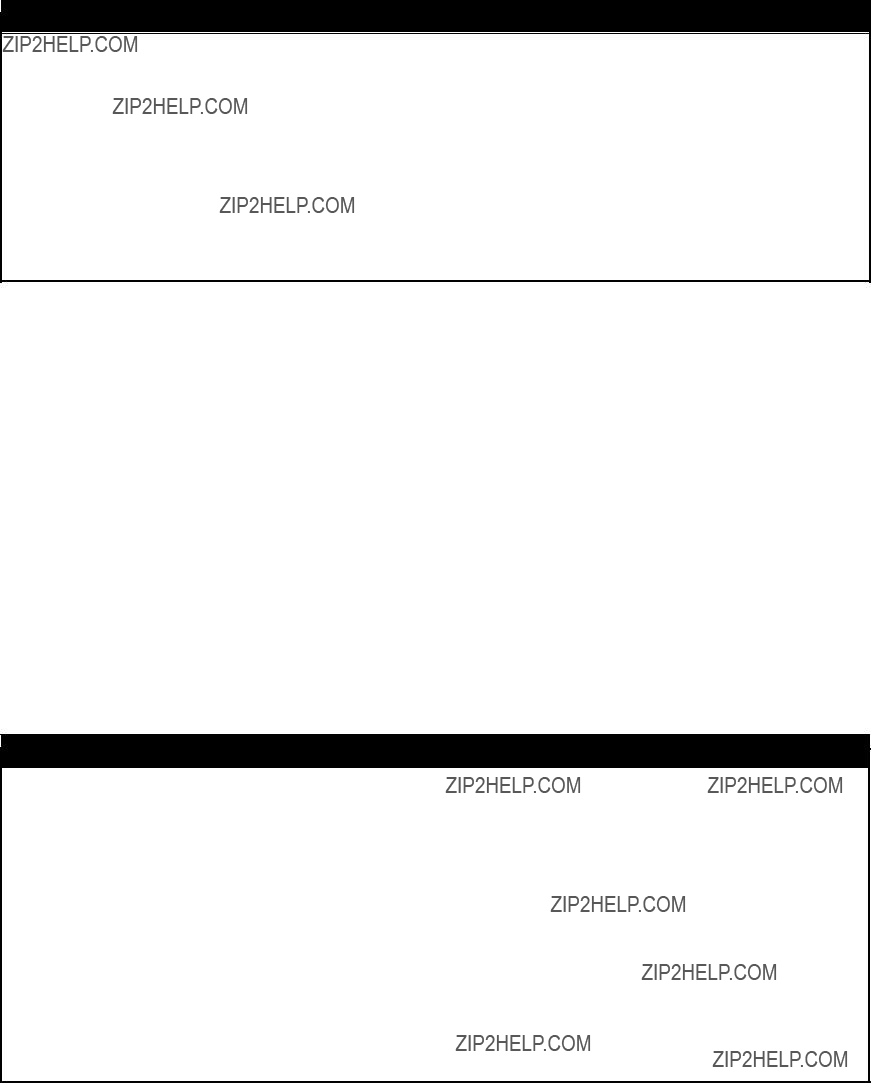
 ADVERTENCIA
ADVERTENCIA
???PARA USO EXTERIOR ??NICAMENTE. NO opere la parrilla en ??reas interiores o en un ??rea cerrada como un garaje, cobertizo o pasadizo.
???Use la parrilla AL AIRE LIBRE en un espacio bien ventilado alejado de viviendas u otros edificios para prevenir los peligros asociados con la acumulaci??n de gas y los vapores t??xicos. Recomendamos que la parrilla se sit??e a una distancia m??nima de 10 pies (3,1 m) de los edificios.
???Mantenga un espacio m??nimo de 36 pulgadas (91 cm) entre todos los costados de la parrilla y las paredes u otros materiales combustibles. NO use la parrilla debajo de construcciones combustibles elevadas desprotegidas.
???NO use ni instale esta parrilla en o sobre un veh??culo recreativo y/o un bote.
INFORMACI??N DE INSTALACI??N:
Este artefacto debe instalarse de acuerdo con:
Todos los c??digos locales relevantes o, si no existen c??digos locales, ya sea:
???C??digo de Gas Combustible de EE.UU. ANSI Z223.1 NFPA 54
???C??digo de instalaci??n de gas natural y propano: CAN/CGA B149.1
???C??digo de instalaci??n de gas natural: CAN/CGA B149.1 (Canad??)
???C??digo de instalaci??n de propano: CAN/CGA B149.2 (Canad??)
Consulte con su distribuidor local de gas de propano l??quido o con la compa????a de gas natural con respecto a los c??digos locales. Esta parrilla no fue dise??ada para conectarla a una l??nea de suministro de gas natural. Si se utiliza una fuente el??ctrica externa, debe estar conectada a tierra de acuerdo con los c??digos locales o, en caso que no los haya, con el C??digo El??ctrico de EE.UU., ANSI/NFPA 70, o el C??digo El??ctrico Canadiense, CSA 22.1.
 ADVERTENCIA
ADVERTENCIA
CILINDRO DE GAS DE PROPANO L??QUIDO (NO SE INCLUYE CON ESTA PARRILLA)
El cilindro de propano l??quido puede comprarse en el mismo lugar donde compr?? la parrilla.
El cilindro de gas de propano l??quido dise??ado espec??ficamente para usarse con esta parrilla debe tener una capacidad de 20 libras (9,1 kg) e incorporar una v??lvula de cilindro tipo 1 y un dispositivo de protecci??n contra el llenado excesivo (OPD).
???NO conecte esta parrilla a una v??lvula de cilindro POL #510 existente con roscas izquierdas. La v??lvula de tipo 1 puede identificarse con las roscas externas grandes en la salida
de la v??lvula.
???NO conecte un cilindro de propano que exceda esta capacidad.
???NO conecte la parrilla a un cilindro que utilice cualquier otro tipo de dispositivo de conexi??n de v??lvula.
36
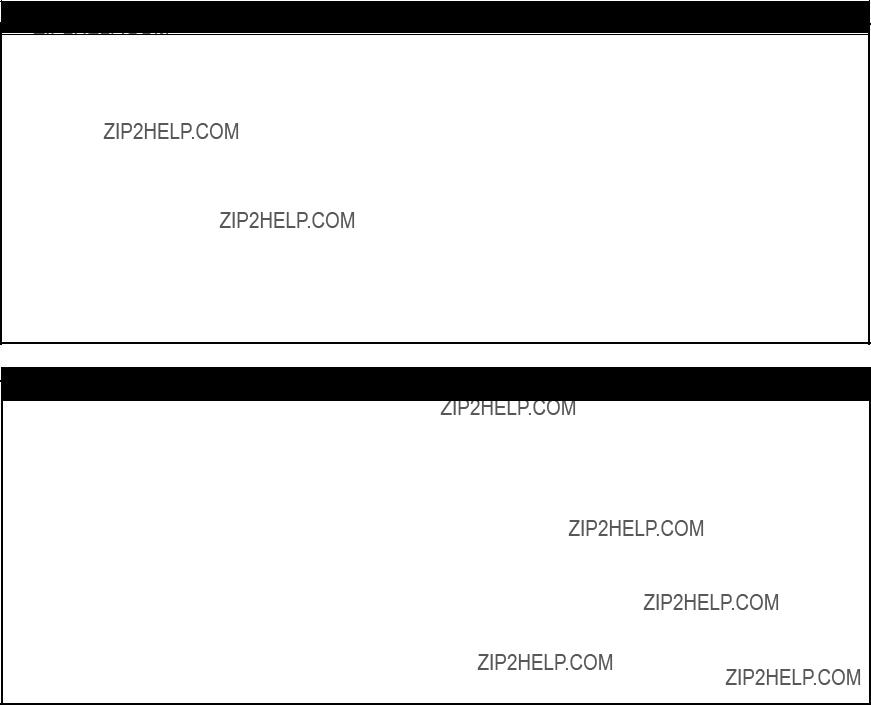
ESPECIFICACIONES DEL CILINDRO
Cuando compre o cambie un cilindro para la parrilla de gas, debe estar construido y marcado de acuerdo con las especificaciones para cilindros de gas de propano l??quido del Departamento de Transporte (DOT) de EE.UU. o la Norma Nacional de Canad??,
Adem??s, el cilindro debe estar equipado con:
???Una v??lvula de cierre que termine en una salida de v??lvula para cilindro de gas de Tipo 1.
???Una v??lvula de Tipo 1 que prevenga el flujo de gas hasta que exista un sello positivo.
???Un mecanismo para extraer el vapor.
???Un collar para proteger la v??lvula de cierre del cilindro.
???Un dispositivo de alivio de seguridad comunicado directamente con el espacio de vapor del cilindro.
???Un dispositivo de protecci??n contra el llenado excesivo (OPD) aprobado.
 ADVERTENCIA
ADVERTENCIA
???Cierre la v??lvula del cilindro cuando no est?? usando la parrilla.
???Maneje el tanque con cuidado.
???Siempre mantenga el cilindro en posici??n vertical.
???Nunca conecte un cilindro de gas de propano l??quido no regulado a la parrilla.
???NO exponga los cilindros de gas de propano l??quido a calor excesivo o a fuentes de encendido.
???NO guarde un cilindro de gas de propano l??quido de reserva debajo o cerca de la parrilla.
???S??lo los distribuidores de gas de propano l??quido capacitados deben llenar o reparar su cilindro.
???NO permita que el cilindro sea llenado m??s del 80% de su capacidad.
???Lea y siga todas las advertencias e instrucciones en el cilindro y que acompa??an a este producto.
 PELIGRO
PELIGRO
???Nunca guarde un cilindro de gas de propano l??quido de reserva debajo o cerca de la parrilla. Esto puede causar una descarga de presi??n excesiva a trav??s de la v??lvula de alivio de vapor y producir un incendio, explosi??n o lesiones personales graves, incluso la muerte.
Nota: EL GAS DE PROPANO ES M??S PESADO QUE EL AIRE Y SE ACUMULAR?? EN
??REAS BAJAS. LA VENTILACI??N APROPIADA ES EXTREMADAMENTE IMPORTANTE.
???Mantenga el (los) orificio(s) de ventilaci??n del gabinete del cilindro de gas de propano l??quido despejados y sin obstrucciones o residuos.
???NO inserte ning??n objeto extra??o en la salida de la v??lvula. Esto puede da??ar el mecanismo de retenci??n de retroceso. Un mecanismo de retenci??n de retroceso puede causar una fuga y posiblemente producir una explosi??n, incendio, lesiones corporales graves o a??n la muerte.
37
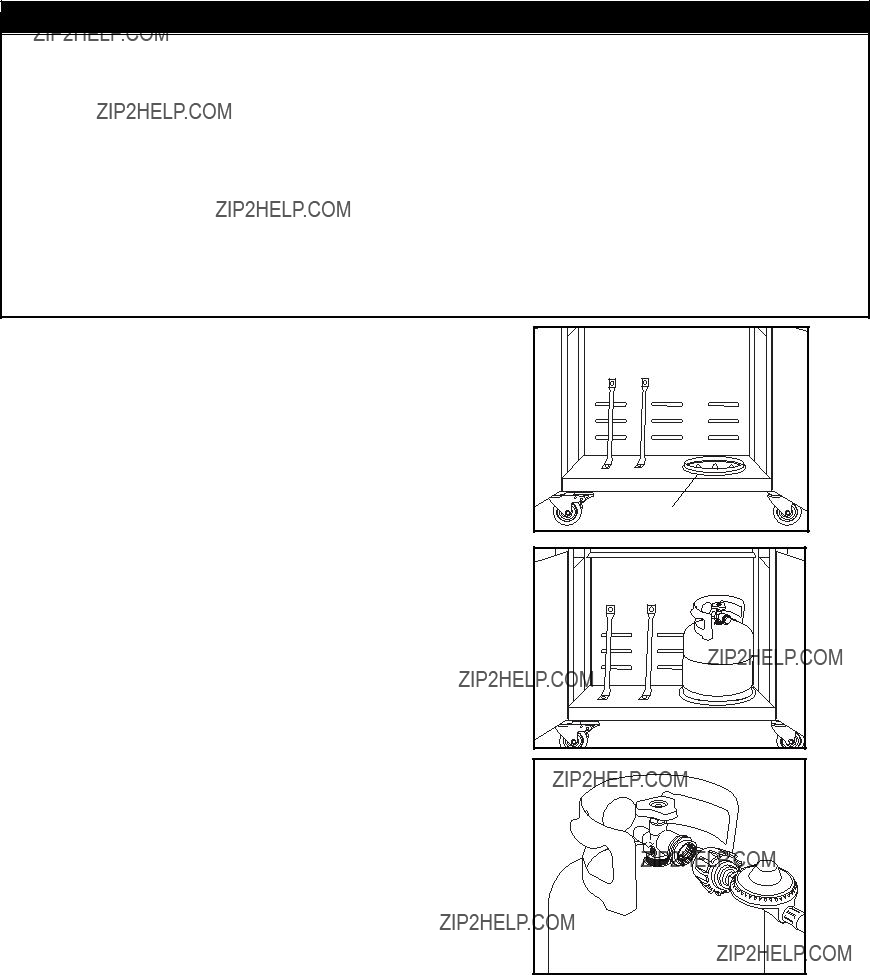
 ADVERTENCIA
ADVERTENCIA
LLENADO DEL CILINDRO DE GAS DE PROPANO L??QUIDO:
???S??lo los distribuidores de gas de propano l??quido capacitados deben llenar o reparar su cilindro.
???Los tanques nuevos deben ser purgados antes de llenarlos; d??gale al distribuidor de gas si est?? usando un tanque nuevo.
???NO permita que el cilindro sea llenado m??s del 80% de su capacidad. Los tanques llenados en exceso pueden crear una condici??n peligrosa. Los tanques llenados en exceso pueden acumular presi??n y hacer que la v??lvula de alivio expulse vapores de gas de propano. El vapor es combustible y, si hace contacto con una fuente de chispas o una llama, puede producirse una explosi??n y causar quemaduras graves, lesiones corporales o hasta la muerte.
???Siempre utilice una tapa de protecci??n del cilindro cuando la parrilla no est?? conectada al mismo.
???Si cambia un cilindro en un programa de cambio apropiado, verifique que el cilindro tenga una v??lvula de Tipo 1 y un dispositivo de protecci??n contra el llenado excesivo (OPD).
3. Cuando est?? activado, un dispositivo limitador de flujo del regulador restringe el flujo de gas a 10 pies c??bicos por hora. Si el dispositivo limitador de flujo est?? activado, aplique el Procedimiento de Reposici??n del Regulador.
PROCEDIMIENTO DE REPOSICI??N DEL REGULADOR
1.Gire las perillas de control de las hornillas a "OFF" (apagado), apague la v??lvula del cilindro y desconecte el regulador del tanque de gas de propano l??quido. Espere aproximadamente dos minutos.
2.Reconecte el regulador y gire lentamente la v??lvula del cilindro para encenderla. Ahora el dispositivo limitador de flujo est?? reposicionado.
38
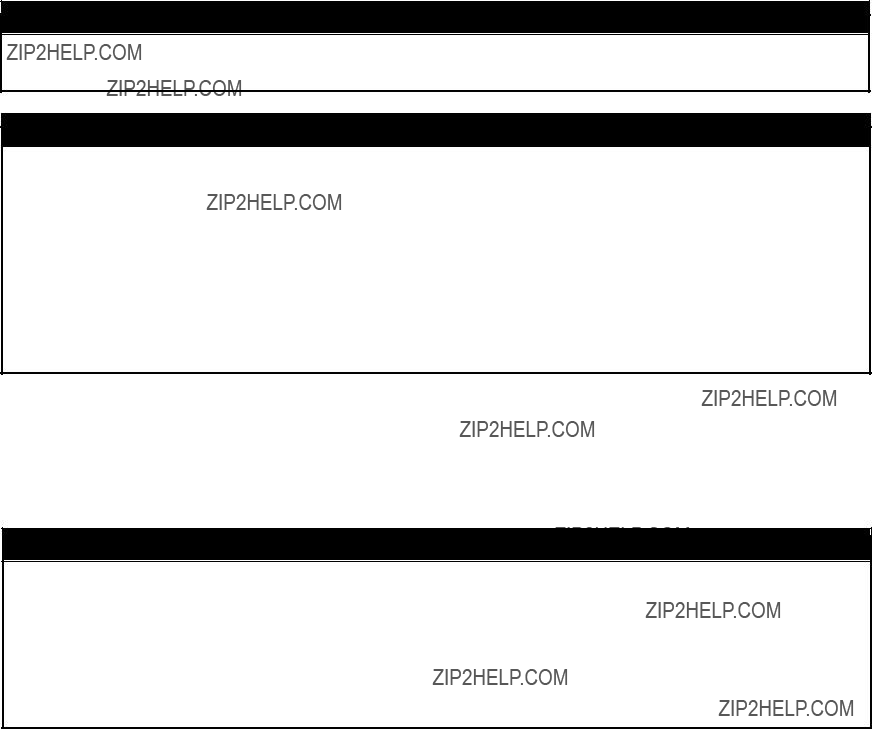
 ADVERTENCIA
ADVERTENCIA
???Nunca use la parrilla sin haber verificado que no hay fugas en las conexiones y mangueras de gas. Consulte los procedimientos apropiados en la secci??n de "Pruebas de detecci??n de fugas" en este manual.
 ADVERTENCIA
ADVERTENCIA
Se debe utilizar el conjunto del regulador de presi??n y manguera suministrado con la parrilla de gas.
???NO intente conectarla a ninguna otra fuente de suministro de combustible, como por ejemplo a una l??nea de gas natural.
???NO use ning??n otro conjunto de regulador de presi??n/manguera que no sea el suministrado con la parrilla. El n??mero de parte del conjunto de regulador de presi??n/manguera de repuesto debe ser Brinkmann N??
???NO intente ajustar o reparar el regulador. El regulador est?? dise??ado para operar a una presi??n de salida m??xima de 11 pulgadas de columna de agua (2,74 kPa).
Durante la instalaci??n y/o reemplazo del cilindro de gas, mantenga la manguera de suministro sin dobleces ni da??os.
Inspeccione visualmente la manguera antes de cada uso para detectar da??os, desgaste excesivo o deterioro. Si detecta da??os, reemplace el conjunto antes de usar la parrilla. S??lo debe usarse el repuesto suministrado por el fabricante.
 ADVERTENCIA
ADVERTENCIA
CONEXI??N DE LA MANGUERA Y REGULADOR A UN CILINDRO DE GAS DE PROPANO L??QUIDO
???Verifique que la v??lvula del tanque est?? CERRADA antes de conectar el cilindro de gas de propano l??quido a la parrilla. Gire la perilla de la v??lvula en sentido horario para cerrarla correctamente. Lea y siga todas las instrucciones y advertencias en las etiquetas de seguridad de la manguera de suministro. Lea y siga todas las advertencias en este manual con respecto al uso seguro de los cilindros de gas de propano l??quido y de la manguera y regulador antes de conectar el cilindro a la parrilla. Lea y siga todas las advertencias en el cilindro de propano l??quido.
CONEXI??N DE LA MANGUERA Y REGULADOR
1.Verifique que la v??lvula del cilindro est?? cerrada girando la perilla en sentido horario.
2.Verifique que las perillas de control de las hornillas de la parrilla est??n en las posiciones OFF (de apagado).
3.Quite la tapa de protecci??n de pl??stico de la v??lvula del cilindro y del dispositivo de conexi??n.
4.Sujete el regulador e inserte el niple del dispositivo de conexi??n en la salida de la v??lvula del cilindro de propano l??quido. Aseg??rese de que el dispositivo est?? centrado correctamente.
5.Gire la tuerca de acoplamiento grande en sentido horario con la mano y apri??tela por completo. Tenga cuidado de no estropear las roscas de la tuerca de acoplamiento al instalarla en la v??lvula del cilindro. No apriete excesivamente la perilla en la v??lvula. No utilice herramientas para apretar la conexi??n.
Nota: Si no puede hacer la conexi??n, repita los Pasos 4 y 5.
6.Aseg??rese de que la manguera no est?? doblada, que no haga contacto con bordes afilados o superficies que puedan calentarse durante el uso.
7.Revise todos los accesorios para asegurar que no haya fugas antes de encender la parrilla. Consulte la secci??n de "Pruebas de detecci??n de fugas" en este manual.
39
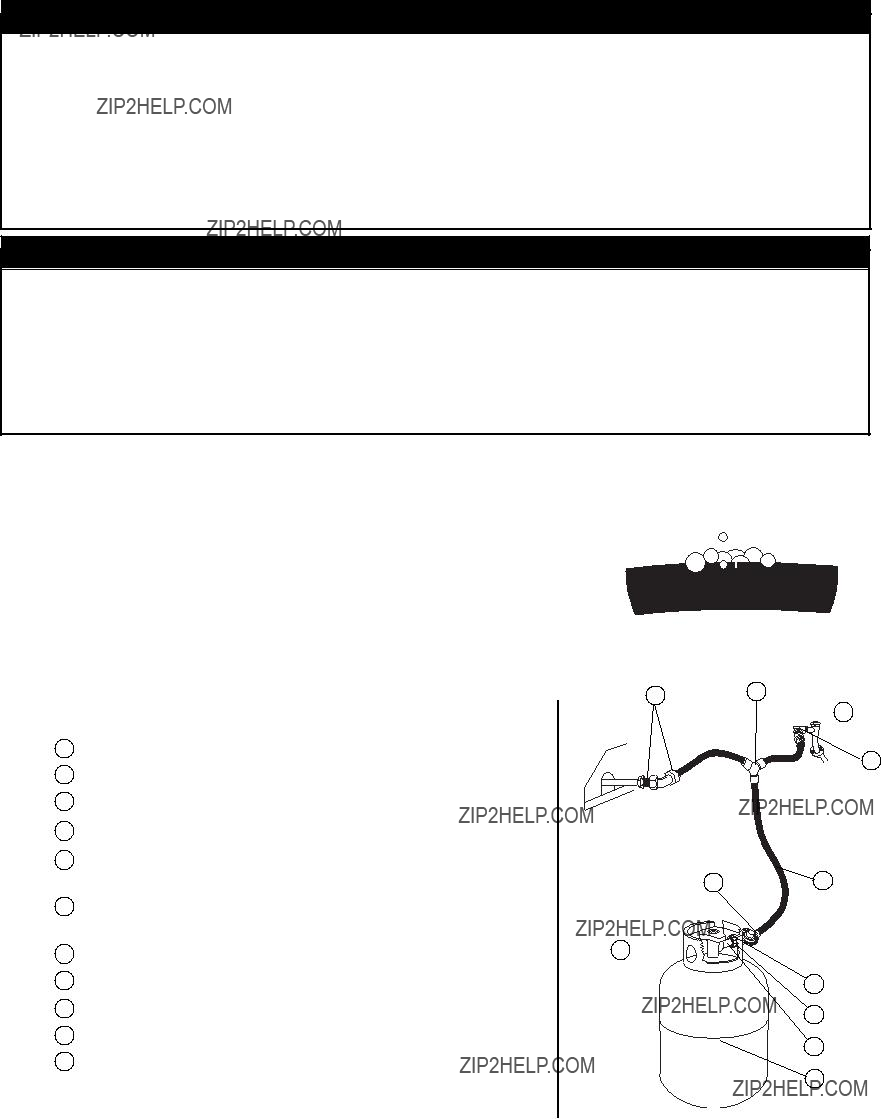
 PELIGRO
PELIGRO
PRUEBAS DE DETECCI??N DE FUGAS:
Para impedir los peligros de incendio o explosi??n:
???NO fume ni permita que haya fuentes de encendido en el ??rea mientras realiza la prueba de detecci??n de fugas.
???Realice la prueba AL AIRE LIBRE ??nicamente, en un ??rea bien ventilada.
???Nunca realice una prueba para detectar fugas con un cerillo o llama expuesta.
???Nunca realice una prueba para detectar fugas mientras est?? usando la parrilla o con la parrilla caliente.
 ADVERTENCIA
ADVERTENCIA
CU??NDO REALIZAR UNA PRUEBA DE DETECCI??N DE FUGAS:
???Despu??s de haber armado la parrilla y antes de encenderla por primera vez, a??n cuando la haya comprado totalmente armada.
???Cada vez que se llene nuevamente el cilindro de gas de propano l??quido o si se reemplaza alguno de los componentes de gas.
???Cada vez que haya movido la parrilla.
???Por lo menos una vez al a??o si no ha usado la parrilla m??s de 60 d??as.
VERIFICACI??N DE AUSENCIA DE FUGAS:
1.Prepare una mezcla de 50% de agua y 50% de jab??n l??quido para lavar platos.
2.Abra la tapa.
3.Aseg??rese de que todas las perillas de control est??n en la posici??n "OFF" (de apagado).
4.Encienda el suministro de combustible en la v??lvula del cilindro. Gire la perilla de la v??lvula del cilindro una vuelta en
sentido contrahorario.
5.Aplique la mezcla de agua jabonosa a los siguientes elementos:
ASoldadura del tanque (cilindro) de suministro.
BTuerca de conexi??n a la v??lvula del tanque.
CLado posterior de la tuerca de conexi??n al niple de lat??n.
DConexi??n del niple de lat??n al regulador.
EConexiones del regulador a las mangueras de suministro de gas.
FConexi??n de la manguera de suministro de gas al conjunto de la v??lvula de la hornilla lateral.
GTapa del v??stago de la v??lvula de la hornilla lateral.
HConexi??n de la hornilla lateral a la manguera.
I Conexi??n de la manguera al m??ltiple de gas.
JEl largo completo de la manguera de suministro de gas.
KV??lvula del tanque al cilindro
Preste atenci??n a las burbujas
IF
 G
G
H
EJ
K 
D
C
B
A
40

6.Inspeccione cada uno de los elementos indicados
7.Cierre el suministro de gas en la v??lvula del cilindro.
8.Gire las perillas de control para descargar la presi??n de gas en la manguera.
9.Gire las perillas de control a la posici??n "OFF" (de apagado).
10.Apriete todas las conexiones con fuga.
11.Repita la prueba con agua jabonosa hasta que no detecte ninguna fuga.
12.Apague el suministro de gas en la v??lvula del cilindro hasta que est?? listo para usar la parrilla.
13.Limpie el residuo jabonoso con agua fr??a y seque con una toalla.
14.Espere 5 minutos para permitir la evacuaci??n de todo el gas del ??rea antes de encender la parrilla.
PRECAUCI??N: NO use la parrilla si no puede eliminar las fugas. Llame a un servicio capacitado de reparaci??n de artefactos a gas.
LISTA DE VERIFICACI??N PRELIMINAR AL ENCENDIDO:
Si hace caso omiso a estos pasos de seguridad, se pueden causar da??os materiales, lesiones corporales, quemaduras graves o hasta la muerte. Estos pasos deben realizarse despu??s de haber armado la parrilla y antes de cada uso. NO opere esta parrilla hasta que haya le??do y entendido TODAS las advertencias e instrucciones en este manual.
LISTA DE VERIFICACI??N PRELIMINAR AL ENCENDIDO:
???Aseg??rese de que la parrilla est?? armada correctamente.
???Inspeccione la manguera de suministro de gas para detectar quemaduras, rozaduras, dobleces y verificar la trayectoria correcta antes de cada uso. Si hay evidencia de abrasi??n o desgaste excesivo, o si la manguera est?? cortada, debe reemplazarse antes de usar la parrilla. Reempl??cela con una manguera y regulador Modelo N??
???Realice una prueba de detecci??n de fugas en todas las conexiones y en la manguera de gas. Consulte la secci??n de "Pruebas de detecci??n de fugas".
???Aseg??rese de que todos los cables de suministro el??ctrico est??n adecuadamente conectados a tierra. Mantenga todos los cables de suministro el??ctrico y la manguera de suministro de combustible alejados de cualquier superficie calentada. La manguera debe estar a una distancia m??nima de 3 pulgadas de las superficies calientes.
???Sit??e la parrilla en un sitio con suelo nivelado y con buena ventilaci??n, a una distancia segura de materiales combustibles, edificios y salientes.
???Instale correctamente la bandeja de recolecci??n de grasa vac??a debajo del agujero de drenaje de grasa en el extremo inferior de la parrilla para contener la grasa durante el uso.
???NO obstruya el flujo del aire de combusti??n y ventilaci??n.
41
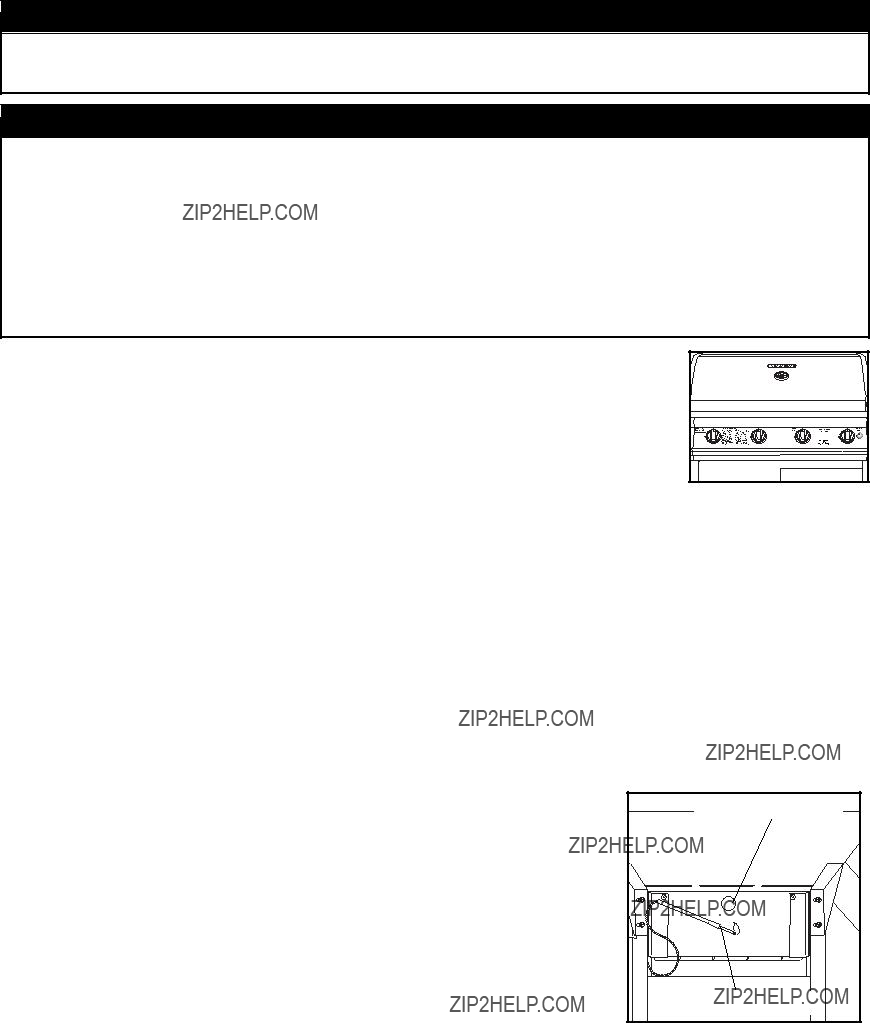
 ADVERTENCIA
ADVERTENCIA
Lea, entienda y siga todas las advertencias e instrucciones indicadas en este manual. NO pase por alto ninguna de las advertencias o instrucciones indicadas en las secciones anteriores de este manual.
 ADVERTENCIA
ADVERTENCIA
INSTRUCCIONES DE ENCENDIDO:
Siga las instrucciones al pie de la letra.
1.ABRA LA TAPA DE LA PARRILLA antes de tratar de encender una hornilla para que no se acumulen vapores dentro de la parrilla. Puede producirse una explosi??n si la tapa de la parrilla no est?? abierta.
2.Verifique que todas las perillas de control de las hornillas y la v??lvula del cilindro est??n en la posici??n OFF (apagado).
3.Abra el suministro de combustible girando la perilla de la v??lvula del cilindro en sentido contrahorario a la posici??n totalmente abierta.
4.NO se pare con la cabeza, el cuerpo o los brazos sobre la parrilla cuando la encienda.
ENCENDIDO DE LAS HORNILLAS PRINCIPALES:
1. Abra la tapa antes de encender la hornilla.
2. Verifique que todas las perillas de control est??n en la posici??n "OFF" (apagado). 3. Empuje y gire la perilla de control de encendido a la posici??n "HIGH" (llama fuerte).
4. Oprima el encendedor electr??nico y mant??ngalo oprimido 3 a 5 segundos para encender la hornilla.
5.Si la hornilla NO se enciende en 5 segundos, gire la perilla de control a la posici??n "OFF" (apagado), espere 5 minutos para que se disipe el gas y repita el procedimiento de encendido.
6.Para encender las demas hornillas, empuje y gire las demas perillas a "HIGH" (llama fuerte) en sequencia desde la derecha a la izquierda. Siga paso 5.
7.Consulte la secci??n de ???Encendido de las hornillas principales con un cerillo???.
8.Para apagar, gire cada perilla de control en sentido horario hasta que se trabe en la posici??n ???OFF??? (apagado).
Nota: Si la hornilla no se enciende o la llama es muy baja, quiz??s est?? bloqueada con un insecto o se haya activado el dispositivo limitador de flujo. Consulte "Instalaci??n/Mantenimiento de las Hornillas" en la secci??n Cuidado y mantenimiento apropiados o el "Procedimiento de Reposici??n del Regulador" en la secci??n Conexi??n del cilindro de propano l??quido y de la manguera / regulador a la parrilla.
ENCENDIDO DE LAS HORNILLAS PRINCIPALES CON UN CERILLO:
1.Abra la tapa antes de encender.
2.Gire las perillas de control de hornillas a posici??n "OFF" (apagado).
7.Si la hornilla no se enciende despu??s de varios intentos con un cerillo,
entonces hay un problema con el suministro de gas. Cierre el gas en la hornilla y en el cilindro. NO trate de operar la parrilla hasta haber encontrado y corregido el problema. Consulte la secci??n de "Identificaci??n y correcci??n de problemas" de este manual.
42

ENCENDIDO DE LA HORNILLA LATERAL:
1. Abra la tapa antes de encender la hornilla lateral.
2. Verifique que la perilla de control est?? en la posici??n "OFF" (apagado).
3. Empuje y de vuelta al bot??n de control de la hornilla lateral a ???HIGH???
4. Oprima el encendedor electr??nico y mant??ngalo oprimido 3 a 5 para encender la hornilla.
5. Si la hornilla NO se enciende en 5 segundos, gire la perilla de control a "OFF" (apagado), espere 5 minutos para que se disipe el gas y repita el procedimiento de encendido.
6.Para apagar, gire cada perilla de control en sentido horario hasta que se trabe en la posici??n "OFF" (apagado).
Nota: Si la hornilla no se enciende o la llama es muy baja, quiz??s est?? bloqueada con un insecto o se haya activado el dispositivo limitador de flujo. Consulte "Instalaci??n/Mantenimiento de las Hornillas" en la secci??n Cuidado y mantenimiento apropiados o el "Procedimiento de Reposici??n del Regulador" en la secci??n Conexi??n del cilindro de propano l??quido y de la manguera / regulador a la parrilla.
ENCENDIDO DE LA HORNILLA LATERAL CON UN CERILLO:
1.Abra la tapa de la hornilla lateral antes de encenderla.
2.Gire la perilla de control de la hornilla a la posici??n "OFF" (apagado).
3.Prenda y coloque un cerillo aproximadamente a 1/2" pulgada (1 a 2 cm) de la hornilla.
4.Gire la perilla de control de la hornilla lateral a la posici??n "HIGH" (llama fuerte). La hornilla debe encenderse en 5 segundos.
5.Si la hornilla no se enciende, gire la perilla de control a la posici??n "OFF" (apagado) y espere 5 minutos para que se disipe el gas y repita el procedimiento de encendido.
6.Si la hornilla no se enciende despu??s de varios intentos con un cerillo, entonces hay un problema con el suministro de gas. Cierre el gas en la hornilla y en el cilindro. NO trate de operar la parrilla hasta haber encontrado y corregido el problema. Consulte la secci??n de "Identificaci??n y correcci??n de problemas" de este manual.
APAGADO DE LA PARRILLA:
1.Cierre la v??lvula del cilindro.
2.Gire todas las perillas de control de las hornillas a la posici??n "OFF" (apagado).
Nota: Apague el cilindro de propano l??quido primero para evitar que quede gas en el sistema bajo presi??n.
 PRECAUCI??N:
PRECAUCI??N:
???La v??lvula del cilindro siempre debe estar en la posici??n de
apagado o cerrada cuando la parrilla no est?? en uso
Para cerrar la v??lvula del cilindro, gire la perilla en sentido horario hasta que se detenga.
43
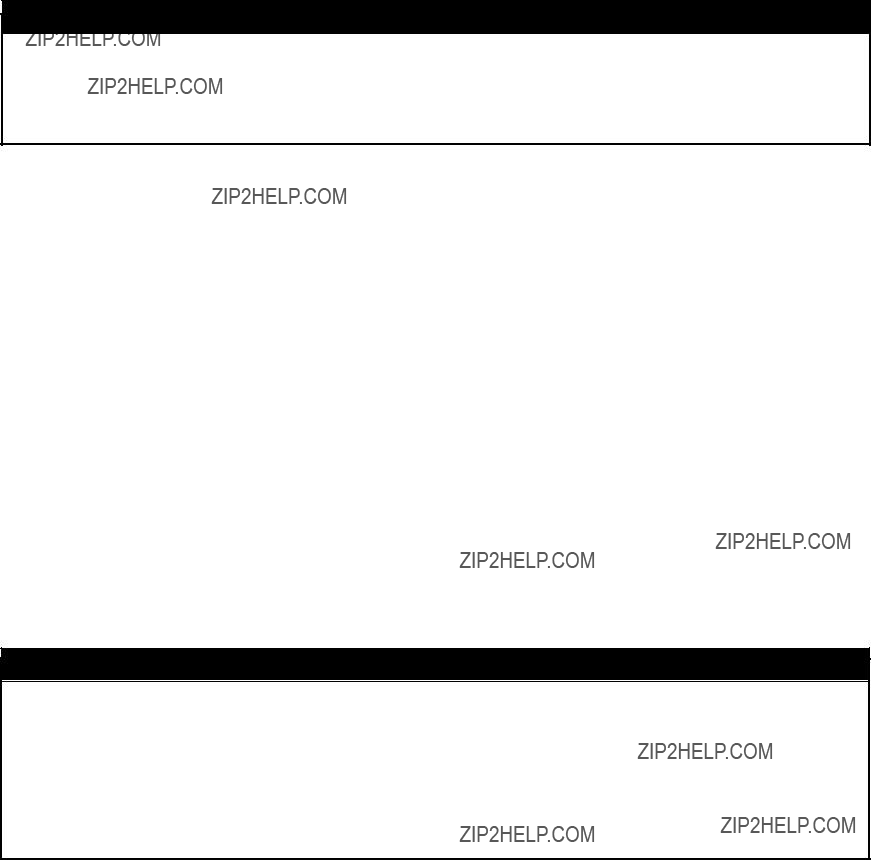
 ADVERTENCIA
ADVERTENCIA
OPERACI??N DE LA PARRILLA:
Nunca use briquetas de carb??n en una parrilla de gas. Los pedacitos de madera para dar sabor se deben colocar en una cajita de fumar de metal para contener la ceniza y para prevenir fuegos. Lea y siga todas las advertencias e instrucciones indicadas en las secciones anteriores de este manual.
PREPARACI??N DE LA PARRILLA PARA USARLA POR PRIMERA VEZ:
???Debido al proceso de fabricaci??n y preservaci??n de los componentes de la parrilla, puede haber residuo de aceite presente en la hornillas y en las superficies de cocci??n de la parilla.
???Antes de cocinar por primera vez en la parrilla, precali??ntela durante 15 minutos en "HIGH" (llama fuerte) para quemar este aceite residual.
PRECALENTAMIENTO DE LA PARRILLA:
???Se recomienda que precaliente la parrilla antes de usarla. Esto asegura que las superficies para cocinar est??n a las temperaturas deseadas para dorar los az??cares de los alimentos cuando cocine. Despu??s de encender la parrilla, coloque las perillas de control de las hornillas principales a la posici??n "HIGH" (llama fuerte) durante 10 a 15 minutos. Cierre la cubierta durante el per??odo de precalentamiento.
CONTROL DE LAS LLAMARADAS:
???Las llamaradas son parte de cocinar carnes en una parrilla de gas. Esto agrega un sabor ??nico a los alimentos cocinados en una parrilla de gas. Las llamaradas excesivas pueden cocinar demasiado los alimentos y producir una situaci??n peligrosa para usted y la parrilla. Las llamaradas excesivas son el resultado de la acumulaci??n de grasa en la secci??n inferior de la parrilla. Si esto ocurre, NO eche agua a las llamas. Esto puede producir salpicaduras de grasa y causar quemaduras graves o lesiones corporales. Si la grasa produce un incendio, cierre la tapa y apague las hornillas principales hasta que la grasa se queme. Tenga cuidado cuando abra la tapa ya que se pueden producir llamaradas repentinas.
 ADVERTENCIA
ADVERTENCIA
???NO deje la parrilla desatendida mientras est?? en uso.
???NO mueva la parrilla cuando est?? en uso. Trabe las ruedas en posici??n para estabilizar la parrilla.
???NO utilice agua para apagar las llamaradas.
???Tenga a mano un extinguidor de incendios adecuado para usar con artefactos a gas.
PARA REDUCIR AL M??NIMO LAS LLAMARADAS:
???Recorte el exceso de grasa de la carne antes de cocinarla.
???Cocine la carne con alto contenido de grasa (pollo o puerco) con llama suave o indirecta.
???Verifique que la parrilla est?? sobre suelo nivelado y que la grasa puede salir de la parrilla a trav??s del agujero de drenaje en la secci??n inferior y acumularse en la gaveta para grasa.
COCCI??N INDIRECTA:
???La cocci??n indirecta es el proceso de cocinar sus alimentos sin que la fuente de calor est?? directamente debajo de los mismos. Puede dorar carnes sobre una llama fuerte en un lado de la parrilla y cocinar lentamente un asado en el otro lado (sin encender) de la parrilla.
44
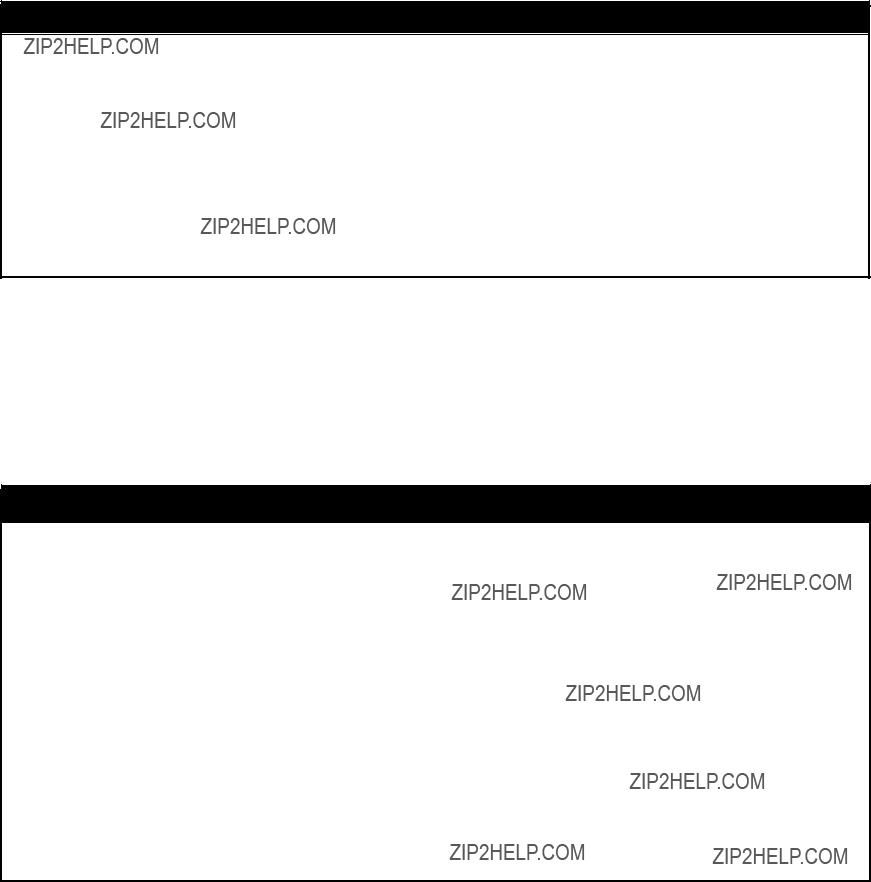
COCCI??N ESTILO ROTISSERIE:
???La parrilla viene preparada de la f??brica con agujeros de montaje para instalar un asador estilo rotisserie (vendido aparte). No use un asador estilo rotisserie que no haya sido fabricado especialmente para esta parrilla.
???Lea y siga todas las instrucciones incluidas con el asador estilo rotisserie. Guarde las instrucciones para referencia futura.
???No use la hornilla lateral cuando est?? usando un asador estilo rotisserie.
 ADVERTENCIA
ADVERTENCIA
???Cuando use un asador estilo rotisserie de corriente alterna, debe estar conectado a tierra de acuerdo con los c??digos locales o, si no los hay:
???En EE.UU.: El C??digo El??ctrico de EE.UU. ???
???En Canad??: el C??digo El??ctrico Canadiense ??? CSA C22.1
???El asador estilo rotisserie est?? equipado con un enchufe de tres clavijas para proteger al usuario contra el electrochoque. Este enchufe debe conectarse directamente a un recept??culo para tres clavijas conectado correctamente a tierra. Nunca corte o quite el enchufe de conexi??n a tierra. Cualquier cable de extensi??n tambi??n debe tener un recept??culo para tres clavijas.
???Todos los cables de suministro el??ctrico deben mantenerse alejados del agua y de las superficies calientes de la parrilla.
USO DE OTRAS FUNCIONES DE LA PARRILLA:
LA HORNILLA LATERAL:
???La hornilla lateral puede usarse para preparar platillos de acompa??amiento como frijoles, papas, ma??z o para calentar salsas.
???La v??lvula de la hornilla debe ajustarse de llama fuerte a llama suave de acuerdo con sus exigencias de cocina.
 ADVERTENCIA
ADVERTENCIA
???Lea las instrucciones de encendido de la parrilla para encender la hornilla lateral.
???Nunca cierre la tapa de la hornilla lateral cuando est?? encendida.
???Utilice una olla de 10 pulgadas de di??metro o m??s peque??a SIN mango extendido cuando cocine en la hornilla lateral. Centre la olla sobre la hornilla.
???Nunca coloque m??s de 15 libras sobre la hornilla lateral. La hornilla lateral no est?? construida para soportar m??s de 15 libras de peso.
???Sea precavido para evitar chocar contra la parrilla, la hornilla lateral o la olla para evitar derramar el contenido de la olla y prevenir las quemaduras graves.
???NO utilice la hornilla lateral para fre??r alimentos en aceite, evitando as?? los peligros asociados con el encendido del aceite y la creaci??n de una situaci??n peligrosa.
45
RECOMENDACIONES PARA COCINAR EN LA PARRILLA
LIMPIEZA
???Siempre l??vese bien las manos con agua caliente y jab??n antes de manipular alimentos y despu??s de tocar carne, pollo o mariscos crudos.
???Cuando utilice una fuente para llevar carne, pollo o mariscos crudos a la parrilla, aseg??rese de lavar bien la fuente con agua caliente y jab??n antes de colocar alimentos cocidos en ella, o utilice fuentes distintas para los alimentos crudos y cocidos.
???Nunca utilice los mismos utensilios para manipular carne cruda, pollo crudo o mariscos, a menos que los lave bien con agua caliente y jab??n.
???Nunca reutilice el adobo de la carne o pollo crudo en alimentos ya cocidos y listos para servir.
COCINAR A LA PARRILLA A LA TEMPERATURA APROPIADA
???Utilice un term??metro para carne para verificar que haya alcanzado una temperatura interna segura. Puede ordenar un term??metro de calidad comercial de Brinkmann. Para obtener m??s informaci??n sobre este producto y otros accesorios Brinkmann, consulte las p??ginas de accesorios al final de este manual.
???El Departamento de Agricultura de EE.UU. recomienda que los siguientes alimentos alcancen las siguientes temperaturas m??nimas:
Chuletas . . . . . . . . . . . . . . . . . . . . . . .145 grados F (62.8?? C)
Carne molida . . . . . . . . . . . . . . . . . . .160 grados F (71?? C)
Cerdo . . . . . . . . . . . . . . . . . . . . . . . . .160 grados F (71?? C)
Pollo . . . . . . . . . . . . . . . . . . . . . . . . . .180 grados F (82?? C)
Asados . . . . . . . . . . . . . . . . . . . . . . . .145 grados F (62.8?? C)
Mariscos . . . . . . . . . . . . . . . . . . . . . .140 grados F (60?? C)
Verduras . . . . . . . . . . . . . . . . . . . . . . .145 grados F (62.8?? C)
RECOMENDACIONES ??TILES
???Si precocina carne o pollo, h??galo inmediatamente antes de cocinarlo en la parrilla.
???Nunca descongele carne a la temperatura ambiente o sobre un mostrador.
???Refrigere los restos a m??s tardar 2 horas despu??s de haber sacado la comida de la parrilla.
???Para mayor informaci??n, llame a la L??nea de Informaci??n sobre Carne y Pollo de USDA al n??mero sin cargo
CUIDADO Y MANTENIMIENTO APROPIADOS
???Para proteger su parrilla contra la oxidaci??n excesiva, mant??ngala limpia y cubierta todo el tiempo cuando no la est?? usando. Una cobertura para su parrilla se puede solicitar directamente de Brinkmann llamando
???Lave las rejillas para cocinar y las placas de distribuci??n de calor con agua jabonosa caliente, enju??guelas bien y s??quelas. Aplique una capa ligera de aceite vegetal l??quido o en aerosol a las rejillas para cocinar.
???Limpie el interior y exterior de la parrilla con un pa??o h??medo. Aplique una capa ligera de aceite vegetal l??quido o en aerosol a la superficie interior para impedir la oxidaci??n.
???Si oxidaci??n aparece en la superficie exterior de su parrilla, limpia y de brillo a la ??rea afectada con lana de acero o papel de lija de esmeril. Retoque con pintura de
???Mantenga exterior de parrilla limpia utilizando producto de limpieza para superficies de acero inoxidable.
???Nunca aplique pintura a la superficie interior. Las manchas de oxidaci??n en la superficie interior pueden pulirse, limpiarse y luego cubrirse con una capa ligera de aceite vegetal l??quido o en aerosol para reducir al m??nimo la oxidaci??n.
46
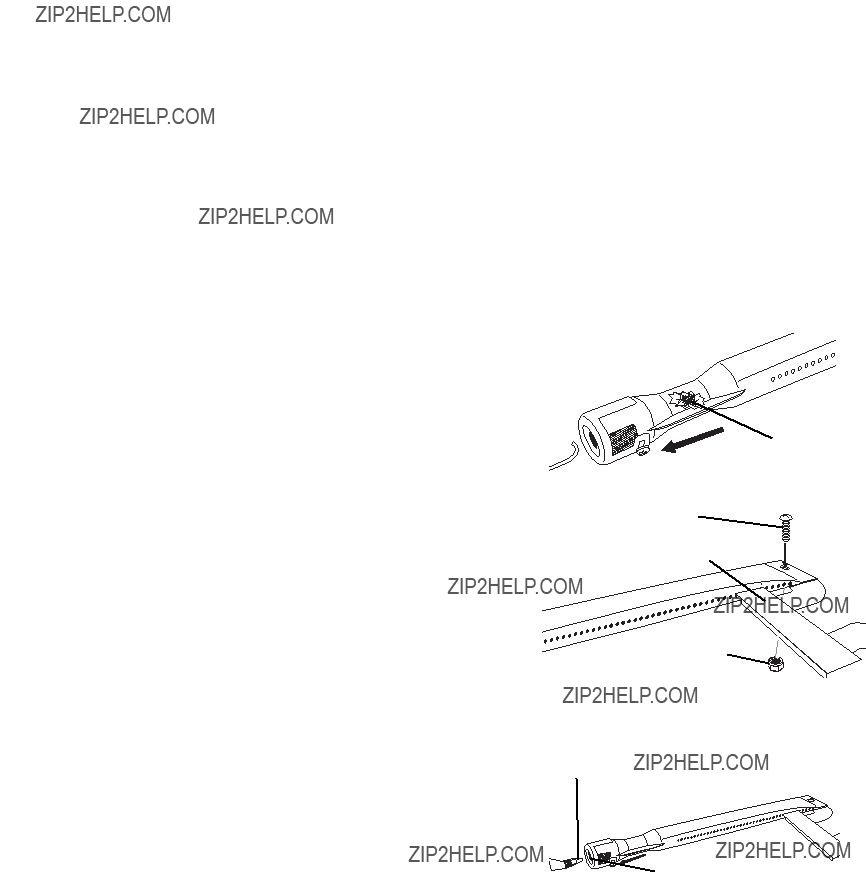
LIMPIEZA Y MANTENIMIENTO:
???Mantenga el artefacto alejado de materiales combustibles, gasolina u otros vapores o l??quidos inflamables.
???Mantenga los orificios de ventilaci??n del gabinete del cilindro sin residuos.
???Observe las llamas de las hornillas para verificar que est??n funcionando bien (consulte el dibujo en "Instalaci??n/Mantenimiento de las Hornillas" en la secci??n de Cuidado y mantenimiento apropiados). Las ara??as y otros insectos pueden formar nidos en la hornilla y bloquear el paso del gas.
???Verifique lo siguiente por lo menos dos veces al a??o o despu??s de largos per??odos de almacenaje para cocinar sin peligro y obtener el mejor rendimiento de su parrilla.
???Aseg??rese de apretar toda la torniller??a (tuercas, pernos, tornillos, etc.) por lo menos dos veces por a??o.
 PRECAUCI??N: Algunas partes pueden tener bordes afilados. Use guantes de protecci??n si es necesario.
PRECAUCI??N: Algunas partes pueden tener bordes afilados. Use guantes de protecci??n si es necesario.
???Retire las rejillas para cocinar, las placas de distribuci??n de calor y las hornillas del interior de la parrilla. Utilice un cepillo con agua caliente y detergente para quitar el exceso de residuos. NUNCA use un limpiahornos comercial. Enjuague bien con agua. Seque con una toalla y reinstale todos los componentes en la forma descrita en las instrucciones de armado.
INSTALACI??N/MANTENIMIENTO DE LAS HORNILLAS
???Si bien las hornillas est??n fabricadas de acero Inoxidable, pueden oxidarse debido al calor extremo y a los ??cidos de los alimentos. Inspeccione regularmente las hornillas para ver si tienen agujeros anormales y otras se??ales de da??os por corrosi??n. Si detecta da??os, reemplace la hornilla.
???NO obstruya el flujo del aire de combusti??n y ventilaci??n. Las ara??as u otros insectos pueden hacer nidos y bloquear los tubos de las hornillas. Los tubos bloqueados impiden que fluya gas a las hornillas y puede producirse un incendio en el tubo o debajo de la parrilla. Siga las instrucciones a continuaci??n para limpiar el tubo y/o reemplazar partes de la hornilla, o si tiene dificultad para encender la parrilla.
1.Apague el gas en las perillas de control y en la v??lvula del tanque del cilindro de propano l??quido.
2.Retire las rejillas para cocinar y las placas de distribuci??n del calor.
3. Retire los pernos debajo del "pie" de cada hornilla con un destornillador.
4. Levante cuidadosamente el canal de paso y ret??relo de las hornillas.
6.Introduzca un cepillo angosto para botellas o un alambre doblado en forma de gancho peque??o en el tubo y en el orificio de la llama de
7. Utilice aire comprimido para soplar el tubo de cada hornilla; el aire debe salir por los orificios de las llamas. Verifique que salga aire de cada orificio.
9. Revise la hornilla para detectar da??os; si nota grietas o agujeros grandes, reemplace la hornilla.
IMPORTANTE: La abertura de la hornilla debe deslizarse sobre la boquilla de la v??lvula.
Boquilla de la V??lvula
10. Reinstale CUIDADOSAMENTE las hornillas alineando el agujero del perno a la izquierda como ilustrado.
11. Instale nuevamente los pernos M5 y las tuercas M5 para cada hornilla y canal de paso.
Abertura de la Hornilla
47
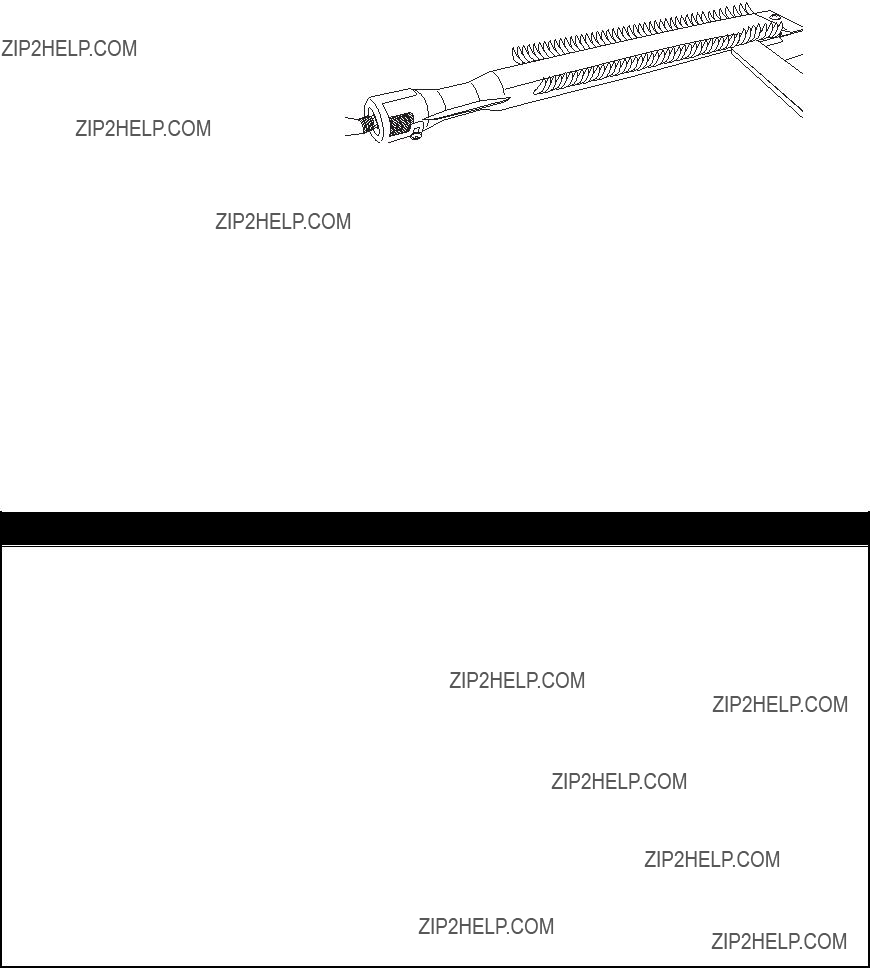
CONTINUACION DE INSTALACI??N/MANTENIMIENTO DE LAS HORNILLAS
Nota: Siga la secci??n ???Verificaci??n de Ausencia de Fugas??? de este manual. Vuelva a encender las hornillas para verificar la operaci??n apropiada)
12. Reinstale las placas de distribuci??n del calor y las rejillas para cocinar.
OPERACION APROPIADA DE HORNILLA
REJILLAS PARA COCINAR
???L??mpielas con agua y detergente de jab??n suave. Se puede usar un cepillo con cerdas de lat??n o una esponja de limpieza de nil??n para quitar los residuos de las superficies de acero inoxidable. No use cerdas de acero para limpiar las parrillas. El acero puede picar o agrietar el acabado. NO use un limpiahornos comercial.
PLACAS DE DISTRIBUCI??N DEL CALOR
???Puede ser necesario inspeccionar y limpiar peri??dicamente la placa de distribuci??n de calor para evitar la acumulaci??n excesiva de grasa. Retire la rejilla para cocinar cuando la parrilla est?? fr??a. Inspeccione las placas de distribuci??n de calor y reempl??celas si est??n rotas o da??adas. No permita que las placas de distribuci??n de calor se da??en hasta el punto que puedan caerse sobre las hornillas. Reemplace las placas de distribuci??n de calor y las rejillas para cocinar y encienda las hornillas. Haga funcionar la parilla en "HIGH" (llama fuerte) durante 10 minutos para quitar el exceso de grasa.
 ADVERTENCIA
ADVERTENCIA
TRANSPORTE Y ALMACENAJE:
???Nunca mueva una parrilla cuando est?? caliente o con objetos sobre las superficies de cocci??n.
???Aseg??rese de que la v??lvula del cilindro est?? cerrada. Despu??s de mover la parrilla, verifique que no haya fugas en ninguna de las conexiones de gas. Consulte las instrucciones para las Pruebas de detecci??n de fugas.
???NO guarde un cilindro de gas de propano l??quido de reserva (lleno o vac??o) debajo o cerca de la parrilla.
???Nunca guarde l??quidos inflamables o latas de aerosol debajo o cerca de la parrilla.
???NO apague incendios de grasa con agua.
???Si el artefacto a gas para cocinar al aire libre no est?? en uso, se debe apagar el gas en el cilindro de suministro.
???Se permite guardar un artefacto a gas para cocinar al aire libre en un ??rea interior s??lo si el cilindro se desconecta y se retira del artefacto.
???Los cilindros deben guardarse afuera, fuera del alcance de los ni??os y no en un ??rea interior, garaje u otra ??rea cerrada.
???Podr??a haber nidos de ara??as u otros residuos bloqueando la hornilla cuando saque la parrilla del almacenaje. Consulte "Instalaci??n/Mantenimiento de las Hornillas" en la secci??n de Cuidado y mantenimiento apropiados.
48
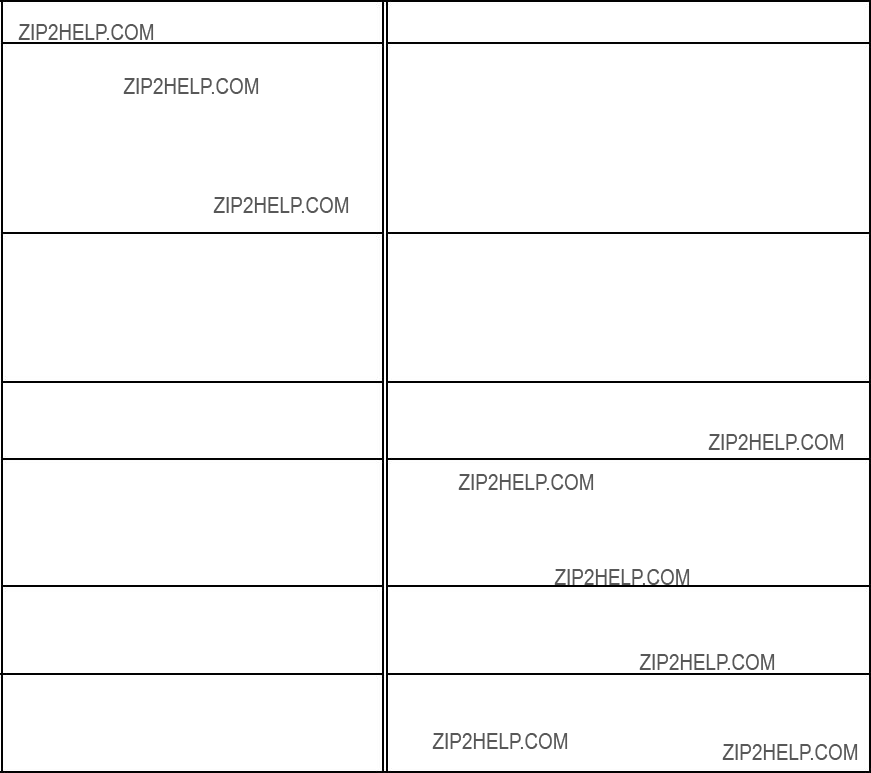
ANTES DE GUARDAR LA PARRILLA:
???Verifique que la v??lvula del cilindro est?? bien cerrada.
???Limpie todas las superficies.
???Aplique una capa ligera de aceite para cocinar a las hornillas para evitar la oxidaci??n excesiva.
???Si va a guardar la parrilla en un ??rea interior, desconecte el tanque de propano l??quido y d??jelo
AFUERA.
???Coloque una tapa de protecci??n sobre el tanque de propano l??quido y guarde el tanque afuera en un ??rea bien ventilada y fuera de la luz directa del sol.
???Limpie la hornilla antes de usar despu??s del almacenaje, al comienzo de la temporada de uso de la parrilla o si no usa la parrilla por un mes. Las ara??as y otros insectos pueden formar nidos en los tubos de las hornillas (especialmente durante los meses de fr??o). Estos nidos pueden producir llamaradas en los tubos de las hornillas o debajo de la parrilla.
???Si est?? guardando la parrilla afuera, c??brala con la cubierta para protegerla del tiempo.
IDENTIFICACI??N Y CORRECCI??N DE PROBLEMAS
Problema:
???La hornilla no enciende
???Llamas en la perilla de control
???Llamas amarillas en la hornilla
???La llama se apaga en la posici??n "LOW" (llama suave)
???La hornilla no se calienta lo suficiente
???La parrilla est?? demasiado caliente
Causas posibles:
1.Revise el nivel de combustible en el cilindro de propano l??quido.
2.Chispa de electrodo defectuosa. Vea si puede encender la parrilla con un cerillo. Puede ser necesario ajustar el electrodo o colector.
3.Es posible que la hornilla no est?? bien asentada.
4.Es posible que la hornilla est?? obstruida.
5.Es posible que la v??lvula del cilindro est?? cerrada.
6.El regulador no est?? asentado correctamente sobre la v??lvula del cilindro.
1.Es posible que los agujeros de la hornilla est??n obstruidos. Consulte "Instalaci??n/Mantenimiento de las Hornillas" en la secci??n de Cuidado y mantenimiento apropiados.
2.La hornilla est?? asentada incorrectamente sobre la v??lvula de control.
3.Las conexiones de gas pueden estar sueltas. Revise para verificar que no haya fugas y ajuste todas las conexiones.
1.La hornilla est?? obstruida. Consulte "Instalaci??n/Mantenimiento de las Hornillas" en la secci??n de Cuidado y mantenimiento apropiados.
1.Es posible que los agujeros de la hornilla est??n obstruidos. Consulte "Instalaci??n/Mantenimiento de las Hornillas" en la secci??n de Cuidado y mantenimiento apropiados.
2.La parrilla no se precalent?? lo suficiente.
3.La hornilla est?? asentada incorrectamente sobre la v??lvula de control.
1.Se activ?? el dispositivo de control de flujo en el regulador. Consulte el Procedimiento de reposici??n del regulador en la secci??n Conexi??n del cilindro de propano l??quido y de la manguera / regulador a la parrilla.
1.Acumulaci??n excesiva de grasa produce llamaradas.
2.Regulador da??ado o defectuoso. Reempl??celo con partes autorizadas de f??brica.
3.Cocine en una posici??n de temperatura m??s baja.
49
PREGUNTAS FRECUENTES
El n??mero de modelo y n??mero de serie de la parrilla y la informaci??n para contactarse con el Servicio de atenci??n al cliente de Brinkmann se incluyen en una etiqueta plateada abajo del panal de control o en el costado de la caja de la misma, debajo del estante lateral y tambien atras del assador en el panal.
Estas preguntas y respuestas son para su conocimiento general y podr??an no ser aplicables a su modelo de parrilla.
Pregunta: ??Por qu?? mi parrilla no enciende correctamente?
Respuesta: Siempre siga las instrucciones de encendido indicadas en el panel de control o en este manual. Tambi??n revise estas causas:
???Revise el suministro de gas de propano l??quido.
???Verifique que todas las conexiones de gas est??n seguras.
???Quiz??s sea necesario reemplazar la pila AA del encendedor.
???Los cables de encendido pueden estar sueltos. Quite la pila, inspeccione la caja de conexiones del encendedor situada detr??s el panel de control y conecte los cables sueltos.
???Puede ser necesario reemplazar las puntas de los electrodos de chispa. Con el suministro de gas cerrado y la perilla de control en la posici??n "OFF" (apagado), presione el bot??n del encendedor y haga que otra persona verifique la presencia de una chispa en las puntas de los electrodos. El espacio entre la punta del electrodo de chispa y el receptor de chispa debe ser de aproximadamente 3/16 pulg. Si es necesario ajustar la punta del electrodo, d??blela para dejar el espacio apropiado.
???Verifique que el extremo del tubo venturi de cada hornilla est?? situado correctamente sobre su accesorio del orificio de la v??lvula de gas.
???Puede haber una obstrucci??n en la l??nea de gas. Para corregirla, quite la manguera / regulador de gas de propano l??quido o la l??nea combustible de gas natural de la parrilla. Abra el suministro de gas durante un segundo para determinar si hay obstrucci??n. Si no hay obstrucci??n, reconecte la l??nea de combustible. Si la l??nea de combustible est?? bloqueada, reempl??cela con un nuevo conjunto de manguera / regulador.
???Si sospecha una obstrucci??n en el conjunto de la manguera / regulador, en el orificio o en las v??lvulas de gas, llame al Servicio de atenci??n al cliente de Brinkmann al
Pregunta: ??Por qu?? mi parilla de gas de propano l??quido tiene una llama suave o de color anaranjado / amarillo?
Respuesta: Es necesario purgar el aire de la l??nea de gas o reposicionar el dispositivo limitador de flujo del regulador. Si se abre la v??lvula por completo o demasiado r??pido, se activa el dispositivo limitador de flujo del regulador para que apague el flujo de gas, lo cual impide que fluya demasiado gas a la parrilla. NOTA: Se debe seguir este procedimiento cada vez que se conecte un nuevo tanque de gas de propano l??quido a la parrilla:
REPOSICI??N DEL DISPOSITIVO LIMITADOR DE FLUJO DEL REGULADOR
???Gire la perilla de control a la posici??n "OFF" (apagado).
???Apague el tanque de gas de propano l??quido en la v??lvula del cilindro.
???Desconecte el regulador del tanque de gas de propano l??quido.
???Deje estar durante dos minutos.
???Reconecte el regulador al tanque de gas de propano l??quido.
???Abra la tapa de la parrilla o de la hornilla lateral. Gire lentamente la v??lvula del cilindro a 1/4 ?? 1/2 abierta.
???Encienda la parrilla siguiendo las instrucciones en el panel de control o en el manual del propietario
Pregunta: ??C??mo y cu??ndo limpio los componentes de cocci??n interiores de la parrilla?
Respuesta: Use un cepillo de limpieza de fibra o lat??n para limpiar el interior de la parrilla, las rejillas para cocinar, las placas de distribuci??n de calor y los recipientes de grasa. Nunca use un cepillo de alambre o raspador met??lico en las partes de acabado de porcelana ya que puede rayar o estropear el acabado de porcelana y fomentar la oxidaci??n.
50
PREGUNTAS FRECUENTES
Limpieza de las rejillas para cocinar de acero inoxidable: Lave las rejillas con un detergente suave y enju??guelas con agua caliente antes del uso inicial y seg??n sea necesario. NO use un limpiahornos comercial. Para residuos de alimentos persistentes, utilice un desgrasador y un cepillo de limpieza de fibra o lat??n.
Limpieza de rejillas para cocinar de hierro fundido con acabado de porcelana: Lave las rejillas con un detergente suave y enju??guelas con agua caliente antes del uso inicial y seg??n sea necesario. Para residuos de alimentos persistentes, utilice un desgrasador y un cepillo de limpieza de fibra o lat??n. S??quelas de inmediato con un pa??o suave o toallas de papel.
Limpieza de la placa de distribuci??n de calor: Las placas de distribuci??n de calor se deben limpiar cada vez que se acumula comida o gotas de grasa para reducir la posibilidad de llamaradas. Lave las placas de distribuci??n de calor con un detergente suave y enju??guelas con agua caliente. Para residuos de alimentos persistentes, utilice un desgrasador y un cepillo de limpieza de fibra o lat??n. Nunca use un cepillo de alambre o raspador met??lico en las placas de distribuci??n de calor con acabado de porcelana ya que puede rayar o estropear el acabado de porcelana y fomentar la oxidaci??n.
Limpieza de la bandeja para grasa y/o la gaveta para grasa: Es necesario inspeccionar la bandeja para grasa y/o gaveta para grasa (en algunos modelos) antes de cada uso de la parrilla para reducir la probabilidad de incendio. Quite la grasa (una esp??tula de pl??stico funciona bien) y lave todas las partes con jab??n suave o desgrasador y una soluci??n de agua tibia
Pregunta: ??Qu?? es lo que causa la oxidaci??n de las partes de la parrilla y cu??l es su efecto en los materiales de la misma?
Respuesta: La oxidaci??n es un proceso natural que puede ocurrir en piezas de hierro fundido y acero. La oxidaci??n no afectar?? el funcionamiento a corto plazo de la parrilla. Las partes de la parrilla de acero inoxidable no se oxidar??n. Sin embargo, la exposici??n a la intemperie y el calor extremo pueden hacer que la tapa de acero inoxidable se torne de un color bronce. Esto es decoloraci??n, no oxidaci??n, y no se considera un defecto de fabricaci??n.
Pregunta: ??Por qu?? la tapa de la parrilla de acero inoxidable se descolora y c??mo la puedo limpiar?
Respuesta: El humo, la exposici??n a la intemperie y el calor extremo pueden hacer que la tapa de acero inoxidable se torne de un color bronce. Esto no debe confundirse con oxidaci??n y no es un defecto del producto. Los aceites para maquinaria utilizados en el proceso de fabricaci??n del acero inoxidable, y tambi??n el aceite para cocinar y la tapa sucia de la parrilla pueden fomentar la decoloraci??n de la tapa si no se limpian antes de usar la parrilla. Despu??s de armar la parrilla, quite la pel??cula de protecci??n de PVC de la tapa y utilice un limpiador de acero inoxidable y un pa??o suave para quitar el adhesivo residual y los aceites de adentro y afuera de la tapa. Nunca use limpiadores o fregadores abrasivos. Adem??s de la limpieza inicial, la limpieza de rutina para quitar el polvo, la grasa y los aceites ayudar?? a prevenir la decoloraci??n de la tapa.
Pregunta: ??Puedo convertir la parrilla de gas de propano a gas natural?
Respuesta: La mayoria de parrillas de gas est??n fabricadas de acuerdo con especificaciones exactas y est??n certificadas ??nicamente para uso con gas de propano o gas natural. Sin embargo, algunos modelos pueden convertirse con seguridad utilizando juegos de conversi??n disponibles para ciertos modelos. Por favor llame a servicio al cliente de Brinkmann al
Pregunta: ??Por qu?? el conjunto de la manguera / regulador incluido con mi parrilla no calza en el tanque de gas de propano l??quido antiguo que he usado durante a??os?
Respuesta: El Gobierno de EE.UU. regula los artefactos de gas y los tanques de gas de propano l??quido. Los conectores del tanque de gas de propano l??quido fueron actualizados para garantizar el cumplimiento de los reglamentos que fueron cambiados. Si su tanque de gas de propano l??quido no calza en la manguera /regulador suministrado con su nueva parrilla, el tanque est?? obsoleto y debe ser reemplazado. Nota: A partir del 1?? de abril de 2002, todos los tanques de gas de propano l??quido deben incluir un dispositivo "OPD" de protecci??n contra el sobreflujo. Este dispositivo interno impide que un tanque de gas de propano l??quido se llene en exceso. Los tanques sin una v??lvula OPD no pueden volver a llenarse.
Pregunta: Algunas veces escucho un zumbido proveniente del regulador de gas. ??Debo preocuparme de eso?
Respuesta: El zumbido se debe al flujo de gas a trav??s del regulador. Un poco de ruido es normal y no interfiere con el funcionamiento de la parrilla. Si el zumbido es fuerte y excesivo, puede ser necesario purgar el aire de la l??nea de gas o reposicionar el dispositivo limitador de flujo del regulador siguiendo el Procedimiento de reposici??n del regulador en la secci??n "Conexi??n del cilindro de propano l??quido y de la manguera / regulador a la parrilla. Se debe seguir este procedimiento cada vez que se conecte un nuevo tanque de gas de propano l??quido a la parrilla. Si necesita ayuda, consulte el manual del propietario o llame al Servicio de atenci??n del cliente de Brinkmann al
51
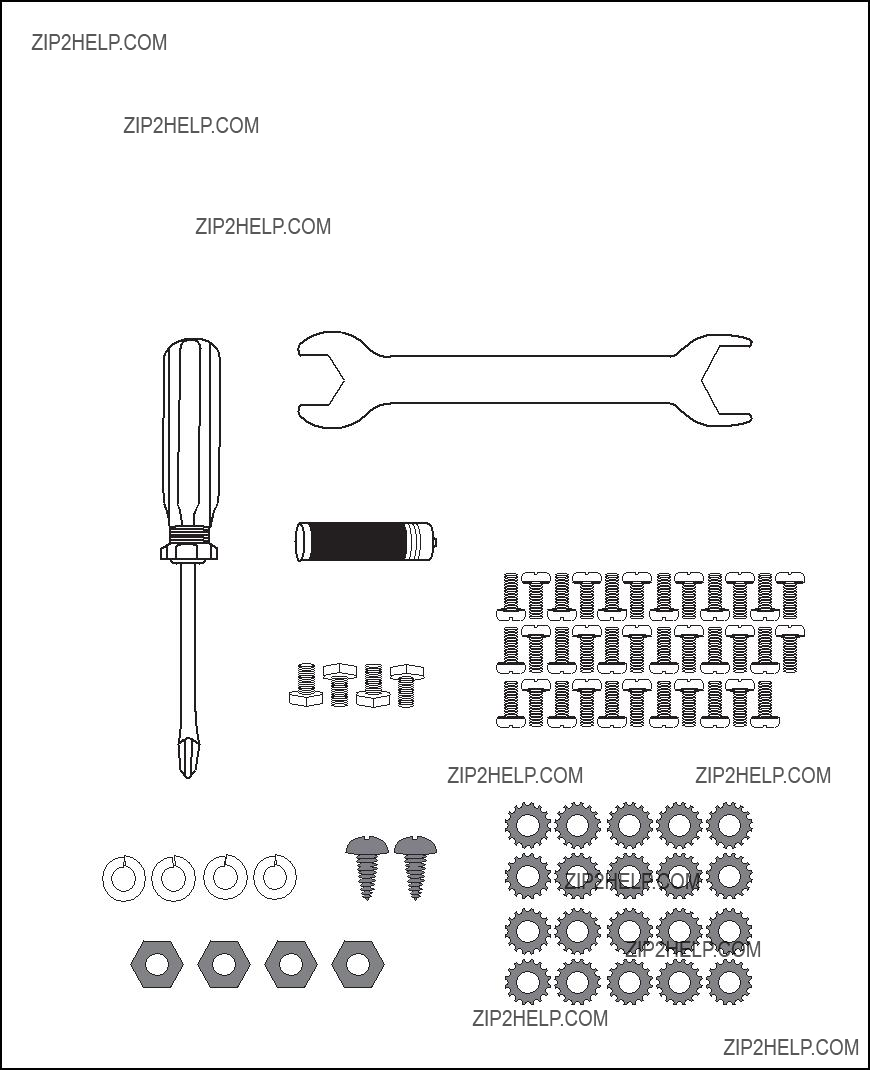
CONTENIDO DE LA BOLSA DE PARTES
Verifique que tiene todos los art??culos indicados en la LISTA DE PARTES y en el
CONTENIDO DE LA BOLSA DE PARTES antes de comenzar con el proceso de instalaci??n.
La bolsa de partes incluir?? lo siguiente:
Destornillador
Llave para Tuercas Hexagonales
Pila Alcalina AA/1.5 V
Pernos M6 X 12mm
(Negros)
Pernos Hexagonales
M6 X 12mm (Plateados)
Tuercas M6 (Negras)
52
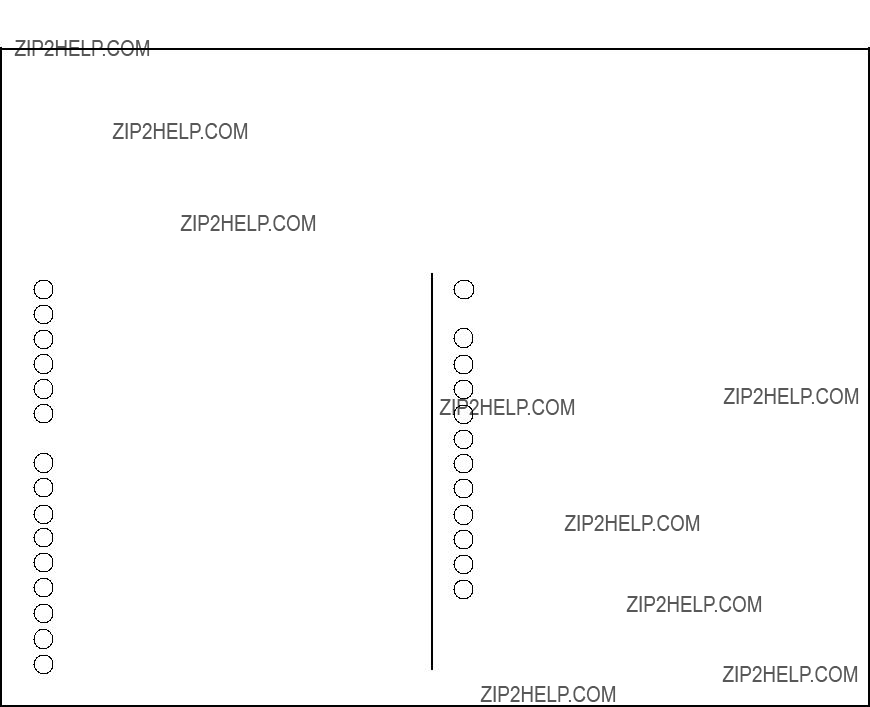
INSTRUCCIONES DE ARMADO
 LEA DETENIDAMENTE TODAS LAS ADVERTENCIAS DE SEGURIDAD
LEA DETENIDAMENTE TODAS LAS ADVERTENCIAS DE SEGURIDAD
E INSTRUCCIONES ANTES DE ARMAR Y USAR LA PARRILLA
RECOMENDAMOS QUE ESTA UNIDAD SEA ARMADA POR DOS PERSONAS
Se necesitan las siguientes herramientas incluidas para armar esta Parrilla de Gas ProSeries??? 8445:
???Destornillador
???Llave para Tuercas Hexagonale
LISTA DE PARTES:
11 Conjunto del Cuerpo de la Parrilla
21 Mesa Lateral Izquierda
31 Conjunto de la Hornilla Lateral
41 Toallero de Mesa Lateral
51 Toallero de Hornilla Lateral
61 Panel Frontal de la
Mesa Lateral Izquierda
71 Panel Frontal de la Hornilla Lateral
81 Bot??n del Encendedor Electr??nico
91 Resorte del Encendedor Electr??nico
101 Perilla de la Hornilla Lateral
111 Bisel de la Hornilla Lateral
121 Rejilla de la Hornilla Lateral
131 Rejilla para Calentar
144 Rejillas para Cocinar
154 Placas de Distribuci??n de Calor
161 Bandeja para la Grasa con Escudo de Calor
171 Gaveta para Grasa
181 Soporte para Tanque
191 Panel Izquierdo del Carro
201 Panel Trasero
211 Soporte para la Puerta
221 Panel Derecho del Carro
23 2 Puertas
242 Barras para detener Tanque
251 Base del Carro
264 Ruedas Trabables
271 Escudo Contra Calor para Manguera
53
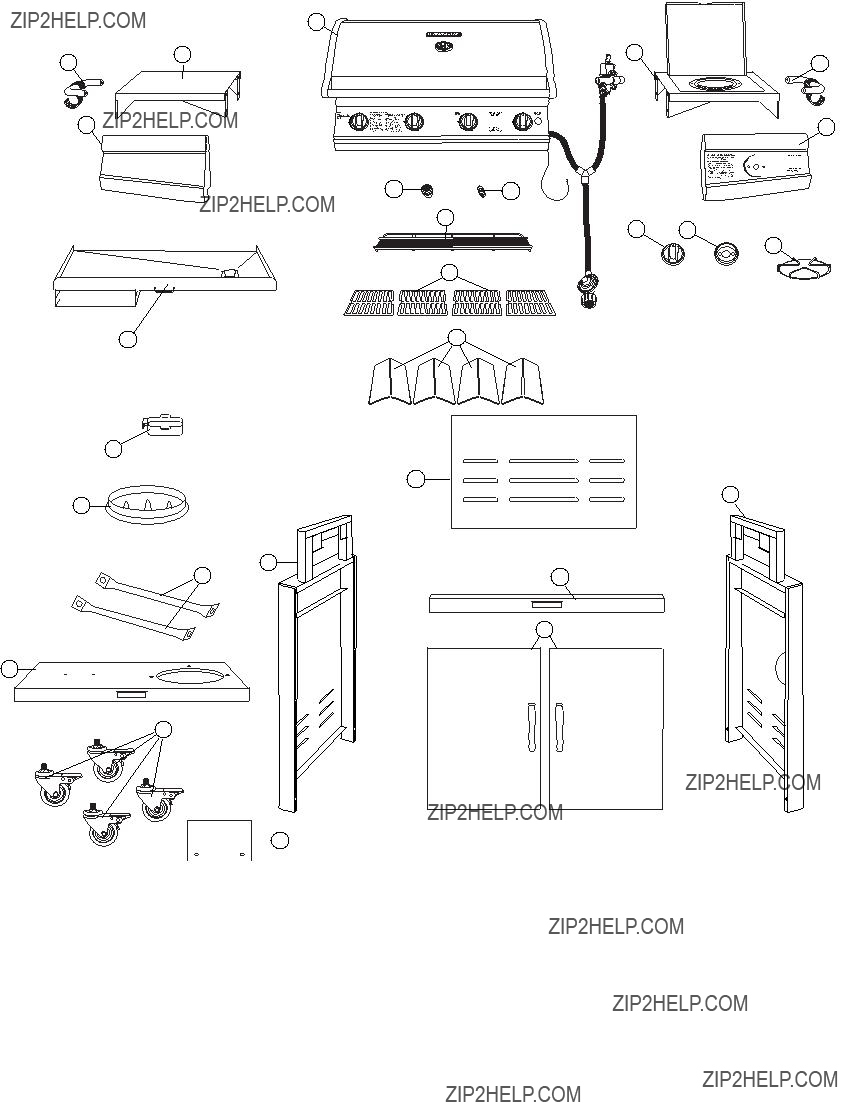
17
20
22
18
25
26
 27
27
PARA CUBIERTAS, ACCESORIOS Y OTROS PRODUCTOS, FAVOR DE VISITARNOS POR LA RED MUNDIAL EN: www.brinkmann.net
PARA PARTES DE REEMPLAZO DE PARRILLA BAJO GARANTIA, FAVOR DE VISITARNOS POR LA RED MUNDIAL EN: www.grillpartsonline.com
(Se requerir?? el comprobante de compra.)
Inspeccione el contenido de la caja para verificar que todas las partes est??n incluidas e intactas.
54
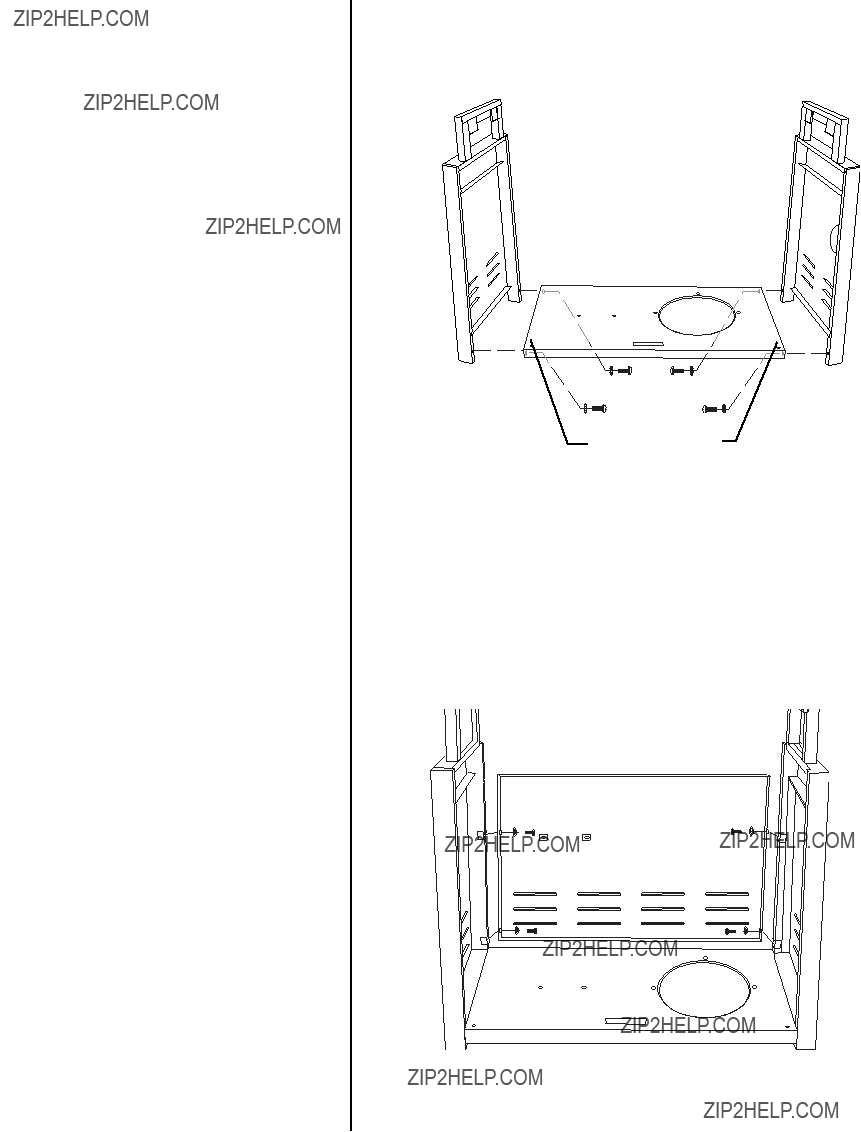
Elija un lugar adecuado y despejado para armar la parrilla y p??dale a un amigo que le ayude. Tienda cart??n sobre el suelo para proteger el acabado de la parrilla y el ??rea de armado.
 PRECAUCI??N: Algunas partes pueden tener bordes afilados. P??ngase guantes de protecci??n si es necesario
PRECAUCI??N: Algunas partes pueden tener bordes afilados. P??ngase guantes de protecci??n si es necesario
Paso 1
Conecte la base del carro a los paneles laterales. Inserte cuatro pernos M6 x 12mm (negros) y arandelas de estrella (negros) a trav??s de la base del carro y en las piernas y apri??telos bien. Aseg??rese de que los hoyos de la bisagra queden enfrente.
Paso 2
Ate el panel trasero al panel izquierdo y el panel derrecho del carro usando cuatro pernos
M6 X 12mm (negros) y arandelas de estrella (negras).
Agujeros para Pasadores de las Bisagras de las Puertas
55
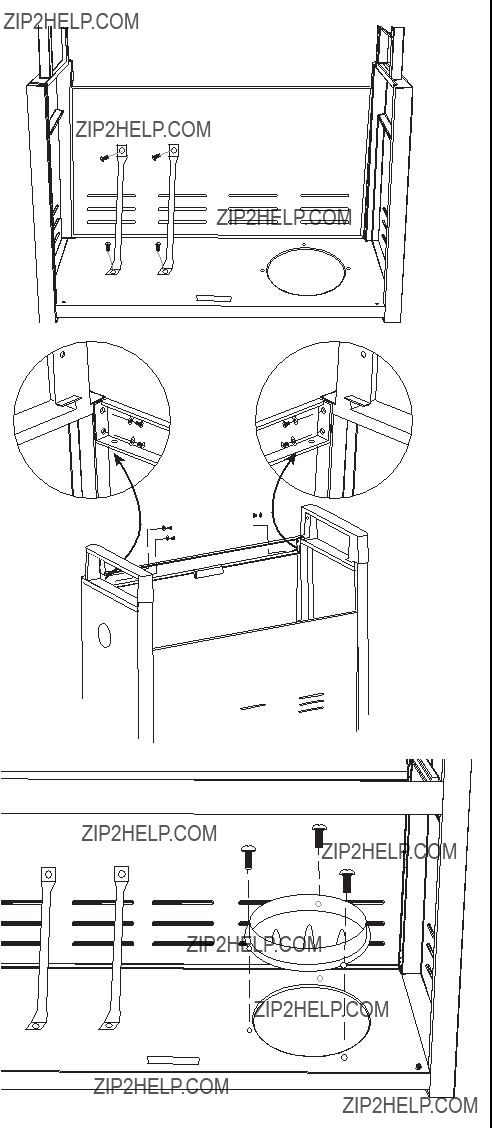
Delantero 

posterior
Paso 3
Ate las barras para detener el tanque a la base del carro y el panel lateral con cuatro pernos M6 x 12mm (negros).
Paso 4
Ate el soporte para la puerta con las piernas derecha e izquierda del carro usando cuatro pernos M6 X 12 mm (negros) y arandelas de estrella (negras).
Paso 5
Ate el soporte para el tanque a la base del carro con tres pernos M6 X 12mm (negros).
Nota: Voltee el conjunto del carro con la ayuda de un amigo. Trate de minimizar la tensi??n sobre los paneles laterales.
56
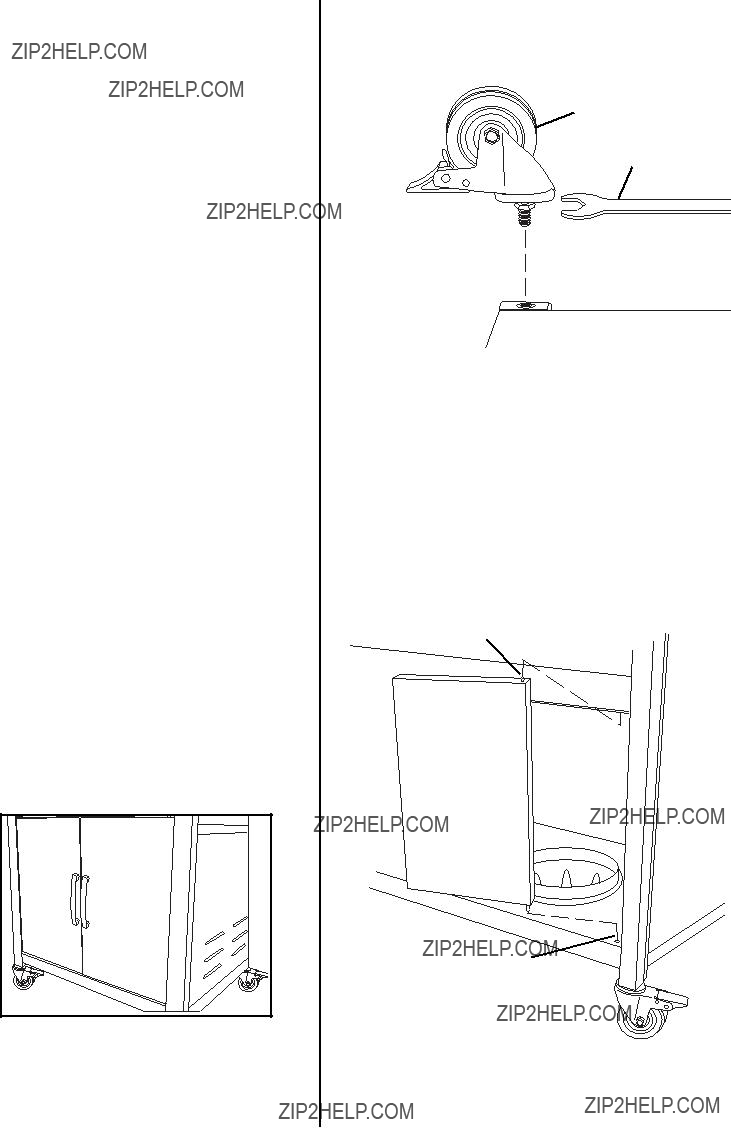
Paso 6
Instale las ruedas trabables en el extremo inferior de las piernas. Apriete bien los pernos de las ruedas con la llave para tuercas hexagonales incluida en el paquete de partes.
Nota: Voltee el conjunto del carro para que este de pie con la ayuda de un amigo. Trate de minimizar la tensi??n sobre las piernas. Trabe las ruedas para estabilizar la parrilla antes de llevar a cabo Paso 7.
Paso 7
Inserte el perno con resorte de bisagra de la puerta derecha al fondo de la puerta dentro del hoyo localizado en la puerta derecha del carrito. Entonces alinee la puerta con el soporte de la puerta. Suelte el perno con resorte de bisagra localizado arriba luego resbale la puerta hasta que el perno de bisagra inferior se puede soltar y agarrase del soporte inferior. Repite el procedimiento para la otra puerta.
RuedaTrabable
Llave para Tuercas
Hexagonales
Pasador de Resorte
Pivote de 
Puerta
Pivote
Inferior
57
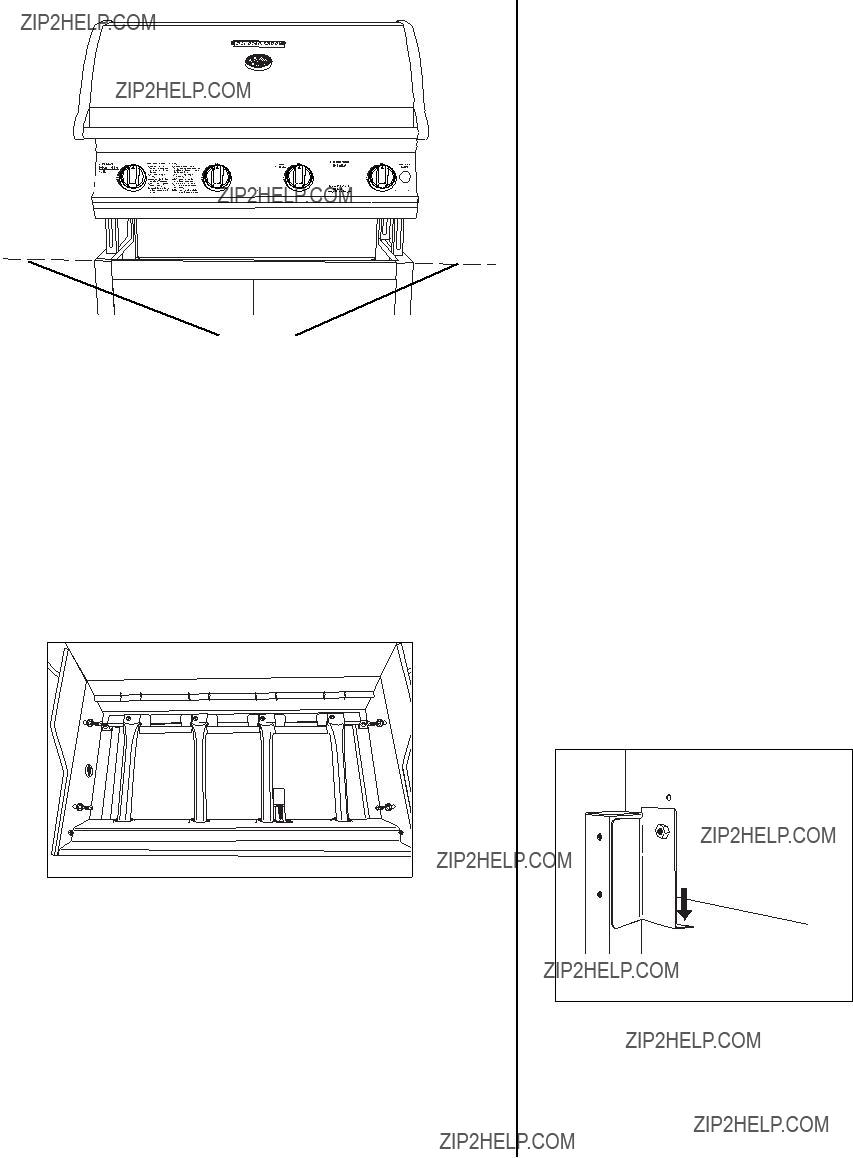
Alinee
Nota: Cuando ejecute el Paso 8, levante la caja de la parrilla desde los paneles frontales y traseros para prevenir lesiones a las manos y dedos.
Paso 8
Con la ayuda de un amigo, coloque la caja de la parrilla sobre el bastidor del carro. La caja de la parrilla se apoyar?? sobre la base angular de los soportes verticales. Alinee los agujeros de los pernos situados en la secci??n exterior de la caja de la parrilla. Sujete con cuatro pernos M6 X 10mm (negros) y arandelas de estrella (negras).
58
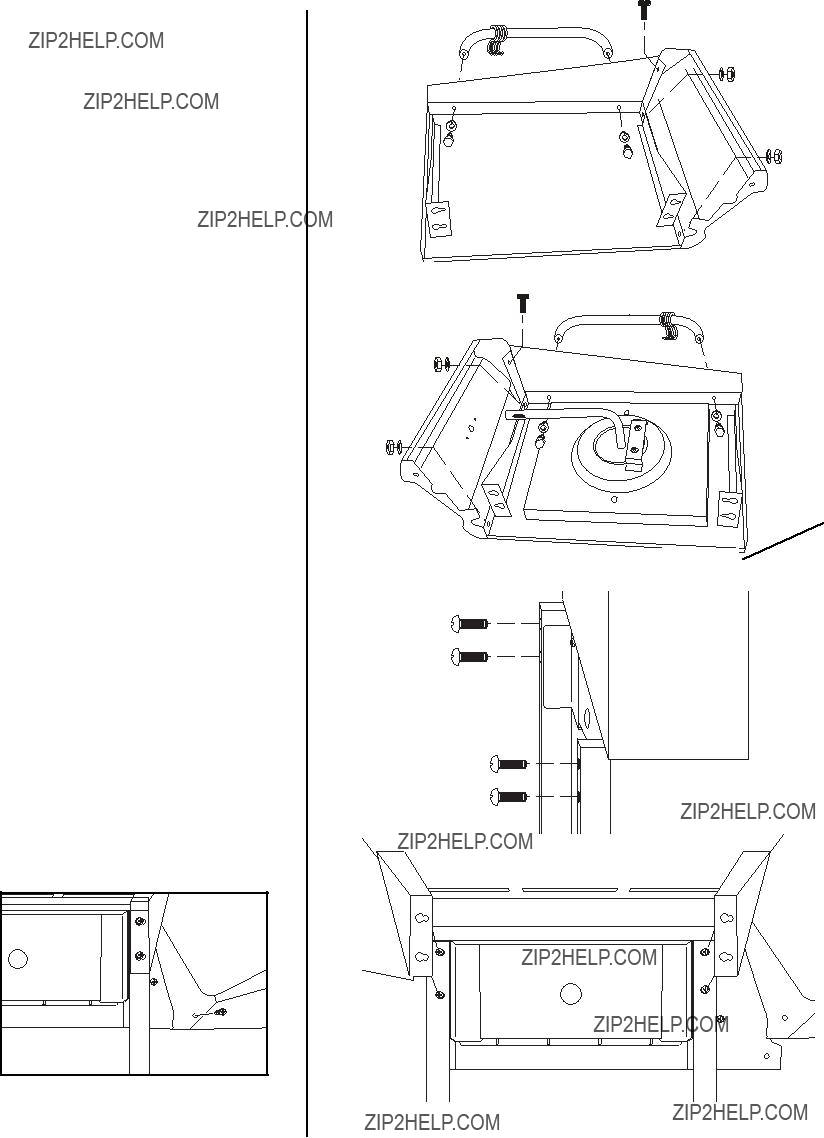
Paso 9
Conecte los ganchos al toallero de la mesa lateral. Ahora conecte la barra del toallero a la mesa lateral utilizando dos pernos hexagonales M6 X 12mm (plateados) y arandelas de resorte (plateados). Instale el panel frontal de la mesa lateral con un perno M6 X 12mm (negro) y dos tuercas M6 y arandelas de estrella (negras).
Paso 10
Conecte los ganchos al toallero de la hornilla lateral. Ahora conecte la barra del toallero al conjunto de la hornilla lateral utilizando dos pernos hexagonales M6 X 12mm (plateados) y arandelas de resorte (plateados). Instale el panel frontal de la hornilla lateral con un perno M6 X 12mm (negro) y dos tuercas M6 y arandelas de estrella (negras).
Hose Heat
Shield
Paso 11
Instale la mesa lateral izquierda a el lado izquierdo del conjunto del carro. Inserte dos pernos M6 X 12mm (negros) en ambas piernas izquierdas a la mitad. Coloque la mesa sobre los pernos y desl??cela hacia atras de la parrilla, luego apriete bien. Conecte el panel frontal de la mesa lateral a la caja de la parrilla con un perno M6 X 12mm (negros).
59
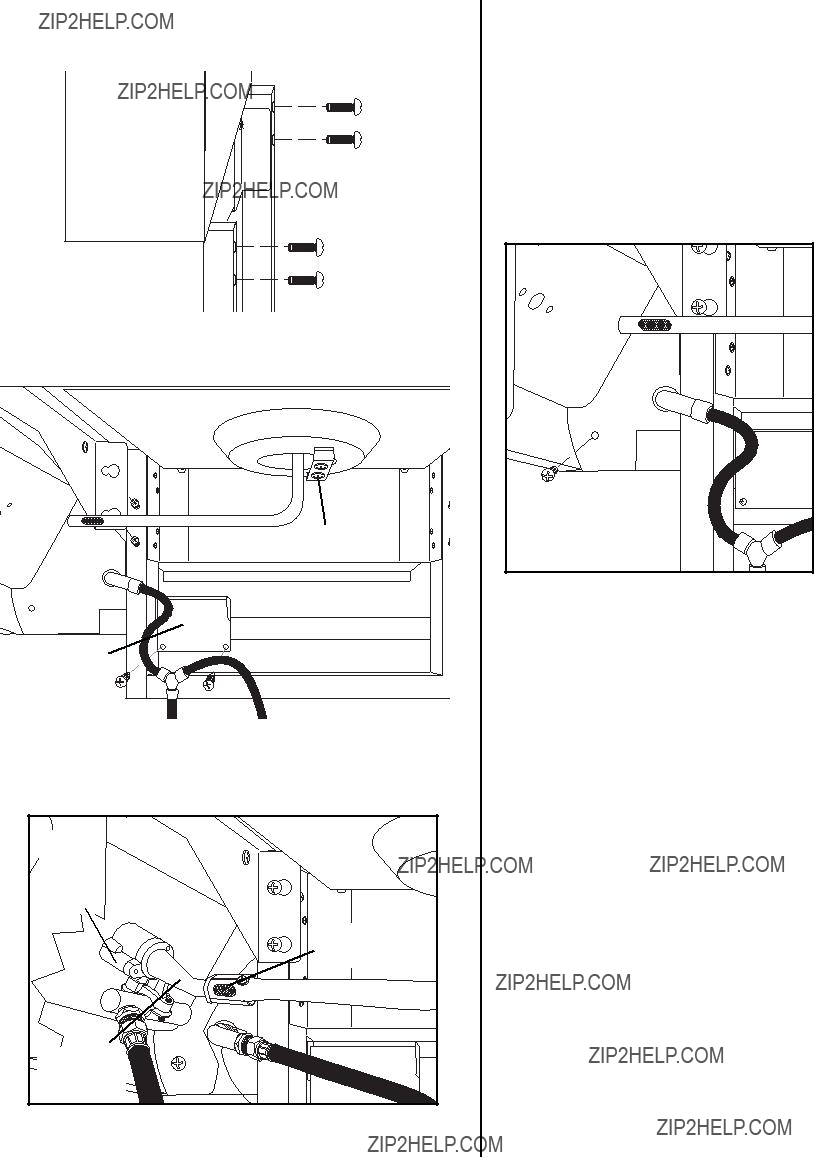
Paso 12
Instale el conjunto de la hornilla lateral al lado derecho del asamblaje del carro. Inserte dos pernos M6 X 12mm (negros) en ambas piernas derechas a la mitad. Coloque el conjunto de la hornilla sobre los pernos y desl??celo hacia atras de la parrilla, luego apriete bien. Conecte el panel delantero de la hornilla lateral a la caja de la parrilla con un perno M6 X 12mm (negros).
Paso 13
Con las arandelas, afloje los dos pernos M4 desde la parte inferior del soporte de ensamblaje del quemador. Gracias a ello, el quemador podr?? moverse libremente mientras lleva a
60
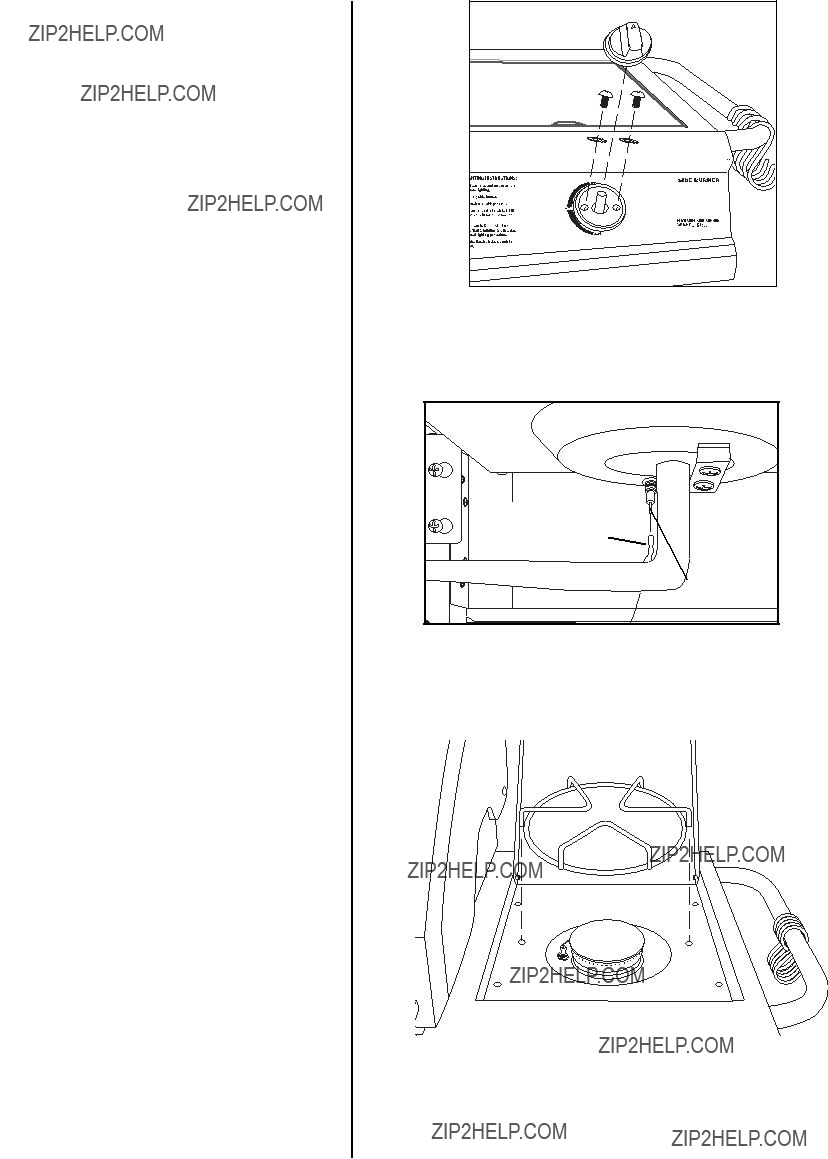
 ADVERTENCIA:
ADVERTENCIA:
Nunca use la parrilla sin haber verificado que no hay fugas en las conexiones y mangueras de gas. Consulte los procedimientos apropiados en la secci??n de "Pruebas de detecci??n de fugas" en este manual.
Paso 18
Coloque la rejilla de la hornilla lateral sobre la mesa de la hornilla lateral.
61
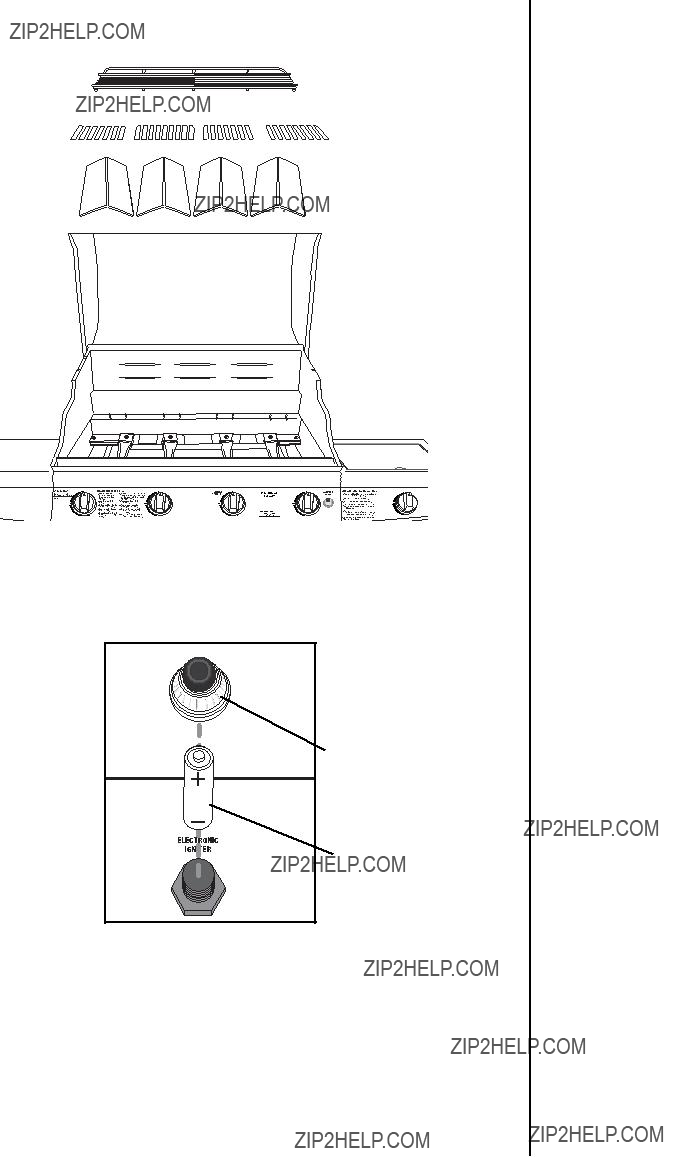
 Rejilla para Calentar
Rejilla para Calentar










 Rejillas para Cocinar
Rejillas para Cocinar
 Cubiertas T??rmicas
Cubiertas T??rmicas
Revestidas
 Soportes
Soportes
Tapa del
Encendedor
Paso 19
Coloque las placas de distribuci??n de calor en el nivel inferior de la caja de la parrilla, directamente sobre las hornillas.
Paso 20
Coloque las rejillas para cocinar sobre las costillas de apoyo directamente sobre las placas de distribuci??n de calor.
Paso 21
Inserte la rejilla para calentar sobre los soportes de la parrilla, de modo que quede asentada sobre las rejillas para cocinar.
Paso 22
Remueva la tapa del encendedor y coloque la pila con el extremo positivo hacia la tapa. Verifique que el resorte est?? en posici??n dentro
del encendedor. Coloque la tapa y verifique que esta funcionando
.
62
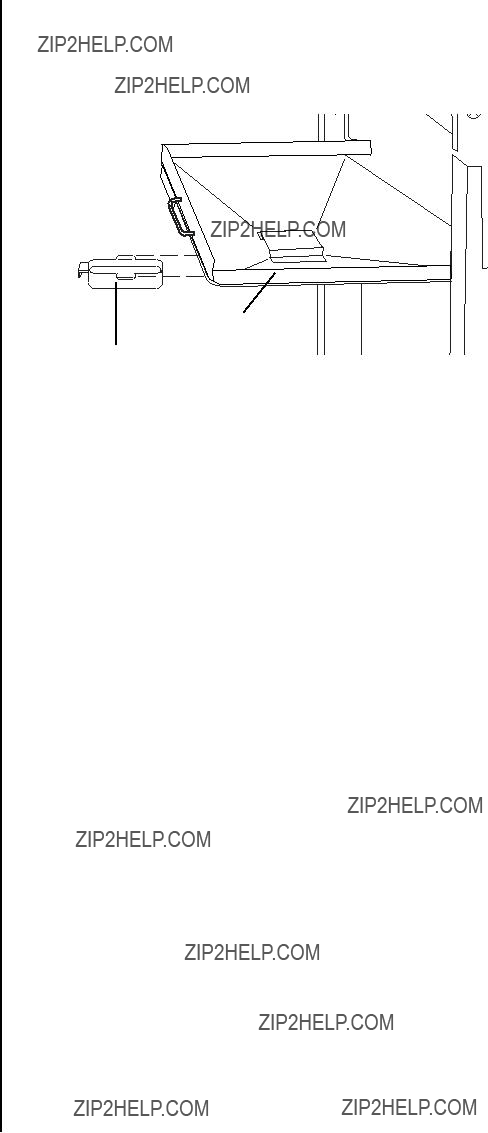
Paso 23
Inserte la bandeja de grasa en la abertura en el lado trasero de la parrilla. Aseg??rese de deslizar la bandeja sobre los rieles.
Paso 24
Inserte gaveta para grasa dentro de la bandeja de grasa. Resbale la gaveta en los vestigios como ilustrado.
Gaveta para Grasa
Bandeja para la Grasa
63
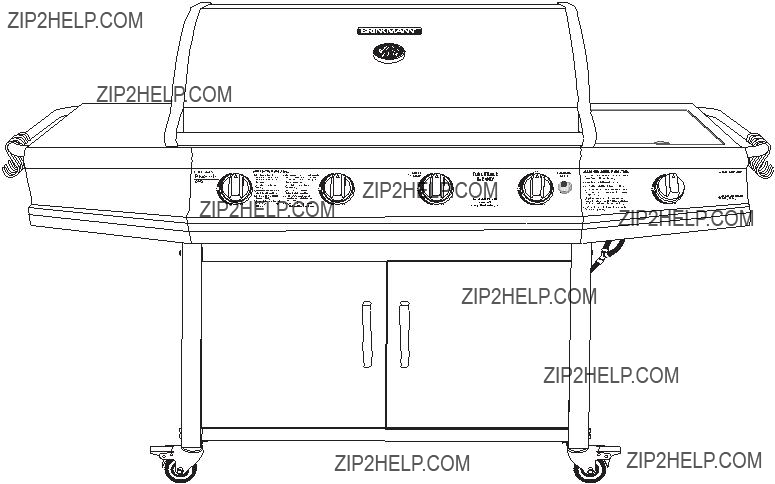
ProSeries??? 8445 (Armada)
64
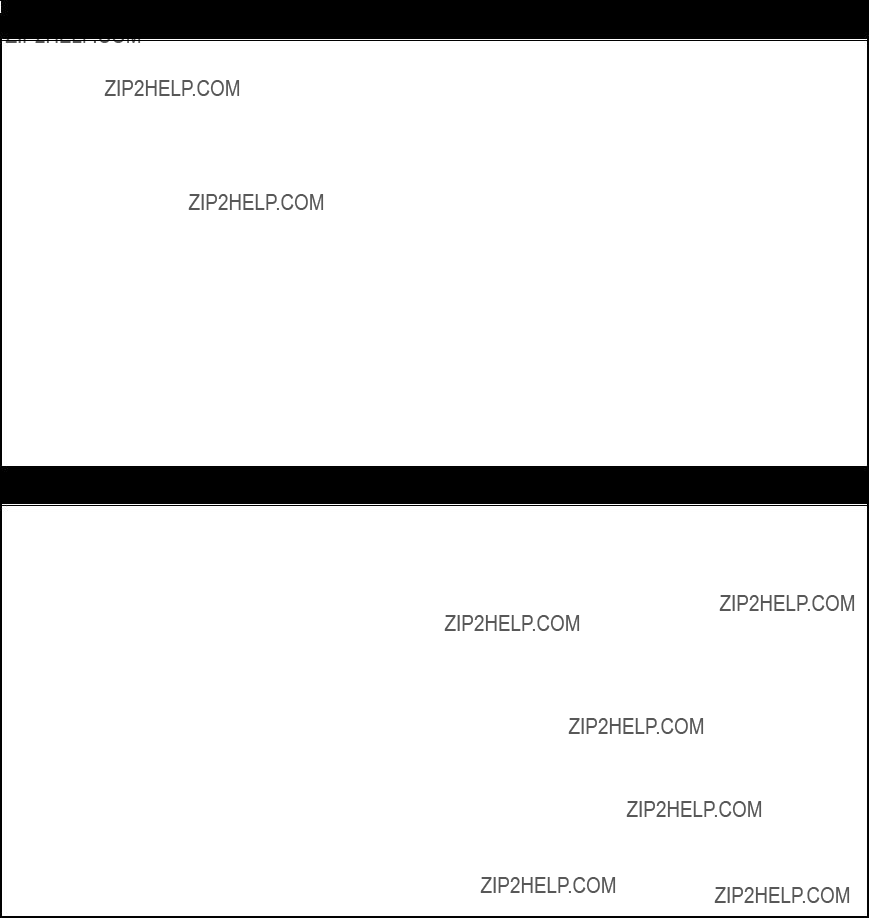
FOR COVERS, ACCESSORIES AND OTHER PRODUCTS, PLEASE VISIT US ONLINE AT: www.brinkmann.net
FOR GRILL WARRANTY REPLACEMENT PARTS, PLEASE VISIT US AT: www.grillpartsonline.com
PARA CUBIERTAS, ACCESORIOS Y OTROS PRODUCTOS, FAVOR DE VISITARNOS POR LA RED MUNDIAL EN: www.brinkmann.net
PARA PARTES DE REEMPLAZO DE PARRILLA BAJO GARANTIA, FAVOR DE VISITARNOS POR LA RED MUNDIAL EN: www.grillpartsonline.com
WARRANTY
The Brinkmann Corporation warrants to the original purchaser that the Brinkmann ProSeries??? 8445 is free from defects due to workmanship or materials for: Stainless Steel parts - Lifetime
Electronic ignition and burners - 2 Year Remaining parts - 2 Year
The Brinkmann Corporation???s obligations under this warranty are limited to the following guidelines:
???This warranty does not cover grills that have been altered/modified or damaged due to: normal wear, rust, abuse, improper maintenance and/or improper use.
???This warranty does not cover surface scratches, rust or heat damage to the finish, which is considered normal wear.
???The Brinkmann Corporation may elect to repair or replace damaged units covered by the terms of this warranty.
???This warranty extends to the original purchaser only and is not transferable or assignable to subsequent purchasers.
The Brinkmann Corporation requires reasonable proof of purchase. Therefore, we strongly recommend that you retain your sales receipt or invoice. To obtain replacement parts for your Brinkmann ProSeries??? 8445under the terms of this warranty, please call Customer Service Department at
EXCEPT AS ABOVE STATED, THE BRINKMANN CORPORATION MAKES NO OTHER EXPRESS WARRANTY.
THE IMPLIED WARRANTIES OF MERCHANTABILITY AND FITNESS FOR A PARTICULAR PURPOSE ARE LIMITED IN DURATION TO THOSE
LISTED ABOVE FROM THE DATE OF PURCHASE. SOME STATES DO NOT ALLOW LIMITATIONS ON HOW LONG AN IMPLIED WARRANTY
LASTS, SO THE ABOVE LIMITATION MAY NOT APPLY TO YOU.
ANY LIABILITY FOR INDIRECT, INCIDENTAL OR CONSEQUENTIAL DAMAGES ARISING FROM THE FAILURE OF THE BRINKMANN PROSERIES??? 8445
TO COMPLY WITH THIS WARRANTY OR ANY IMPLIED WARRANTY IS EXCLUDED. CUSTOMER ACKNOWLEDGES THAT THE PURCHASE PRICE
CHARGED IS BASED UPON THE LIMITATIONS CONTAINED IN THE WARRANTY SET OUT ABOVE. SOME STATES DO NOT ALLOW THE EXCLUSION
OR LIMITATION OF INCIDENTAL OR CONSEQUENTIAL DAMAGES, SO THE ABOVE LIMITATION OR EXCLUSION MAY NOT APPLY TO YOU. THIS
WARRANTY GIVES YOU SPECIFIC LEGAL RIGHTS, AND YOU MAY ALSO HAVE OTHER RIGHTS WHICH VARY FROM STATE TO STATE.
GARANT??A
The Brinkmann Corporation garantiza al comprador original que la parrilla Brinkmann ProSeries??? 8445 est?? libre de defectos de materiales o mano de obra: Piezas de acero inoxidable ??? garant??a de por vida
Encendedor electr??nico y hornillas ??? 2 a??os de garant??a El resto de las piezas ??? 2 a??os de garant??a
Las obligaciones de The Brinkmann Corporation con respecto a esta garant??a se limitan a lo siguiente:
???Esta garant??a no cubre parrillas que hayan sido alteradas/modificado o da??adas debido a: uso normal, herrumbre, maltrato, mantenimiento inadecuado y/o uso inapropiado.
???Esta garant??a no cubre rayones superficiales, da??o por herrumbre o por calor al acabado, lo cual se considera como uso normal.
???The Brinkmann Corporation puede decidir reparar o reemplazar las unidades da??adas cubiertas bajo los t??rminos de esta garant??a.
???Esta garant??a se otorga al comprador original ??nicamente y no es transferible o asignable a los compradores posteriores.
The Brinkmann Corporation exige un comprobante de compra razonable. Por lo tanto, le recomendamos enf??ticamente que retenga su recibo o factura de venta. Para obtener partes de repuesto para la parrilla Brinkmann ProSeries??? 8445 bajo los t??rminos de esta garant??a, s??rvase contactar al Departamento de Servicio al Cliente al
devuelta a nosotros sin autorizaci??n previa.
EXCEPTO POR LO INDICADO ARRIBA, THE BRINKMANN CORPORATION NO OTORGA NINGUNA OTRA GARANT??A EXPRESA.
LAS GARANT??AS IMPL??CITAS DE COMERCIABILIDAD Y ADECUACI??N CON UN FIN EN PARTICULAR SON DE DURACI??N LIMITADA DE ACUERDO
A LO INDICADO ARRIBA A PARTIR DE LA FECHA DE COMPRA. ALGUNOS ESTADOS NO PERMITEN LIMITACIONES DE DURACI??N DE UNA
GARANT??A IMPL??CITA; POR LO TANTO, LA LIMITACI??N ANTERIOR PODR??A NO SER APLICABLE EN SU CASO.
SE EXCLUYE CUALQUIER RESPONSABILIDAD POR DA??OS INDIRECTOS, INCIDENTALES O CONSIGUIENTES DERIVADOS DE LA FALTA DE
CUMPLIMIENTO DE ESTA GARANT??A O DE CUALQUIER GARANT??A IMPL??CITA DE BRINKMANN PROSERIES??? 8445. EL CLIENTE RECONOCE QUE
EL PRECIO DE COMPRA COBRADO SE BASA EN LAS LIMITACIONES CONTENIDAS EN LA GARANT??A ANTERIOR. ALGUNOS ESTADOS NO
PERMITEN LA EXCLUSI??N O LIMITACI??N DE LOS DA??OS INCIDENTALES O CONSIGUIENTES; POR LO TANTO, LA LIMITACI??N O EXCLUSI??N
ANTERIOR PODR??A NO SER APLICABLE EN SU CASO. ESTA GARANT??A LE OTORGA DERECHOS LEGALES ESPEC??FICOS Y USTED PUEDE
TENER ADEM??S OTROS DERECHOS QUE VAR??AN DE UN ESTADO A OTRO.
??2007 The Brinkmann Corporation
Dallas, Texas 75244 U.S.A
www.brinkmann.net
Owner???s Manual for Model Manual del Propietario para el Modelo